Venice, Italy Map & Travel Guide
Each sestieri of venice has its romantic charms.
- Italy Maps >
Confused when folks mention the Cannaregio? Our tourist map of the neighborhoods should help.
Why go to Venice? Venice is the largest city in the Veneto region of Italy. The city is constructed masterfully upon the murky lagoon, whose waters surround it, protected from the Adriatic by a strip of land, a barrier island called the Lido .

Map of Venice Showing the Neighborhoods or “Sestieri” of Venice

Getting Your Bearings in Venice
The map shows Venice's six sestieri. If you counted seven it's probably because Giudecca is really part of the Dorsodouro.
You will probably arrive in Venice via one of three transportation modes. If you are coming in by train or car, you'll enter Venice on the upper left of the map. The train will stop in Mestre before taking the Venice Railway Bridge (1846) and stopping at Venice Santa Lucia station in the Canneregio sestiere. Arrivals by car veer off at the adjacent Fascist era Ponte della Liberta and will be routed to the Piazzale Roma, marked by a red box on the map--or to the ship terminal to the left marked by the white area. You will park in the lot at Piazzale Roma and leave the car . Do not try to drive in Venice as a recent tourist did, just because the city's walkways are shown on a Google map. Cars are banned in Venice. Google maps show everything on Earth. Not everything is a road.
Otherwise, you'll arrive in Venice at the Venice Marco Polo airport , about six kilometers north of the city. The NASA map below shows the bridge to the mainland, the lagoon, Venice and islands, and the airport--with a string of water taxis going back an forth that appears as a white froth in the water. You can get a transfer for a water taxi direct to your Venice hotel from Viator .
Trust me, you want to arrive on the train. Grab your bags and head for the station exit. Just outside is Venice. Not a parking lot. Real Venice. It's like getting off the train and immediately finding yourself in a movie looking down at your dream city. There is nothing like it. Italy's most unique city spreads itself before you like a steamy movie set. Bam! There is no worrying about a taxi, about how you're going to enter the city, it's just there.
There's lots here to see, lots of tickets to amazing things. Here's a page with the top 5 things to do in Venice and more from our partner Tiquets.
One other thing: don't miss the smaller islands. We liked Torcello. The Cathedral of Santa Maria Dell’Assunta, built in 639, with its Byzantine frescoes is quite spectacular. You can get there on public transportation from the island of Burano on vaporetto line 9. But a guided tour of three islands, Murano, Burano & Torcello is probably more convenient and time saving.
View of Venice From Above
Note that the photo is oriented with north to the right of the picture.
The Lido is the complete "barrier island" in the bottom center of the photo.

Both maps show the central canal that snakes through the heart of Venice. This is Venice's watery Superstrada, a place where the vaporetti (big bus boats), Gondolas, Traghetti (transport Gondolas to cross the canals) and larger service vessels zoom the s-curve. It's the Grand Canal, and its main symbol is a bridge, the tourist favorite Rialto.
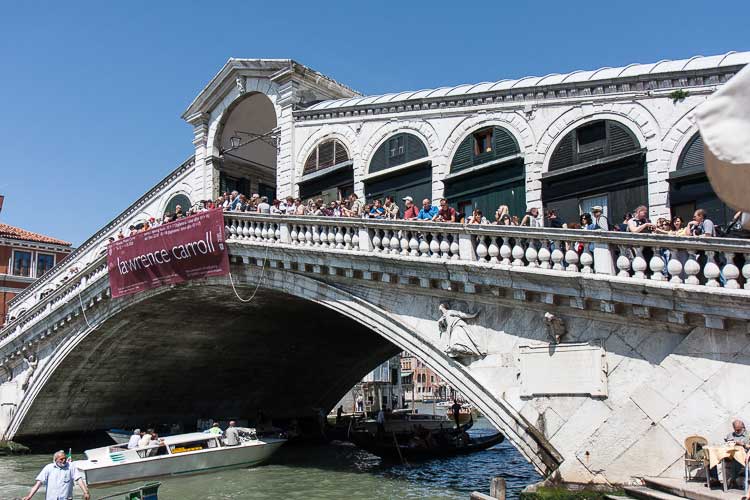
Venice Neighborhoods, the Sestiere
Each of the six Sestieri have their specific charms and tourist attractions. Every traveler has a favorite. Here is a quick assessment of them.

Cannaregio is a large sestiere that stretches from Santa Lucia train station to the Rialto Bridge along the north side of Venice. Cannaregio has picturesque squares and canals and many residents live in this sestiere, giving it local flavor. The Jewish Ghetto is here, centered around the Campo di Ghetto Nuovo, marked on the map. North of the campo is a series of east-west trending fondamente . A fondamenta or riva is a sidewalk along the edge of a canal, like the one shown in the picture on the right (and note that the fondamente are wonderful to walk at night). Fondamenta Misercordia is a good place to find restaurants. There are many shops, cafes, and wine bars along the fondamente. This is a very good place to rent a vacation apartment to live like a local, especially if the apartment has an altana , a Venetian roof terrace.
Another advantage of the Cannaregio is that you won't have too far to walk with your luggage from the train station. Exploring the rest of Venice on foot is easy.
Cannaregio Vacation Rentals Cannaregio Hotels
Castello Sesteire is another place people like to stay. Castello is the quiet side of Venice. Tourists don't throng there, so in the evenings walking is pleasant. Boats for the islands of Murano and Burano leave from the Fondamenta Nove along the Northern lagoon. The Arsinale is here; the world's first assembly line whose shipbuilders were evidently fueled on great amounts of wine , could crank out a copy of a galley, the famous Venetian warship, during a typical Italian lunch.. A very interesting museum, the Venice Naval History Museum , is often overlooked by tourists. La Biennale di Venezia Arsenale is near the Museum.
Castello Vacation Rentals
This is the sestiere most favored by tourists; it's where you'll find the famous Piazza San Marco , Europe's "drawing room". Here, besides sitting down to a very expensive coffee, you can see St. Marks Basilica and the Campanile (bell tower), Doge's Palace, Museo Correr, Archaeological Museums and the Biblioteca Nazionale Marciana.
For an off the beaten track Venice excursion, head for the campo San Maurizio to visit the Museo della Musica .
Many of Venice's top luxury hotels are stuffed into San Marco near the square, like the Baglioni Hotel Luna .
San Marco Vacation Rentals San Marco Hotels
Dorsoduro is a large sestiere located across the Accademia Bridge from San Marco. It is home to the Accademia Museum and Guggenheim Art Collection, two of Venice's top museums. It's bounded on the south by the Guidecca Canal and the walkway along the canal is tranquil and scenic. Much of Venice's university is in Dorsoduro. Campo Santa Margherita is a popular spot during the day and has a fish and vegetable market. It's one of the best areas for nightlife, too.
Dorsoduro Vacation Rentals Dorsoduro Hotels
The Rialto Bridge connects San Marco to San Polo, one of the oldest parts of Venice. At the foot of the Rialto Bridge in San Polo you'll come across the huge Venice fish market and open-air vegetable market, a good place to visit in early morning. San Palo has many food shops and bars and very good restaurants. It's a small but pretty sestiere with remnants of its medieval roots. The Frari church holds some Titian masterpieces.
San Polo has fewer hotels but there are some good bargains here. It's also a good place for a quieter gondola ride such as the Venice Gondola Ride and Serenade that can be booked through Viator, especially if you feel uncomfortable discussing the price of a ride with the gondolier .
Santa Croce
Santa Croce is next to San Polo along the Grand Canal. If you're arriving in Venice by bus or taxi this is the closest sestiere, and it's not far from the train station. Santa Croce is one of the least touristy parts of Venice and another of the oldest areas. The oldest parts of the University are in Santa Croce. It's home to one of Venice's most expensive restaurants, la Zucca , but also many good pizzerie. The tranquil Campo San Giacomo dell'Orio is a top gathering spot in the sestiere. IN Ca' Pesaro you'll find a Baroque palace housing Venice's Museum of Modern Art.
Vacation Rentals in Santa Croce Hotels in Santa Croce
Other Venice Lodging Options
Venice presents a very nice opportunity to splurge, but if you're short on cash there are always some bargain options. Hostels, for example, aren't just for kids any more. Many offer private rooms and even suites. To see real-time prices and locations of hotels and vacation rentals, use the map below.
Compare Prices on Rated Venice Hostels

Venice Weather and Climate
Venice can be hot and humid in July and August, so as usual it's best to go in the shoulder seasons if the climate is a major factor in your vacation travel planning. September and October tend to be good times to go, but wait later and you'll get some interesting weather, including the clouds and chop in the picture above. Venice floods often in winter, although some find it interesting to survive the Acqua Alta . Spring is possibly the best time to go to Venice; you'll have 7 hours of sunshine in May.
February is Carnevale time. Expect a foggy mist to heighten the oddity of your celebrations.
Find current weather and historic climate charts: Venice Weather and Climate
The Venetian Islands: Burano, Murano and Torcello
Like those colorful houses? Then Burano is for you. Interested in Venetian glass making? Gotta be Murano. And history? The island of Torcello, my favorite, was first settled in 452 and its cathedral is older than that of Venice itself. The button below leads you to a page of tours which includes a hop on, hop off boat to each of the islands.
More Venice Travel Resources
Before your trip you may wish to read what great writers have scrawled about Venice. See Historical Fiction Set in Venice .
Need to get from Florence to Venice? It's a popular route! See: How to get from Florence to Venice (and back again). If you'd like to find out the best attractions to stop at between the two major tourist cities, read Florence to Venice Travel .
Greece sound good? Here's how to get from Venice to Athens, Greece .
And then there's also: Unique things to do in Venice .
Learn How to Row a Gondola
A Gondola ride is pretty expensive, but you didn't come to Venice to save money, did you? For the price of a ride (or less) you can actually learn the basics of floating around Venice with a gondoletto , a training boat. Check out: Private Venice Gondola School: Learn How to Be a Gondolier .

Tours of Venice
One of my favorite tours takes you inside the Doge's Palace and gives you a peek at the prison where Casanova was held. The Cicchetti tour introduces you to one of the joys of eating in Venice, the little bites with a little glass of local wine.
If you like to do things on your own time with an audio guide to help you throught the rough parts, you might explore the fascinating La Fenice Opera House with a skip-the-line ticket.
Doge's Palace Guided Visit and Secret Venice Walking Tour Venice Food Tour: Cicchetti and Wine Tickets for La Fenice Opera House: Skip The Line + Audio Guide
Walking tours can get you in the mood to explore by taking you to the must-see places so that you can cross them off and explore the more hidden places.
Welcome to Venice: Walking Tour, St. Mark's Basilica & Gondola Ride Venice Boat Tour With Grand Canal And Tower Climb
Have fun in Venice!
Planning a Trip?
Here are some travel planning tools that are especially useful if you're planning your first or second trip to Italy.
- Travel Planning Timeline : Learn what you need to plan when.
- What Will an Italy Vacation Cost? : Tools for budgeting your Italian vacation.
- Unplanned Attractions : Save time for the good life in Italy.

Maps of Venice and everything you need to know to navigate the city easily
If you landed on our article only with the intent of finding the best online map of Venice, we believe that your best option is Google Maps, with the Satellite Layer enabled.
If, however, you want to know more about Venice maps and learn a few tricks that will help you get around, keep reading our article!
The Map of Venice
It is a redfish made of houses?
Is it a maze floating on the ocean?
These are two questions that could come to your mind when looking at a map of Venice for the first time.

Although it is obvious that Venice is not a fish nor a maze, it is also true that Venice is unlike any other city in the world.
Its aspect can be as confusing when seen from above as it is when walking through its narrow alleys.
We created this article to get rid of any obstacles you might find in understanding how to move around the city .
On one side, we introduce you to the morphology of Venice and other general information, on the other we provide you with tips, tools, and resources to move around the city.
Are you ready? Let’s go!
Want more tips, tools and stories from Venice, Italy?
We're on a mission to make it easy and fun to discover and support the authentic Venice. Try our email and see for yourself!
Thanks for signing up! If there is no e-mail in your inbox in the next hour, remember to check your spam folder and to add us to your contact list. Thank you! Get access to our live videos and even more content: like us on Facebook to add daily goodness to your feed. A presto!
Oops! We're sorry, something went wrong. We'll fix it soon. In the mean time, you can like us on Facebook to stay in touch!
By signing up you agree with Venezia Autentica's privacy policy
Before being able to read a map of Venice and move around, it is crucial to understand how the city of Venice is made.
The first step to understanding a map of Venice
To understand how to move around Venice, we must understand how this unique city was built.
How was Venice built?
Venice is an ancient city measuring less than 8 square km, which is located in the middle of a shallow Lagoon.
Venice was built over the centuries on top of 117-118 little islands very close to each other that were just above the water level. On each small island, Venetians built a church, a square, a well, and the houses of those inhabiting it.
Only after the construction of the islands did the Venetians start building bridges, to connect the islands one to another physically.
These facts, introduce and answer the following (very popular) question.
Why does moving around Venice feel so complicated?
Since the buildings and alleys on every island were built without taking into consideration the design of the other islands surrounding it, the streets of neighboring islands are hardly ever aligned with each other.
As a consequence, there are almost no straight routes to move across the city!
Now you know why, looking at a map of Venice, you get the impression to be looking at a gigantic maze.
Related: What is Venice, Italy

Book an authentic experience in Venice
Now that you know how come Venice is surrounded by water, has canals, and looks like a maze, you are ready to examine and understand the map of Venice.
As mentioned above, at first glance the map of Venice may look like a fish made of houses floating in the middle the sea.
Actually, that description is sort of correct.
The map of Venice resembles a fish, its head on the left where the train station and the parking lot in P.le Roma are, its tail on the right where the Giardini and the Arsenale are.
The surface of Venice is almost entirely covered by human constructions, relatively small parks and gardens being the only exceptions.
Venice seems to be floating in the middle of the sea if looked at from a map, but… but that is not correct. Venice does not float on water, and the water surrounding the city is not a sea.
As mentioned before, Venice was built on little islands that were surfacing the shallow water of an almost entirely enclosed and calm body of water called the Venetian Lagoon.
But what else can we see when looking at a map of Venice?
One of the first things we can immediately spot by looking at a map of Venice is that a big canal seems to divide the city into two parts: a part on the top-right of the map, and one part on the bottom-left.
The Grand Canal in Venice
Venice has over 180 canals, but only one of them is called Grand. That is, of course, the Grand Canal.
The Grand Canal is over 4km long and has a width between 30m and 70m. It runs through the entire city of Venice, dividing it into two parts.
For almost 400 years these two halves of Venice had no physical connection with each other, and the only way to cross was via boat.
Only in ~1175 C.E., almost 400 years after the first settlements in Venice, did the Venetians build a pontoon bridge to connect these two sides of Venice.
In the same location, in 1588, Antonio da Ponte built what became the first, most important, and most famous bridge in Venice, the Rialto Bridge.
Today, there are four bridges crossing the Grand Canal and connecting the two halves of Venice.
Related: Everything you ever wanted to know about the Grand Canal in Venice, Italy
Is Venice divided in two?
No, trice that! Yes, Venice is divided in “sestieri,” six districts.
While the map of Venice shows a town divided only into two parts by a big waterway called Canal Grande, the city is historically divided into six districts, three on each side of the Grand Canal.
These six parts are the districts of Cannaregio, San Marco and Castello on the top and right of the map, and Dorsoduro, Santa Croce and San Polo on the center and bottom-left.
At the time of the Republic of Venice, the Serenissima, every district nominated one ducal councilor to assist and control the Doge of Venice, the head of state of the longest lasting Republic in history.
Related: How to create and run the longest-lived form of government ever: the case of the Republic of Venice
Historically there were rivalries between the districts of Venice, and today some light teasing still occurs regarding which is the best district in Venice. We honestly think it’s quite silly, as it is pretty obvious to us that the best sestiere in Venice is Cannaregio (where we live), of course!

Unlock a discount at the best local businesses in Venice
Has the map of venice always looked like this.
As we mentioned before, the city was built over a long period and its its look evolved over time. However, since the lagoon counted only a limited amount of islands, all the available space was soon occupied by the buildings.
Does this mean that the way Venice is today is exactly the way it was hundreds of years ago?
Not quite. To see how Venice changed, the best thing to do is to look at the most famous map of Venice, the “Veduta di Venezia”, the “View of Venice”, by Jacopo de’ Barberi. This map of Venice, created in 1500, is a gigantic woodcut made on 6 panels which measure a total 1,3 m x 2,8 m!

What is immediately apparent, is that 500 years ago Venice had gods and monsters fighting in Saint Mark’s Basin… ehm… [Fool-Mode OFF]
By comparing the Jacopo de’ Barberi map with a current map of Venice the thing that strikes us most is that, today, there seem to be fewer canals than in the past. As you can see, in some areas the map of Venice by de’ Barberi shows canals, where today there are streets instead.
Why are these two maps of Venice different? Did De' Barberi make a mistake?
Of course not! These two maps of Venice are different because, indeed, some canals have been transformed into walkable ways.
A canal that was turned into a street is called “Rio Terà,” where “rio” is the correct term for canals in Venice (Canal Grande, di Cannaregio, and della Giudecca are the exceptions) and “terà,” interrato, means “filled in with earth.”
Next time you look at a map of Venice, and you read the name “Rio Terà,” you will now know that there once used to be a canal!
Related: All the bad things Napoleon did and all Venetian know very well about! <– Article available soon
Now that you know a few more things about Venice, the way it was built, and why maps of Venice look like a maze, you’re ready to learn a few more things and some tips to best move around Venice.
Tips on moving around Venice
There are a few tips as well as some tools that help you to walk around Venice. Each of them has pros as well as cons, and it’s a good idea not to rely entirely on a single one to understand where you are in Venice and how to reach your destination.
Paper map of Venice:
Until recently, paper maps were the only kind of map of Venice available.
The most important feature of paper maps is the fact that they can be easily stored and carries and don’t need a device nor internet connection to access them.
However, paper maps of Venice also have two problems.
The first problem, which is common to all paper maps, is the lack of indication about where YOU are at a specific moment.
The second problem, which is less obvious, it that maps of Venice lack details. While Venice is just below 8 square km, its 2650 alleys, 433 bridges, and 182 canals are just impossible to fit into a map small enough to carry around and check at any time.
As a consequence, while paper maps of Venice are light, inexpensive, and don’t need a battery, they also oblige you to spend some time finding your location on the map, and they also can help you only up to a certain point, since they lack the detail that digital maps have.
Digital map of Venice:
We just mentioned one of the qualities of digital maps: detail!
On a digital map of Venice, you can zoom in all the way until you see wellheads on the squares and gondolas on the canals. Isn’t that amazing?
That’s not the only advantage, though. Digital maps also show your location with the click of a button, tell you how to go from point A to point B in real time, and they are for free!
Related: on Google Maps you can make us of a highly detailed map of Venice for free
Ah, technology is so cool! You can rely on it 100% of the time in everyday’s life as well as when traveling… until you can not. Wait, what?!
You read that right. We sure love Google Maps’ speed, ease of use, and everything else. Unfortunately, however, it needs a decent GPS signal for working, and that is often not the case in the very narrow alleys of Venice!
Venice is a unique and complex city. Therefore even Google struggles to provide users with clear directions and ways to get to a destination.
Therefore, you should see all Google Maps information as indicative.
If you have doubts about how to get to a particular place, don’t hesitate to use Google Maps and to politely ask for help to the people who know Venice the best: the Venetians!
Street Names and Signs:
Street names in Venice are painted directly on building walls, on white plaster surrounded by a black frame. In Venetian, they are called “nizioleti”, which means “small bed sheet”.
While nizioleti are now part of everyday life in Venice, they exist only since 200 years, after the end of the Serenissima.
In fact, for over a thousand years street names existed but were not written anywhere and were handed down orally. When Napoleon took over Venice, he demanded the new administration to record the names of all the alleys in and write them on the walls, making it easier for non-Venetian to move through Venice.
Street names, just like digital and paper maps, also present problems of their own. In Venice, in fact, many alleys around the city use exactly the same name! Just a few examples are the 31 different “calle del forno”, 16 “calle del magazen” and the 16 “calle dei preti”. This ambiguity required to develop a house numbering system that is quite bizarre and causes a lot of headaches.
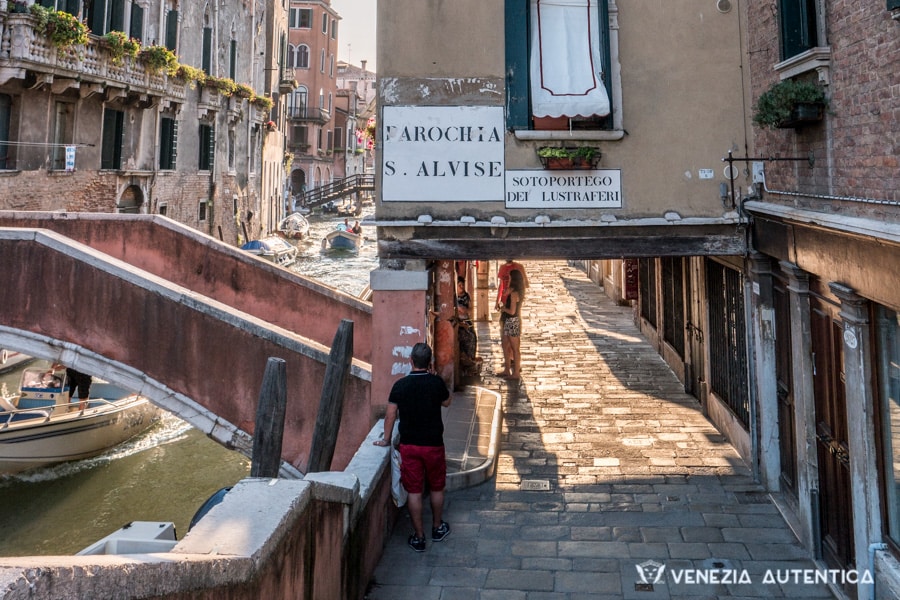
In more recent years, also street signs started appearing upon walls around Venice.
While these signs are easy to read and understand, they indicate only how to reach five important locations in Venice: San Marco, Rialto, Accademia, Train Station and Piazzale Roma (parking lot).
If you need to go anywhere else, well, don’t count on them!
Landmarks are your stars:
Venice has always been a city of merchants and sailors, so you shouldn’t be surprised if we encourage you to learn how to navigate the city following the stars.
Rather than stars, however, a trick for navigating through Venice is to make use of landmarks.

There sure are plenty of what people traditionally call “landmarks”, but the alleys in Venice greatly outnumber them.
This is why, for Venetians, anything can become a “landmark” to explain to each other where to meet.
When giving directions to each other, Venetians don’t just use famous landmarks such as the Salute Church, the Rialto bridge or Saint Mark’s, as there would be too few of them.
So, a landmark can be a supermarket, a school, a pizzeria, restaurant or clothes shop popular amongst the locals. i.e: “ti ga presente ea Maria dele pissette? Ecco, ea caleta de fronte, dopo el frutariol Bepi!” “you know Mary(‘s shop) who makes small pizzas, right? The small alley just in front of it, after the fruit and vegetable seller Bepi”
This way of navigating through the city, which is very common today, was even more popular at the time of the Serenissima when there were no street names nor signs on the walls.
In fact, “nizioleti” would have been of little help to the many people who could not read back in those days!
Instead, recognizing a church, a wine bar, or a famous apothecary would help locals orientate themselves and know exactly where to go.
Related: The Rialto head which was meant to be seen, and you didn’t notice
Know your direction:
You now know the usefulness as well as the limits of paper maps, digital maps, and street signs, and how to make use of landmarks to move around Venice.
We also mentioned the importance of understanding how the city was made and of having a mind map of Venice. That is an essential step not only for being able to use digital and paper maps proficiently but also to being able to walk around the city like a Venetian.
Locals don’t necessarily need to know every corner of the city to be able to walk around. Venetians just need to know the “direction” of their destination to be able to reach it.
The trick for walking around Venice as if guided by an invisible compass, in fact, is to visualize which way your destination is and remember that there are no straight lines for reaching it (now you know why we spoke of the importance of having a mind map of Venice!)
We realize it might sound complicated but, with a bit of practice, it’s not too difficult to learn how to best navigate through the Venice maze:
Know where your destination is on the map. Know which direction it is, from where you are. Know that there are no straight lines to get there.
If you ask locals for directions, the address number won't help you:
You’re looking at your map of Venice, you are using all the tricks you know, yet you can’t seem to get where you want? Well, you can ask a local for help, of course.
To do so, however, there is something you should know: don’t even mention the house number. Here’s why…
For over a thousand years, Venetians didn’t have house numbers.
However, in the XIX century, after Venice became part of the Austrian Empire, a house numbering system was put into place. Fabulous, right? No, not at all!
House numbers in Venice make no sense, at all. Not even to the Venetians, trust us.
Unlike anywhere else, in fact, the numbers do not “reset” for every alley but grow throughout a district instead.
This means that one building somewhere in a district is numbered “1”, and the other buildings are numbered “2”, “3”, and so on… all the way up to “6828” as is the case of the Castello district!

As a consequence, if you ask a local for “Cannaregio, 4621”, he will shrug his shoulder and say “I’m sorry, I don’t know”.
Instead, make sure to check out which landmark or church is closest to your destination and ask a local how to reach it. He/she will then be able to give you the right directions to get there.
Once you are close to your destination, someone living or working there will be able to tell you how to reach the alley you’re looking for.
You now know everything there is to know to move by foot around Venice. But what if you want to use public transportation?
Well, in that case, it is useful to learn a few things about how public transportation lines serve the city.
Public Water Transportation Map of Venice:
Don’t be scared by this particular map of Venice you can see below. The way the water transportation system in Venice works is pretty simple and quite efficient.

Download: Public Water Transportation Lines in Venice Map in HD
Explanation of the public water transportation lines:
Because Venice is so densely built, the relatively big public transportation boats can only navigate either around Venice or on the Grand Canal, the most important canal in Venice, which passes in the middle of the city.
Main public water transportation lines through the city:
The main lines on the Grand Canal are line number 1 and line number 2.
Line number one navigate from one end of the Grand Canal all the way to the Lido, and the opposite direction as well. It halts at every single stop.
Line number 2, which also goes both ways, stops only at the most trafficked stops on the Grand Canal and ends at San Marco Vallaresso. (Line number 2 continues all the way to the Lido in the summertime.)
Pay attention, if you take Line number 2 from San Zaccaria station, you will navigate AROUND Venice, on the Giudecca Canal.
Main public water transportation lines around the city:
4.1 (and 4.2): This line Leaves from “F.te Nuove” in Venice. It goes straight to Murano, circles around Murano, comes back to Venice, circles around Venice including Giudecca, and ends back at F.te Nuove.
Line 4.1 goes counter-clockwise. 4.2 goes clockwise
5.1 (and 5.2): Leaves from Lido, circles around Venice including San Marco (San Zaccaria), and ends back at Lido
Line 5.1 goes counter-clockwise. 5.2 goes clockwise
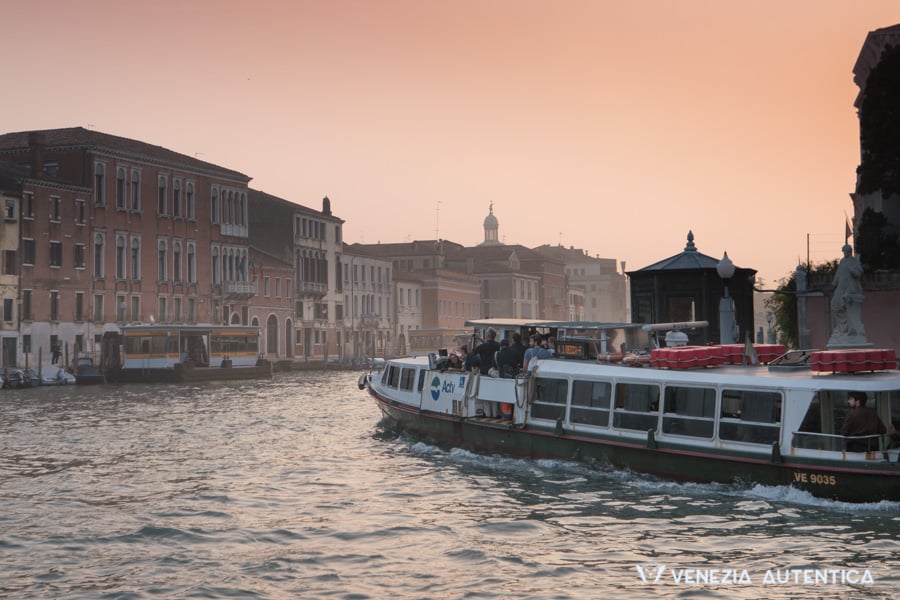
What about the other lines? How do I get from this station to that station? At what time do they leave? How long does the ride take?
Don’t worry. There is a simple solution to all these questions…
Chebateo, a very handy website and app service:
Chebateo is an easy to use service, available both as a website and as a phone app on Android phones and on iPhones, which tell you exactly which lines you need to take to go from one stop to another.
Just type in the station from which you leave, the one you want to reach, and the desired time of departure. The service will tell you which line(s) you need to take and the total length of the journey. Easy!
And, of course, now comes the most important resource of them all: the map of Venice we created to help you all discover the city and make a positive impact on the lives of the locals by supporting local businesses!
Venezia Autentica's Interactive Map of Venice
Our interactive map of Venice displays our selection of authentic local businesses where to eat, drink, and shop as well as famous Venetian landmarks, points of interest and fabulous view points.
This map of Venice was created to complement our work and mission by making it easier for you to get the best our of your stay in Venice and discover the authentic Venice, while supporting quality local businesses.
Every pin on our interactive map of Venice is linked to its page on our website, and it can be accessed with 1 click. There, you will find a description and pictures, as well as useful information such as the exact address, telephone numbers, opening times, etc.
As of today [January 2019], our interactive map of Venice already counts almost 200 locations (and the pages linked to them!), but our work is still in process.
We recommend to bookmark the “Interactive Map of Venice” page, to have a quick access to the map of Venice and hundreds of locations from which to chose from!
We hope that our article gave you all the tools you need to make use of any paper, digital, and interactive map of Venice.
Now, before you plan your trip to Venice, make sure to check out the resources below to make the best out of your time here:
I'm visiting Venice. Why should I follow your recommendations?
The way you visit Venice has an impact both on the quality of your experience and on Venice itself. Chilling, exploring, shopping, eating and drinking where the locals do, can make a huge impact both on the memories you bring home and on the local economy and community.
POPULAR POSTS LIKE THIS
Best Places where to eat and drink like a local in Venice Interactive map of the best authentic local businesses and places where to eat & drink in Venice Why eating and drinking at authentic local businesses matters
Liked this article? Don’t forget to share the love!
Home >> Visiting Venice >> Tips and Inspiration >> You’re Here
Tips and Inspiration to experience Venice
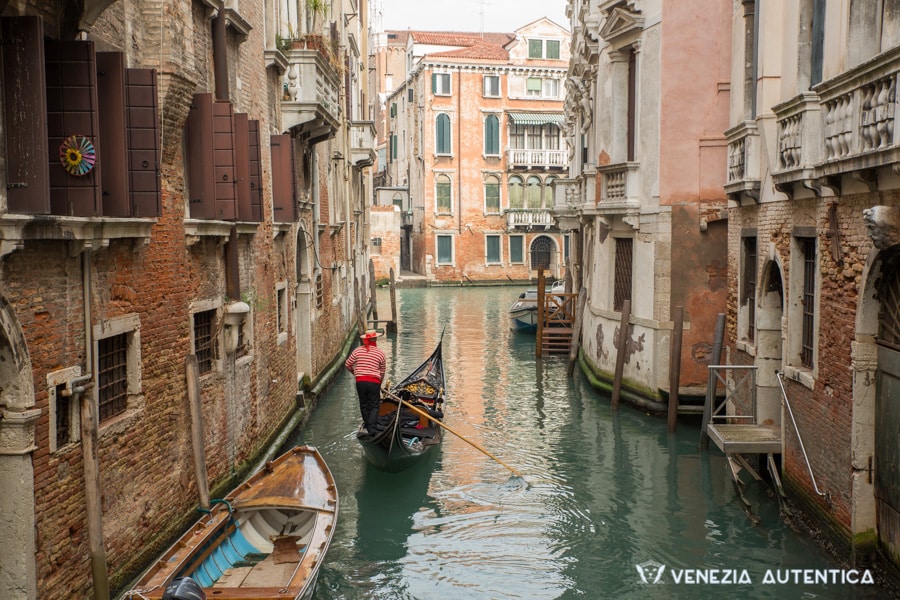
Want to go on a gondola ride in Venice? Here’s everything you need to know!
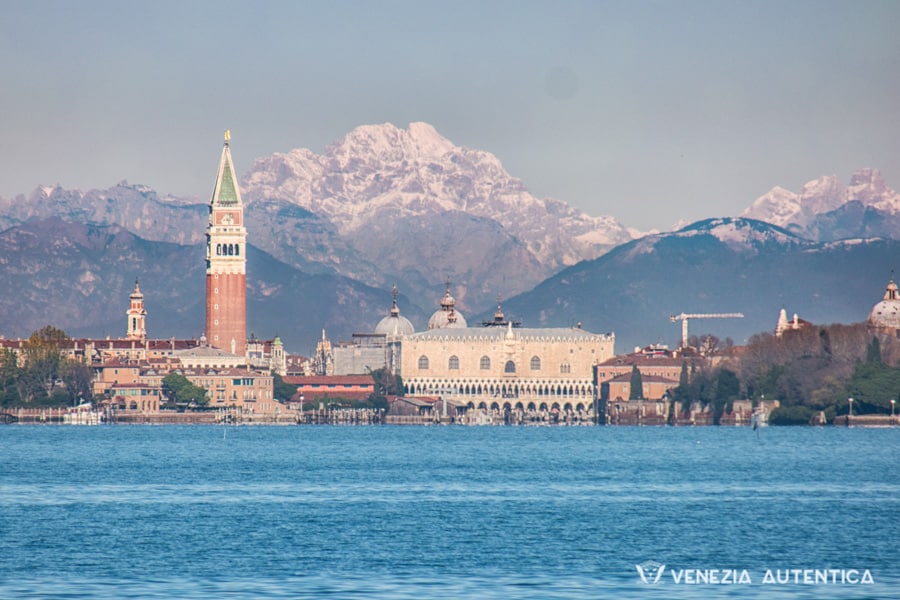
How’s the weather in Venice, Italy? We’ve got you covered!
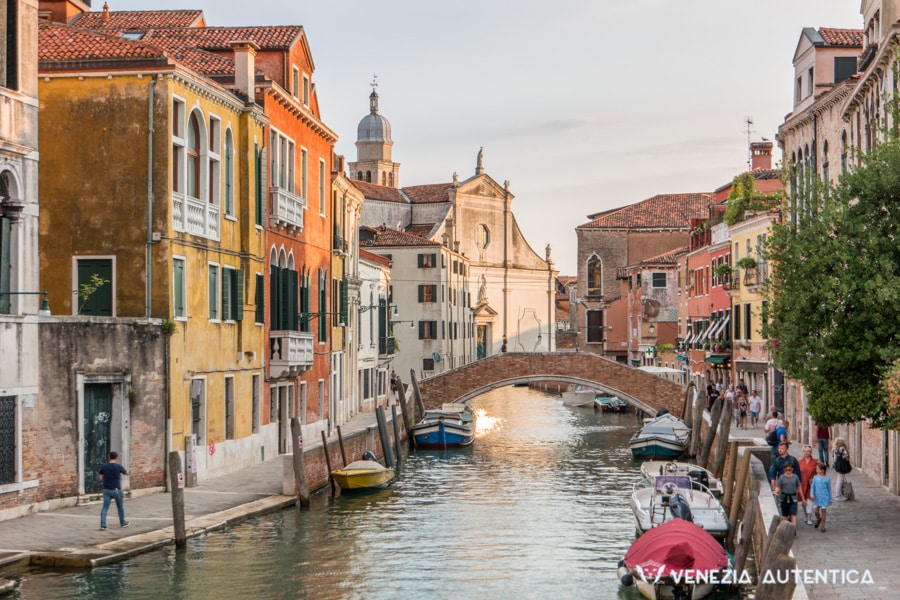
The ultimate guide to the top 10 things to do and see in Venice, Italy
More in Visiting Venice
Go to Visiting Venice >>
- January 10, 2022
You might also like
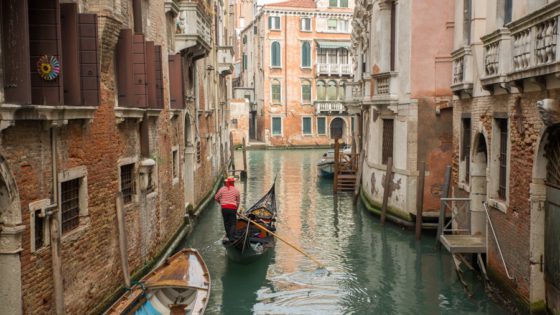
Want to go on a gondola ride in Venice? Here’s everything you need to know!
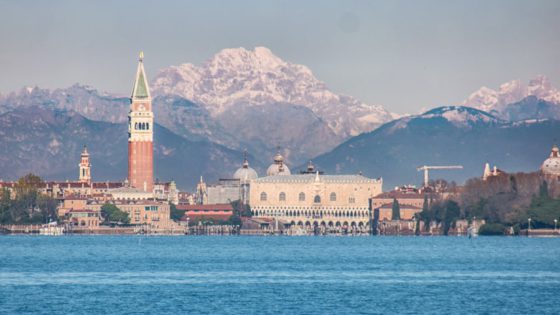
How’s the weather in Venice, Italy? We’ve got you covered!

- ONLY PRIVATE TOURS AND ACTIVITIES
We make it easy to experience Venice with local guides and experts
- 100% GUARANTEED LOCAL AND IMPACTFUL
Looking for things to do in Venice? Experience Venice with a local!
We’d love to chat.
Let us know
how we can help
Venice Printable Tourist Map

Download & print the map
- Get the full size map
- Print the map
Share with others!

Tripomatic recommends
See the highlights of Venice with the Venice Walking & Boat Tour . Walk the the narrow streets of Venice with an experienced guide, enjoy skip the line access to St Mark's Basilica. And then explore the Grand Canal on a boat tour.
Free printable Venice tourist map
Take our free printable tourist map of Venice on your trip and find your way to the top sights and attractions. We've designed this Venice tourist map to be easy to print out. It includes 26 places to visit in Venice, clearly labelled A to Z. With this printable tourist map you won't miss any of the must-see Venice attractions.
Make the most of your trip to Venice with the help of Tripomatic. Locate the best things to do and see in Venice on a map. Select the ones you like the most and create your own printable Venice tourist map.
More printable maps
- New York Printable Map
- Paris Printable Map
- Rome Printable Map
- London Printable Map
- Berlin Printable Map
- Prague Printable Map
- Las Vegas Printable Map
- Amsterdam Printable Map
- Chicago Printable Map
- Edinburgh Printable Map
- San Francisco Printable Map
- Los Angeles Printable Map
- San Diego Printable Map
- Boston Printable Map
Sygic Travel on the go
Featured trips, popular content.
- Privacy Policy
- STOCK 360° TRAVEL VIDEOS

3 Days in Venice: Detailed Itinerary, Map & Insider Tips
By Author Jurga
Posted on Last updated: March 21, 2024
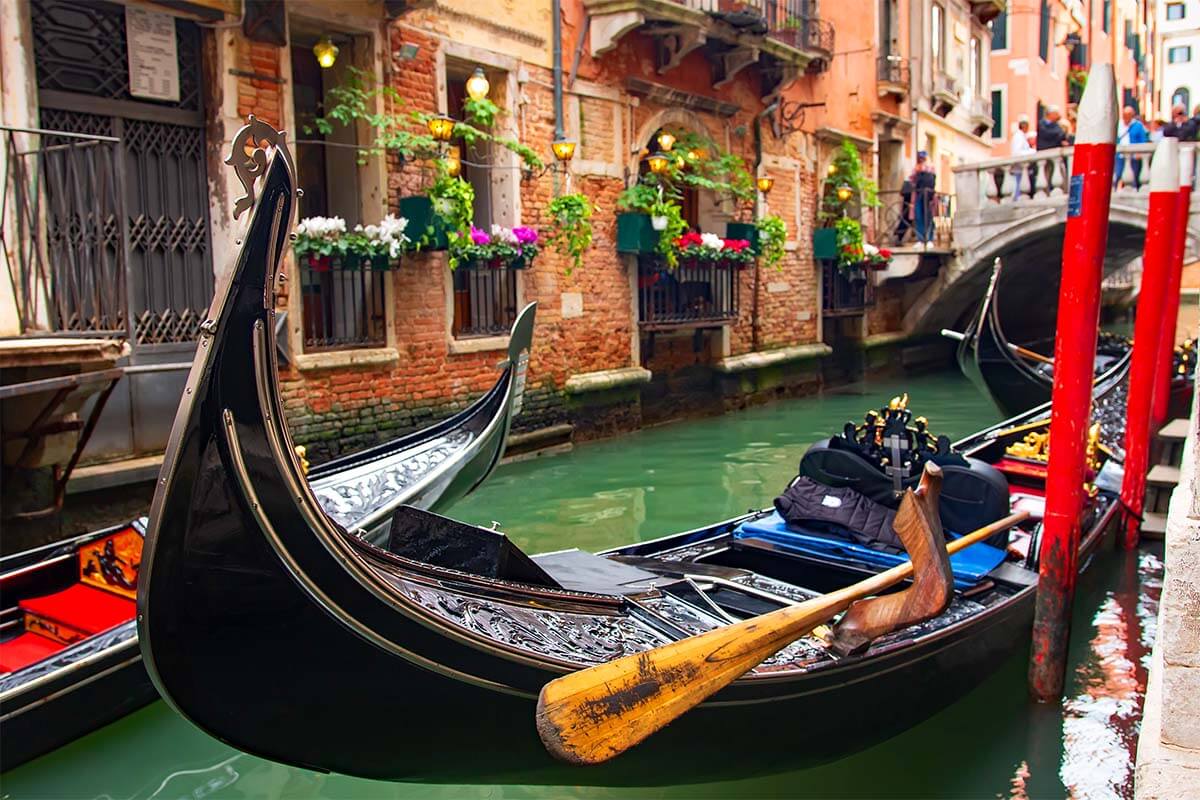
Planning to spend 3 days in Venice and wondering what to see and do in the city and how to best plan your time? In this guide, we share a detailed Venice 3-day itinerary coupled with lots of practical information and local’s tips to help you make the most of your visit.
Built on more than a hundred small islands, Venice is a UNESCO World Heritage Site and one of the most beautiful places to see in Italy . Nobody will argue that the historical city center and the islands dotting the beautiful Venetian Lagoon are absolutely unique. There’s just no other place like this in the world!
The canals of Venice and its ‘calli’, the narrow streets, divide the urban landscape that looks like an intricate labyrinth. With its old palaces, world-famous museums, and its iconic landmarks, Venice is a city to visit slowly, giving you time to enjoy all its beauty.
Most tourists only come to Venice for a day , so lucky you to be able to spend three days in the floating city! With 3 days in Venice, you should be able to cover all the ‘musts’, but also get a bit off the beaten path, enjoy getting lost in its maze of narrow streets and canals, and get to know a more local side of this fascinating place.
Good to know: While we have visited Venice several times and have shared multiple Venice travel guides on the blog before, for this 3-day Venice itinerary we asked for recommendations from a local . Originally from the Veneto region and with a Master’s Degree in tourism studies, Maddy from the Venice Travel Tips blog is passionate about sharing her knowledge of the city and the area.
This itinerary was created with her help and includes lots of local tips, restaurant suggestions, and other information that should help you plan a truly memorable trip. It should give you a good idea of how to spend up to 3 days in Venice without missing out on its best bits including a few off-the-beaten-path gems. Take a look!
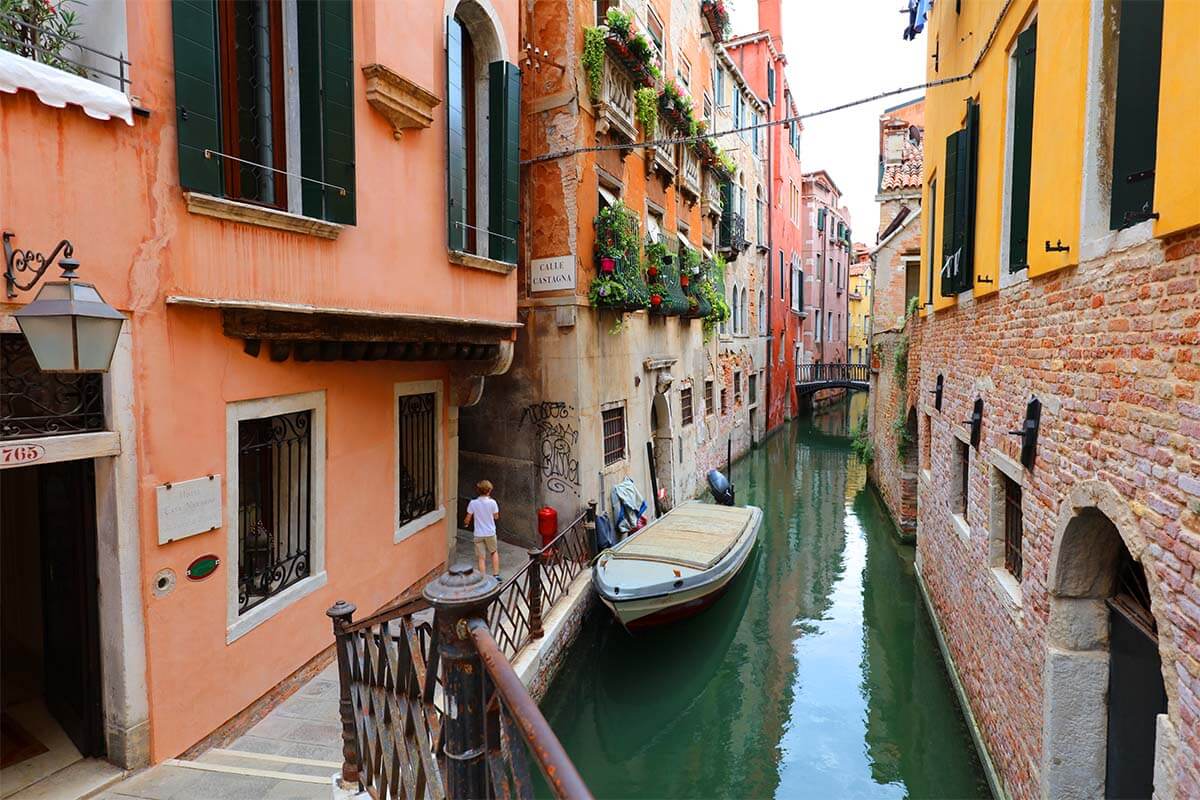
How this guide is structured:
Below, you can find our recommended Venice itinerary for three days. Per day, we share detailed info about all the places that you can visit, coupled with practical info and tips. Further below, you’ll find a short overview of the 3-day Venice itinerary and a MAP indicating each place mentioned in our guide.
Please note that all the hours in the itinerary are only indicated for your reference . This will give you a better idea of how much time you need for each place/ attraction.
When suggesting the order in which to visit everything, we take into account the location and the opening hours of the attractions, or the starting hours of the tours . That way, you can better plan your time, see what’s possible, and then decide where to go or maybe skip one place and spend more time somewhere else.
Finally, at the bottom of this article, you’ll also find some general practical tips for visiting Venice. Take a look!
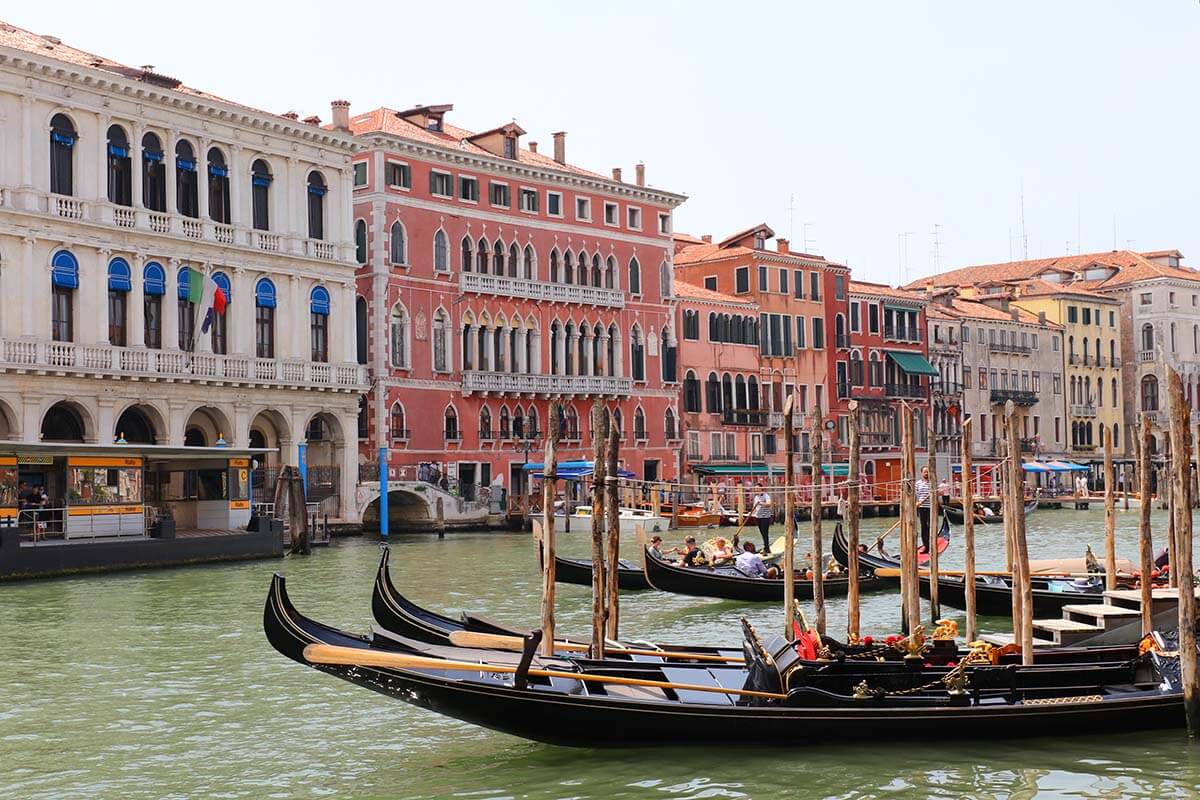
Here’s how you could spend three days in Venice:
Day 1: Venice Highlights
On your first day, you’ll probably want to visit some of the main sights and top attractions in Venice . Our itinerary below is packed with the ‘musts’. In addition, we show you how to best plan your day so that you can get a taste of authentic Venice too.
DAY 1 planning info/ tickets to book :
- St. Mark’s Campanile (Bell Tower) – timed-entry tickets .
- St. Mark’s Basilica – timed-entry all-in tickets .
- Doge’s Palace – timed-entry tickets .
- Gondola ride – see here (booking optional).
- TIP: This digital Venice Pass includes all of the above and makes it easy to book/plan everything in one go. For a unique experience, check out this exclusive after-hours tour of Doge’s Palace & St. Mark’s Basilica .
- La Fenice Theater – tickets .
- Street food tour (optional) – book here .
This is what your first day in Venice would look like:
Rialto Bridge + Market + Grand Canal
8-8.30 am .
After your breakfast at the hotel, visit the Rialto Bridge and market area . The Rialto bridge is one of the oldest bridges in the city and one of the few ones crossing the Grand Canal . It’s also one of the most popular places that everyone comes to see in Venice. So visiting here in the morning will help you to appreciate it better. During the day, you can often hardly see the bridge through people…
Back in the Serenissima Republic days of Venice, this part of the city was a prolific space for trading spices and products coming from the Middle and the Far East. It’s also here that you will also find Mercato di Rialto , a bustling market area.
The fish and fruit/vegetables markets are usually open from around 7.30 am daily except on Sundays. It’s a nice place to soak up a local atmosphere and take some colorful pictures.
Be sure to also walk around the waterfront promenade on both sides of the Grand Canal. It offers countless amazing photo opportunities!

Gondola Ride
If you want to go for a gondola ride in Venice, the area around Rialto Bridge is an excellent place to do that. The Venetian gondola is one of the iconic symbols that Venice is famous for and the oldest means of transport in the city.
Nowadays, gondolas are mostly used by tourists, but it remains an authentic Venetian experience that we highly recommend. It’s also one of the best ways to appreciate how special and unique Venice is from a different point of view.
Good to know: You don’t absolutely have to book a gondola ride in advance, but if you want to do it at a specific time and place without wasting time, then it might be a good idea. In that case, take a look at the best options available here.
TIP: Early morning is a very good time for a gondola ride. There aren’t that many tourists around so the canals aren’t filled with gondolas, and it’s not too hot. Furthermore, gondoliers aren’t tired yet and are usually in a very good mood. For more info and tips, please see our guide via the link below.
READ ALSO: Tips for a Gondola Ride in Venice
Good to know: If you don’t mind visiting the bridge and the market when it’s busier, you can also start your day in St. Mark’s Square (see below) and visit the Rialto Bridge area after that. Gondola rides are available all over the city center throughout the day. This would save you quite a bit of walking; on the other hand, a lot depends on where your accommodation is located and where you want to start your day.

St. Mark’s Square + San Marco Campanile + St. Mark’s Basilica
9-10.30 am .
In about 15 minutes walk from Rialto Bridge you can reach Piazza San Marco. This is the only real square of Venice, as the other small piazzas of the city are called ‘ campi ’. Its story goes back to the early years of Venice, in the 12th century.
St. Mark’s Square is considered one of the most beautiful squares in the world! It’s surrounded by the buildings of Procuratie Vecchie and Nove, where the St. Mark’s procurator was living and working. You can’t really miss the 15th-century Clock Tower on the left side and the bell tower, St. Mark’s Campanile , on the right.
No matter how many days you have in Venice , these popular attractions are a must for any itinerary. And it’s best to visit them early to any disappointment.
We highly recommend going to the top of St. Mark’s Campanile . With 98 meters, this is the tallest building in Venice, and its original purpose was as a lighthouse for the sailors. Nowadays, it’s one of the best places to enjoy some of the best 360° aerial views of the city and the lagoon.
Practical information: St. Mark’s Campanile is normally open daily from 9.30 am. If you want to go up, be sure to book timed entry tickets online in advance (if this option is available in the season when you visit) and be here before it opens. And don’t worry about having to climb – there’s an elevator that brings you to the top.
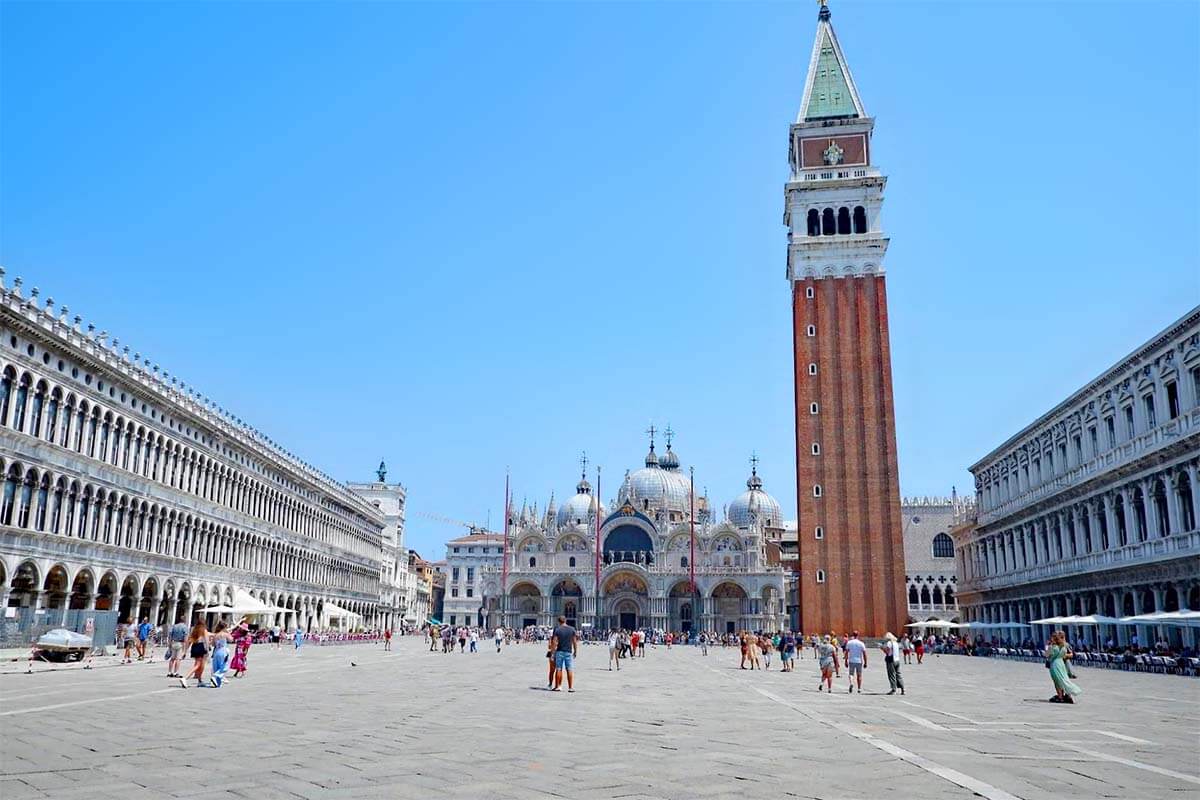
Next on this itinerary is St. Mark’s Basilica located on the same square. There are 137 churches in Venice (!), and this impressive basilica is the religious heart of the city. The golden mosaics you can see inside are stunning, just like Pala d’Oro, the impressive golden altarpiece (extra fee). In addition, you can also visit St. Mark’s Treasure and Terrace (extra fee).
Good to know: St. Mark’s Basilica is open from 9.30 am, except Sundays and some religious holidays when it’s only open in the afternoon (see their website for more info). A visit to the church itself requires a ticket and the queues can be very long, especially if there are many cruise ships in town. So if you want to visit inside and make the most of your day, be sure to book timed-entry tickets in advance.
TIP: We recommend this all-in ticket that also includes Pala d’Oro and Terraces. These are the most impressive parts of the Basilica, not included with the standard ticket.
You can also just visit St. Mark’s Treasure and the Terraces (there’s usually a much shorter queue here). From the museum, you can see a bit of the interior of the church as well (of course, it’s not the same as actually visiting inside). But you also get access to the balcony overlooking St. Mark’s Square, which is well worth it.
But quite honestly, with three days in Venice, you have plenty of time, so get the full ticket and see everything. It’s stunning!
TIP: This highly-rated guided tour visits the terraces of St. Mark’s Basilica and Doge’s Palace (more info below). If you want to see these places in the most efficient way, it might be worth considering. There is usually a tour at 10 am, so it could fit this itinerary quite well.
Alternatively, for a truly unique experience, check out this exclusive after-hours tour of Doge’s Palace & St. Mark’s Basilica . In that case, you’ll have to rearrange this itinerary a bit since this tour runs in the evening.
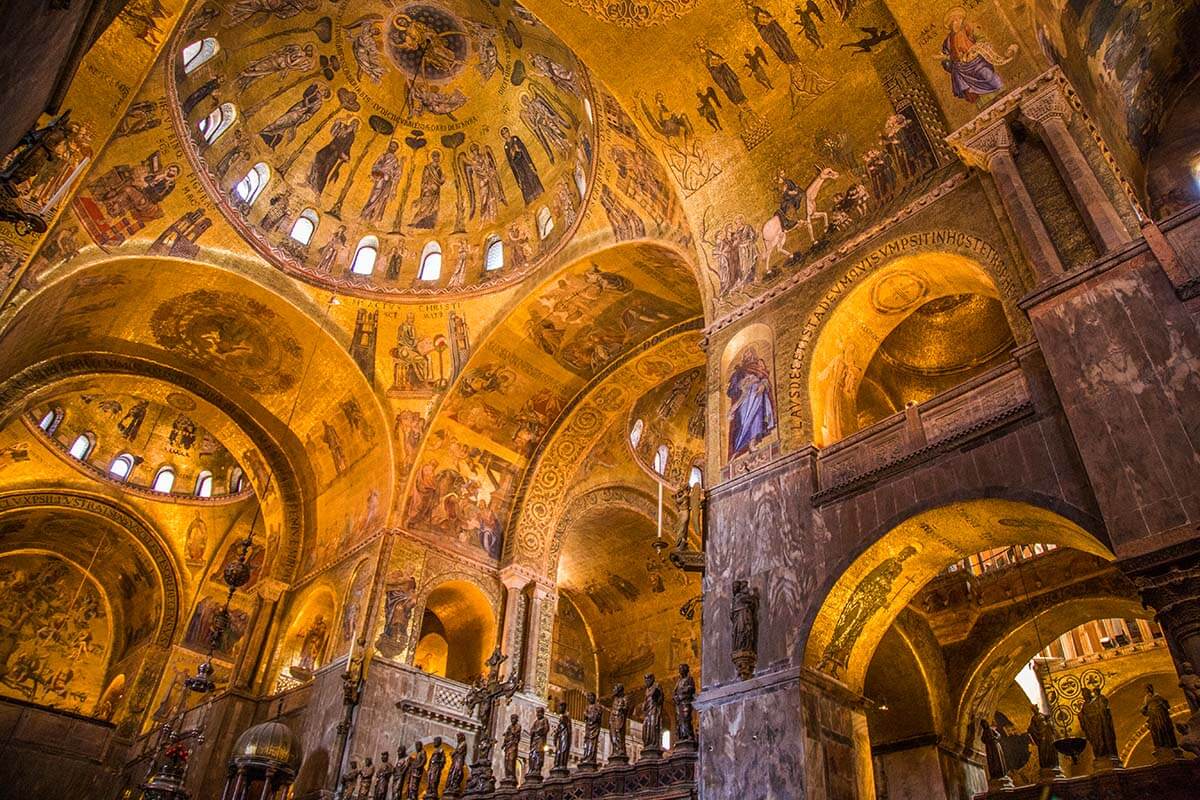
Doge’s Palace + Bridge of Sighs
10.30 am-noon .
Just behind St. Mark’s Basilica is the Doge’s Palace , another of the must-sees in Venice.
This is the former residence of Venice’s doge, the chief magistrate of the Serenissima Republic. The building is one of the most outstanding examples of Gothic architecture. Even if you wouldn’t have the time to visit inside, it’s absolutely impressive just to see it.
But with three days in Venice, you really shouldn’t miss visiting Doge’s Palace inside!
The building is divided into 3 wings where you can walk around the doge’s apartments, see the stunning chambers, and also visit the prisons that couldn’t have more contrast with what you see in the palace. The absolute highlight here is the Chamber of the Great Council with artworks from eminent Venetian artists like Titian, Carpaccio, and Bellini.
In order to get to the prisons, you’ll have to cross the famous Bridge of Sighs . This covered bridge has been called like that to remind the ‘sighs’ of the prisoners taking the last glimpse of the Venetian lagoon before finding out what their sentence was. It’s a truly unique experience and something you can only do in combination with a visit to Doge’s Palace (which makes it even more worthwhile).
After your visit to the palace and the prisons, take some time to admire the beautiful architecture of this bridge from the outside as well!
Practical info: Doge’s Palace is open daily from 9 am. You should count at least 1.5 hours for a visit. Unless you visit here on one of the tours that come here , be sure to book your timed-entry tickets in advance . Otherwise, you’ll waste hours queuing.
LEARN MORE: Doge’s Palace: how to visit & what to expect
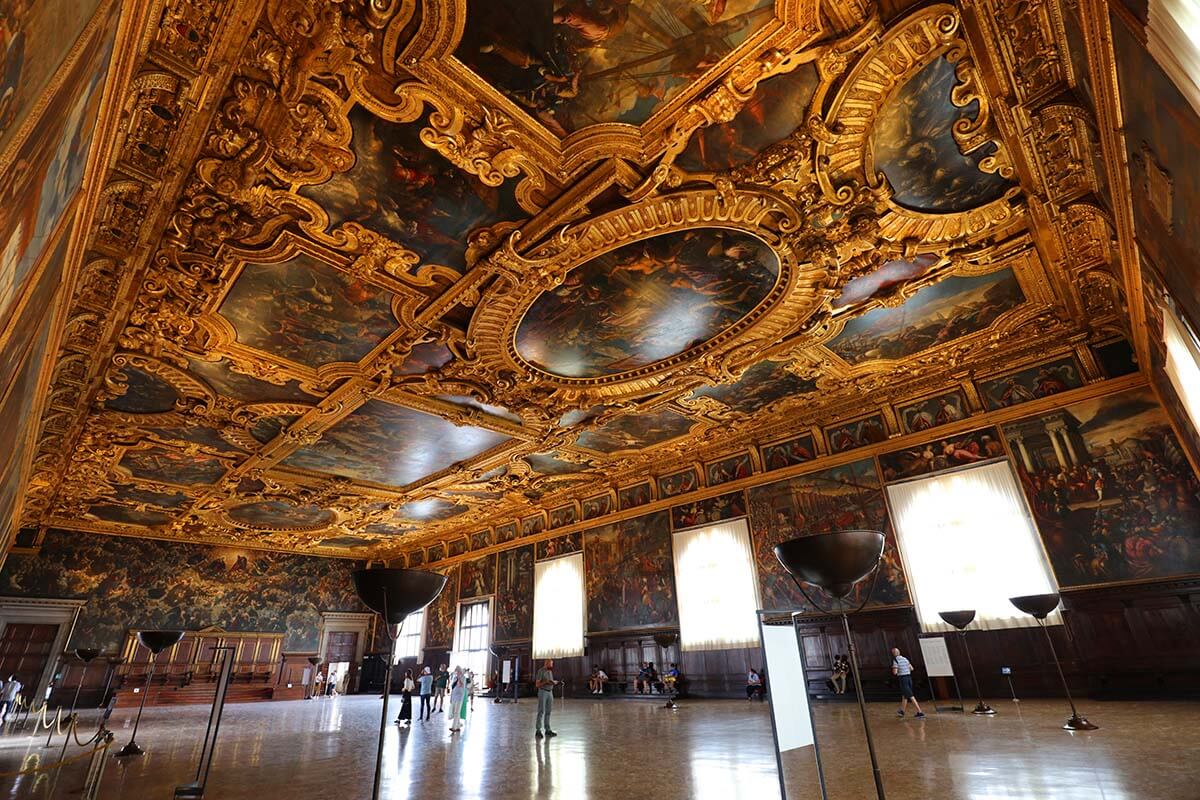
Fondaco dei Tedeschi Rooftop
12.15-1 pm .
Before heading back to Rialto Bridge where you can find a lot of interesting spots for lunch, consider visiting the T Fondaco dei Tedeschi rooftop just nearby. This terrace offers some lovely views of the Grand Canal and the skyline of Venice. It has quickly become a very popular tourist attraction in the city.
The word ‘ fondaco ‘ in the Venetian dialect can be translated to a warehouse or trading headquarters. Fondaco dei Tedeschi dates to the early 13th century and belonged to German merchants.
Today, the historical building has been restored and hosts a luxurious multi-level shopping center. Even if you don’t visit the terrace, it’s well worth taking a look inside – the interior is stunning and quite unique.
Good to know: The rooftop is open from 10.45 am until 7.15 pm (closing at 7:30 pm). It can be accessed for free but you’ll need to book your visit through their website beforehand.

Lunch: Al Mercá
For your first lunch in Venice, there is no better place than Al Mercá , a locals’ favorite spot for lunch or aperitivo . It’s perfect for lunch on the go as this traditional ‘bacaro’ (local bar) has no seating.
It serves ‘cicchetti’, small bread bites with delicious toppings made of fresh and locally sourced ingredients, and a small panini. Locals love accompanying these snacks with a glass of wine or Aperol Spritz.
Lunch opening times : Daily except for Sundays, between 10 am and 2.30 pm.
Of course, you will be able to find plenty of other great places for lunch. Just try to avoid the super touristy restaurants right on the Grand Canal.
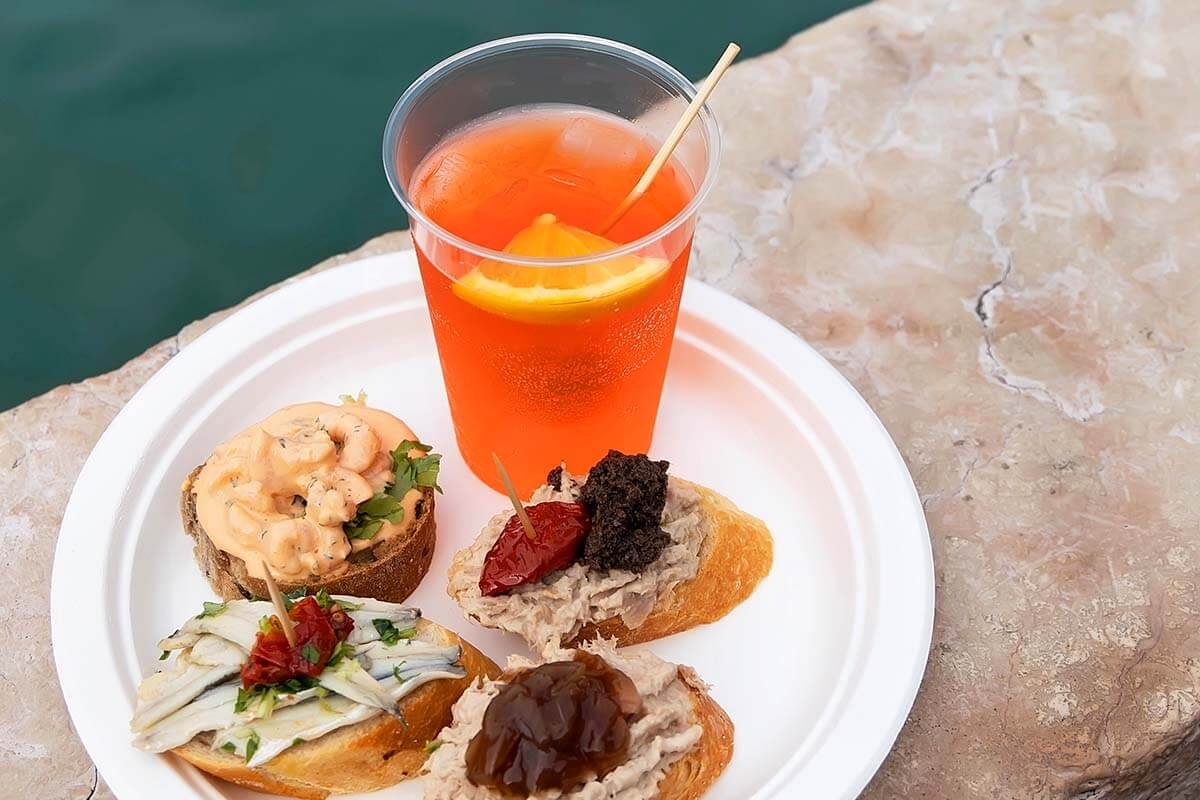
Libreria Acqua Alta
2-2.45 pm .
Just a 10 minutes walk further, you can’t miss a little gem of Venice, Libreria Acqua Alta . This is a truly unique bookshop, self-proclaimed as one of the most beautiful in the world. In the past, this was a really hidden gem of Venice – not so much anymore. Sometimes, there’s a very long queue to get in, and while it’s nice to see, I’ll leave it up to you to decide whether it’s worth your time…
This bookstore has a big collection of new and second-hand books. Many of their books are stored inside Venetian gondolas, kayaks, and whatever else can float. This is in order to protect the books from getting wet during the famous floods (thus the name ‘ aqua alta ‘ which literally means the high water).
The store looks really chaotic, but it’s also why it’s so fascinating for visitors. The many cats laying around make it even more fun to visit. This is a good place to look for a nice souvenir, some unique postcards, or Venice prints.
TIP: Don’t miss the book ‘staircase’ outside, at the back of the store.
Opening times: Libreria Acqua Alta is open daily from 9 am to 7.30 pm. We indicated its location on our map at the end of this article.
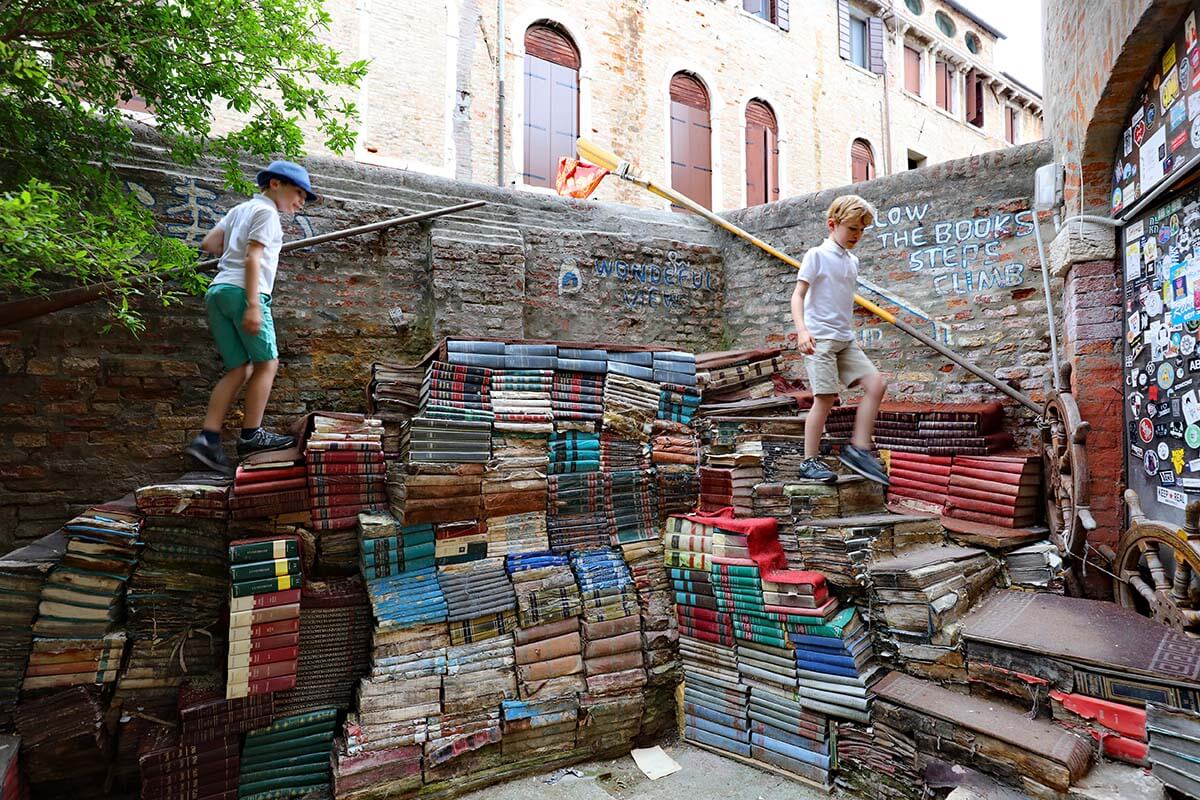
La Fenice Theater
La Fenice Theater is located in St. Mark’s neighborhood and is not far from the top attractions you visited earlier today. So it’s a bit of backtracking, but it shouldn’t take more than 15 minutes to get there from the Libreria Acqua Alta.
This prestigious opera house built was built in the neoclassical style and opened to the public in 1792. Over the centuries, the building has been burnt down and restored numerous times.
La Fenice Theater is considered one of the most prominent in the world and can host up to 1500 people. It’s here that the premieres of many famous operas were held, including those of composers such as Giuseppe Verdi, Stravinsky, Vincenzo Bellini, and Gioachino Rossini.
TIP: You can visit this iconic opera house just to admire its stunning interior. For that, it’s best to book your skip-the-line tickets in advance . The visit itself is self-guided, but you will receive an audio guide. A guided tour is also available, but at the moment, it only runs at 1 pm. So if you are interested in this, you would have to adjust your itinerary and come here right after visiting Doge’s Palace (and have lunch somewhere nearby).
And finally, you can also attend an opera, a ballet performance, or a concert, etc. In that case, be sure to check their calendar and try to book your tickets in advance (but keep in mind that these are non-refundable). You can also buy tickets at their ticket office as well as at the Venezia Unica box offices around the city. However, keep in mind that last-minute tickets for the most popular events might not be available.
Opening times for theater visits : Normally, you can visit the theater daily from 9 am to 6 pm (last entry 1 hour before the closing time). However, this is subject to change and depends on their event calendar. You can check the most up-to-date schedule for the current month here . But even then, it can happen that things change last minute.
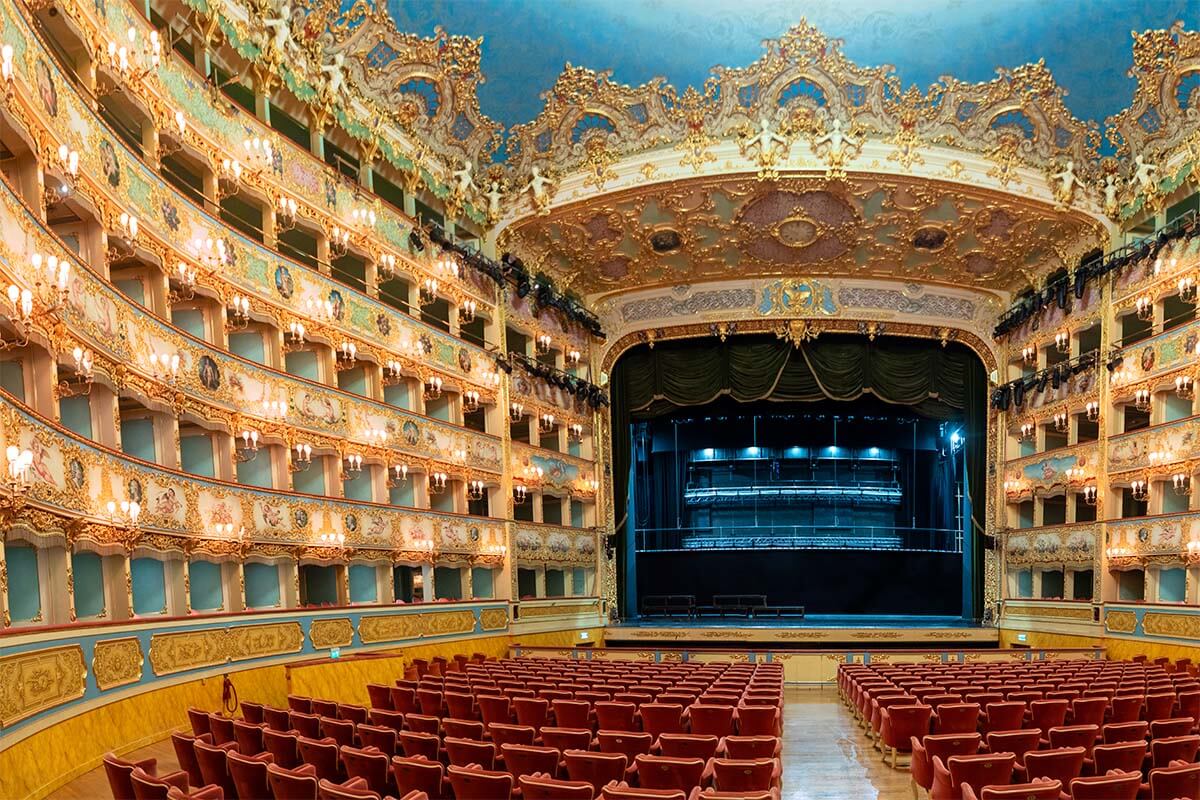
Evening option 1: food tour
Next, this itinerary takes you to Ponte dell’Accademia and the Dorsoduro area (which you can also visit on day 3 of this itinerary) – see below. But if you want to take it easier, not have to walk as much, and stay closer to the center, you could opt for this highly-rated street food tour instead.
This tour starts at 5 pm in Campo San Bartolomio (close to Rialto Bridge, just about 10 minutes walk from the theater), and takes about 2.5 hours. It could be a nice and more relaxing way to end your first day in Venice. We did food tours with this company in Rome and in Naples and they were always excellent. It’s a great way to discover some regional Italian food with a local guide.
If you opt for this, don’t worry about missing something. You can easily visit the places mentioned further below on day 3 of this itinerary (instead of one of the museums we recommend for that day). Also, since this specific tour starts close to Rialto Bridge, you could visit La Fenice theater after the St Mark’s area and then visit the Fondaco rooftop terrace and the bookstore after that and before the food tour. This would save you some walking. You could also watch the sunset from the Rialto Bridge area.
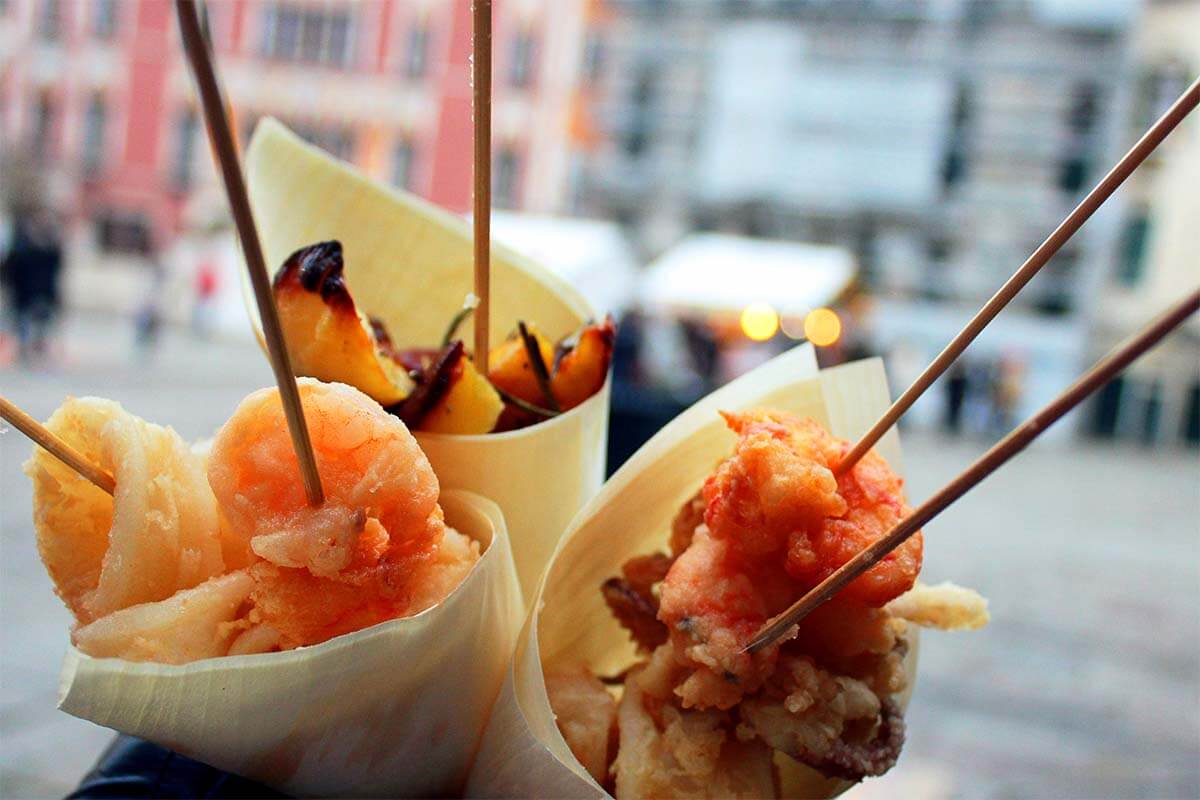
Evening option 2: Ponte dell’Accademia & Dorsoduro neighborhood
4-4.30 pm .
About 10 minutes walk from La Fenice Theater, you’ll find another iconic bridge in Venice – Ponte dell’Accademia . This is the second most important bridge in Venice and one of just four bridges that cross the Grand Canal.
The Accademia Bridge is not as busy as the famous Rialto Bridge, and the views of the canal from here are stunning. It’s a great place to take some postcard-style pictures of the typical Venetian cityscape with the colorful palazzos next to the Grand Canal, and boats and gondolas all around.
Another reason to come here is that this bridge connects the old historic center to the Dorsoduro neighborhood . This is one of those more local areas where you can still find some tourist-free spots and enjoy a more authentic atmosphere.
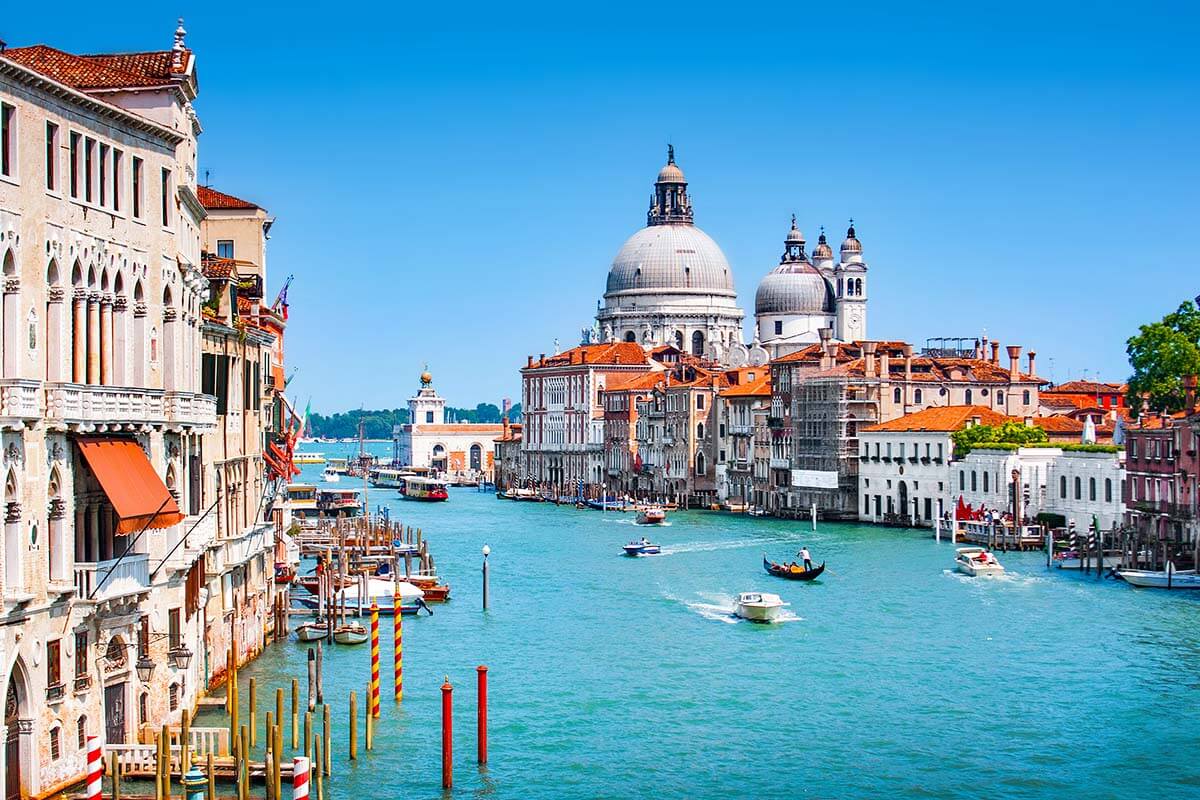
Basilica di Santa Maria della Salute
4.30-5 pm .
One of the most noteworthy attractions of the Dorsoduro neighborhood is the baroque-style Basilica di Santa Maria della Salute . This is the second most important church in Venice, after St. Mark’s Basilica. It was built to celebrate the end of the plague epidemic in 1631.
Interesting to know: To commemorate the day that the Virgin Mary protected the city from the plague, on the 21st of November, the ‘Festa della Salute’ is celebrated here.
Inside, you can admire the painting ‘The Descent of the Holy Spirit’ by Titian and in the sacristy ‘The Wedding at Cana’ by Tintoretto. The floor of the church is also very impressive, just as the cupola.
Practical information: The church itself can be visited for free, but some parts require a ticket. Just as most other churches in Italy, the Basilica usually closes for a few hours at noon. In the afternoon, it’s open from 3 to 5.30 pm. So if you follow this itinerary and can get here around 5 pm, you should be able to visit inside. Otherwise, come here in the morning of day 3 of this itinerary.
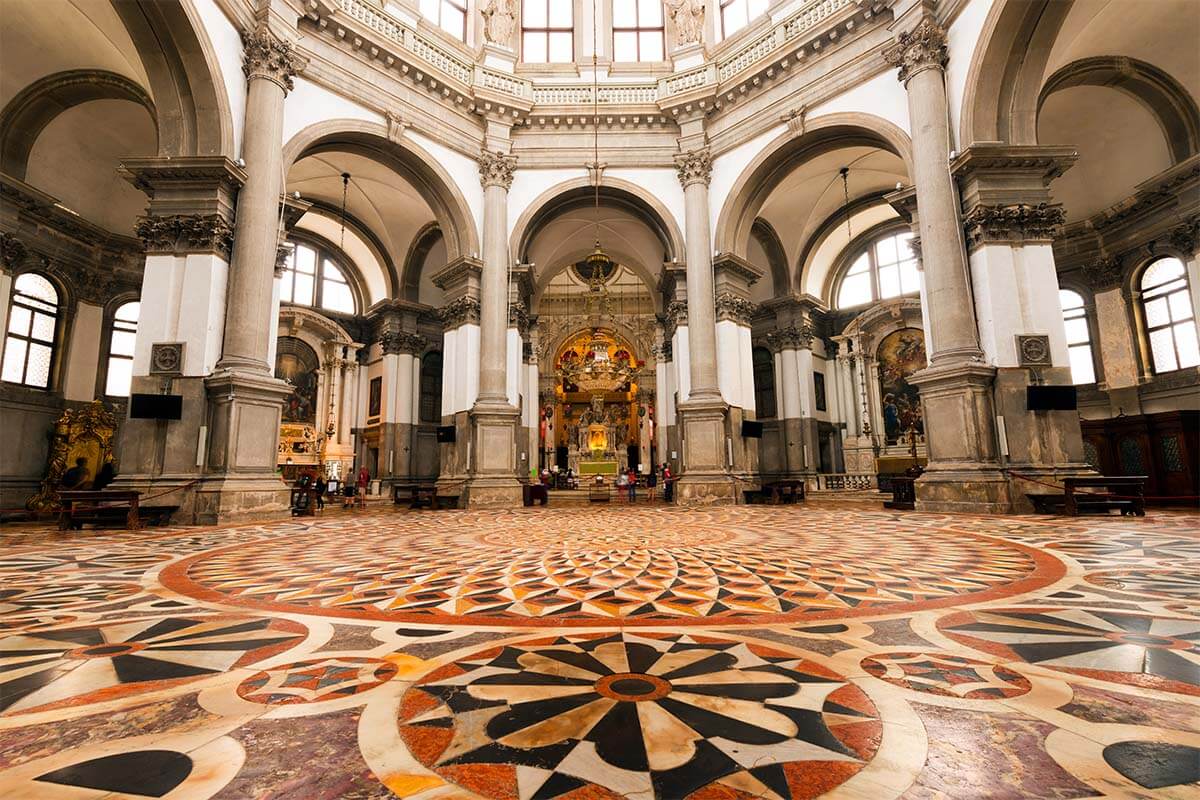
Fondamenta delle Zattere
5-6 pm (or later, depending on the sunset times) .
Fondamenta delle Zattere is a series of waterfront promenades on the southern shore of the Dorsoduro neighborhood . The name comes from rafts (in Italian “zattere”) which were used to transport tree trunks from the mountains to this part of Venice in the past.
There’s no better way to unwind whilst waiting for the night to fall over the city, than taking a seat on of the marble benches in the Fondamenta delle Zattere to admire the sunset on the lagoon.
Fondamenta delle Zattere might not be as popular as watching a sunset from the Rialto Bridge, but it’s a more exclusive experience since there are not many tourists around. From here, you can enjoy a spectacular view of Giudecca island and take a relaxing walk just before the aperitif time.
Good to know: Keep in mind that the actual sunset time will be very different in the summer (+-8-9 pm) than in the winter (+-4.30-6 pm). So you could come here earlier or later, depending on when the sun sets during your visit (you can easily check this on Google ). But even if you don’t stay here for sunset, it’s well worth visiting this part of Venice.
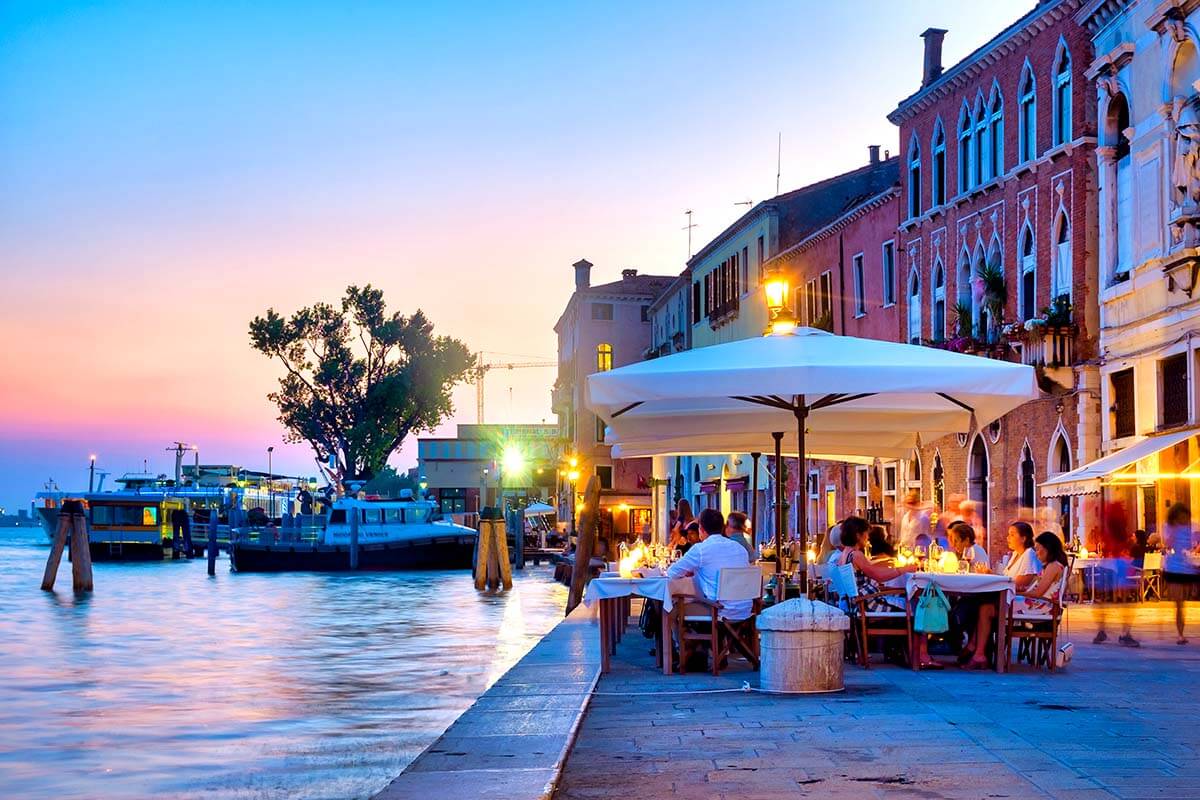
Aperitivo & Dinner
By now, you’ll probably be exhausted from all the sightseeing in Venice. Time for an aperitivo .
Just next to Zattere, you can find the Osteria al Squero (this and other restaurants mentioned here are indicated on our map which you can at the end of the article). This is a great place to enjoy a fantastic Venetian aperitivo . The small bar has a wide selection of ‘cicchetti’ made with local seafood, cured meats and cheeses. There are options for vegans and vegetarians too!
In the past, this was just a locals’ meet-up place, but it’s becoming quite popular among tourists. You can get your cicchetti and sit outside, from where you can observe one of the only ‘squeri’, gondolas’ shipyards left in the city.
Good to know : Osteria al Squero is open on weekdays from 10 am to 8.30 pm (Saturdays and Sundays closed). Alternatively, you’ll find other nice bars in the area.
To conclude your first day in Venice, the perfect location for your dinner is the over-water terrace of the Lineadombra restaurant . This is a high-end modern restaurant where you can expect to have a lovely meal serving typical Venetian cuisine, with local products from the sea and the land. The restaurant is open daily except on Wednesdays. For dinner, it opens at 7 pm, but if you want to be sure to find a table, it’s best to reserve in advance.
If you are looking for something a bit less expensive and low-key, check out Trattoria ai Cugnai dal 1911 . This traditional trattoria is an excellent non-touristy choice for dinner in Venice. Also here, it’s best to reserve in advance.
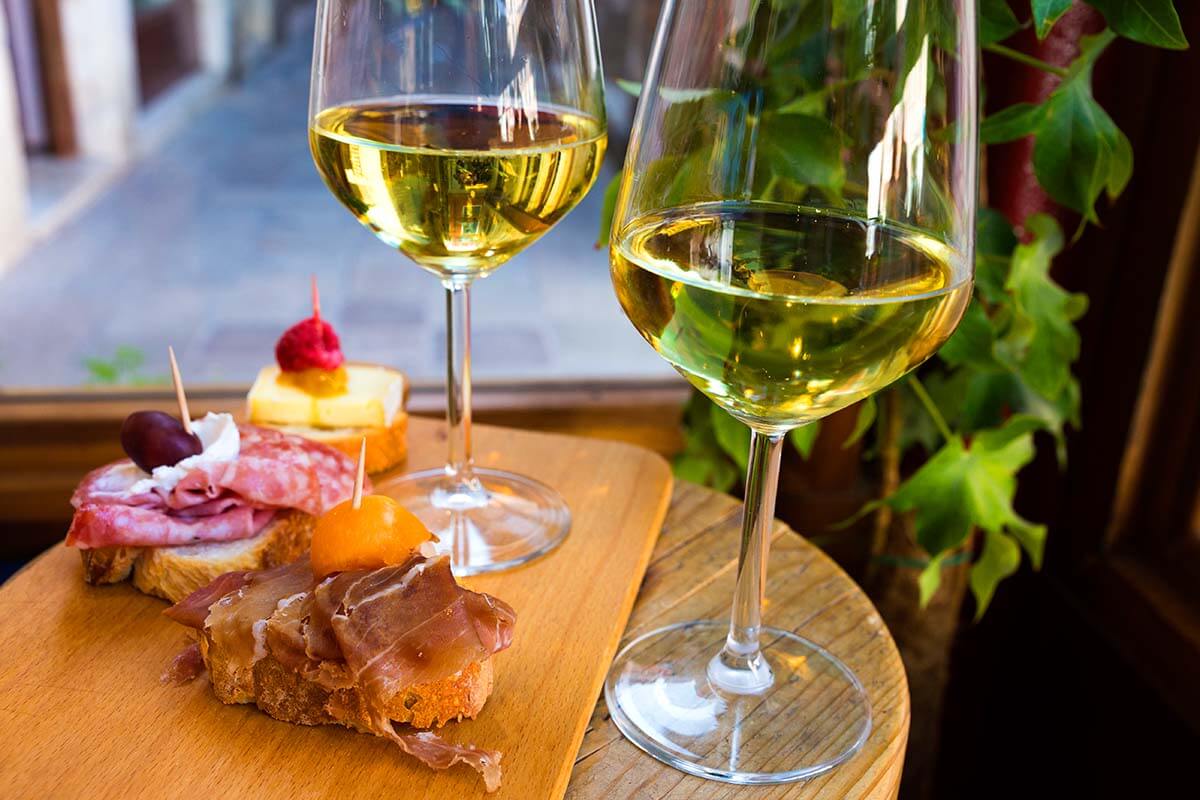
Day 2: Venetian Lagoon Islands & Venetian Arsenal
On your second day in Venice, you could spend half a day exploring some of the most famous islands of the Venetian lagoon. In the afternoon, take it easy strolling around the gardens and laid-back neighborhoods of the city. This will give you a bit of a break from all the sightseeing on days 1 and 3 of your trip.
DAY 2 planning info/ tickets to book :
- Murano, Burano, and Torcello islands – we recommend this tour .
- Dinner on a traditional boat (optional) – more info and reservations here .
Here is what your second day in Venice could look like:
Murano / Burano / Torcello Half Day Trip
9.30 am – 2-3 pm.
With three days in Venice, you’ll have plenty of time to see all the main landmarks in the city center. So we highly recommend that you also leave the city for a few hours and explore the beautiful islands just nearby.
Some of the most popular islands of the Venetian Lagoon are Murano, Burano, and Torcello . And you’ll find lots of local companies offering all kinds of tours to these islands .
One of the best options is this highly-rated half-day tour which allows you to quickly visit all three islands in a short time. You can choose to hop on the boat at Santa Lucia railway station or next to St. Mark’s Square and they have multiple departures during the day. We recommend starting early to avoid the biggest crowds. Alternatively, you could also turn this itinerary around and start in the afternoon.
This tour offers expert commentary and stops at all three islands giving you some free time on each of them. First, you’ll stop in Murano, the island which is famous for its handmade glass production. Here, you’ll visit a glass factory where you can see glassblowing masters creating some glass art pieces. Next – Burano. This island is famous for its rainbow-colored fishermen’s houses and lacemaking. The last stop is Torcello, the smallest island. This is where people first settled before moving to where Venice is now.
If you take a tour at 9.30 am, you can expect to be back in Venice around 2 pm. Hop off in St. Mark’s area. Alternatively – if you want to spend more time on the islands – you can also opt for a longer tour. More info – below.

Good to know: If you want to spend more time on the beautiful islands of Murano, Burano, and Torcello, you can also opt for a longer tour instead (recommended). You can still visit Venetian Arsenal (see below) when you get back or before you leave – it really doesn’t require much time.
This popular tour visits all three islands but takes 6-7.5 hours, giving you more time to explore. The cost of these tours is practically the same since you pay for the boat and it has to cover the exact same distances. However, this tour usually has just one or two departures (and starts later). In that case, you should adjust the itinerary for this day a bit and also plan to have lunch at one of the islands.
Yet another option, is to simply book a hop-on hop-off ticket for the Venetian Lagoon and visit the islands at your own pace.
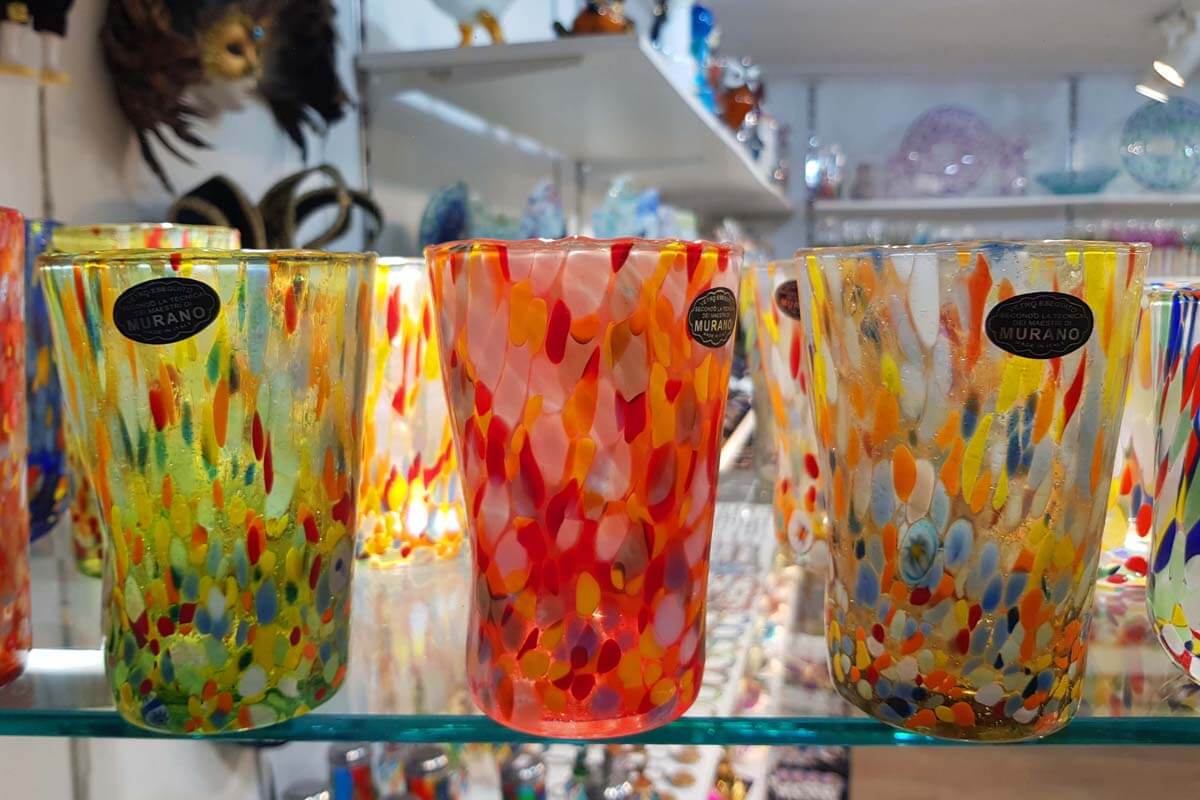
If you take the shorter tour, you’ll be back in Venice at around 2 pm. Hopefully, you can get some small snacks or gelatos earlier, or you’ll be starving…
For late lunch, we recommend Osteria da Carla , one of the oldest historical ‘osterie’ of Venice. It’s a lovely small restaurant where modern-style dishes are made with seasonal products that come from the Venetian lagoon. The osteria is only a few minutes walk from St. Mark’s area and it’s open the whole day (daily except on Sundays).
Alternatively, in the same area, try Il Calice pizza restaurant. It’s open daily except on Mondays and is also open during the entire afternoon.
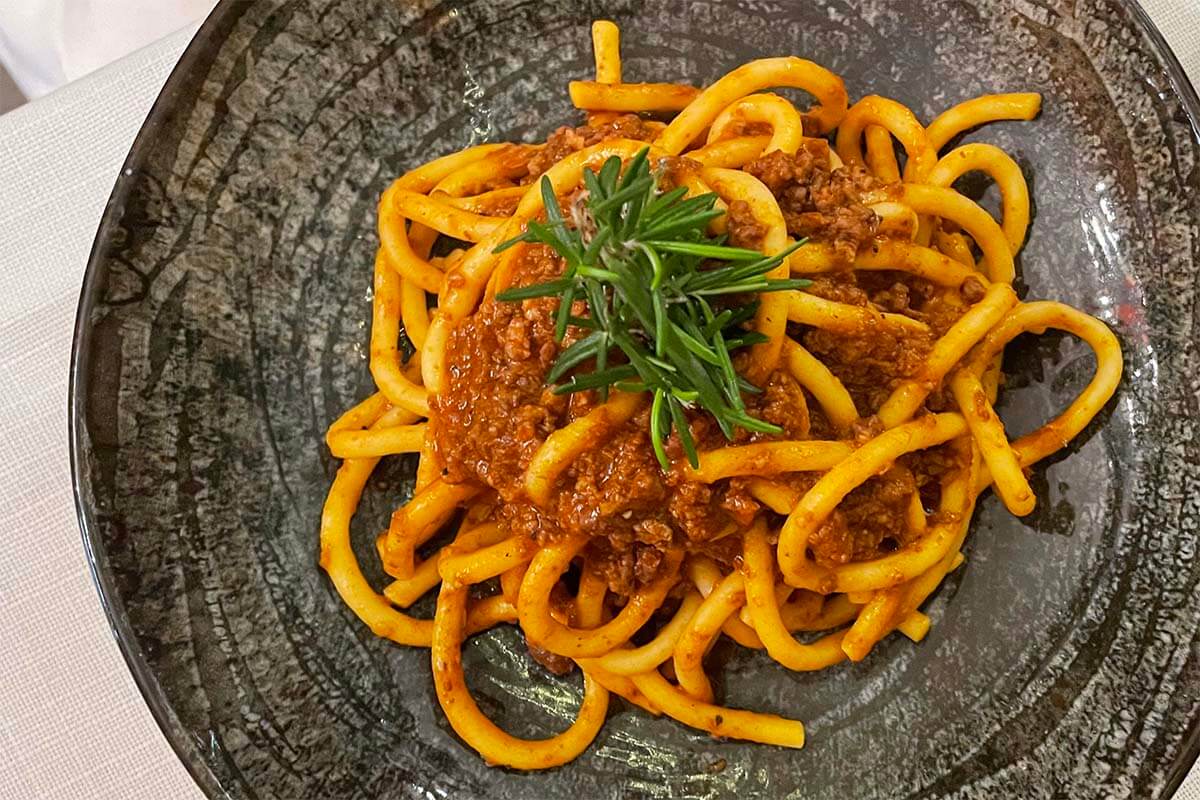
Riva degli Schiavoni Walk to the Castello Neighborhood
After your late lunch, enjoy a walk on Riva degli Schiavoni. This is a very busy waterfront area past St. Mark’s Square and Doge’s Palace. But the further you walk, the quieter it gets.
From here, you can admire the Venetian lagoon and see the island of San Giorgio Maggiore. If you keep walking you’ll get to the Castello neighborhood , the furthest district of the city. This is also the most laid-back area of Venice and is usually not too crowded.
It’s a perfect place for a relaxed afternoon for those looking to get a bit off the beaten path in Venice.
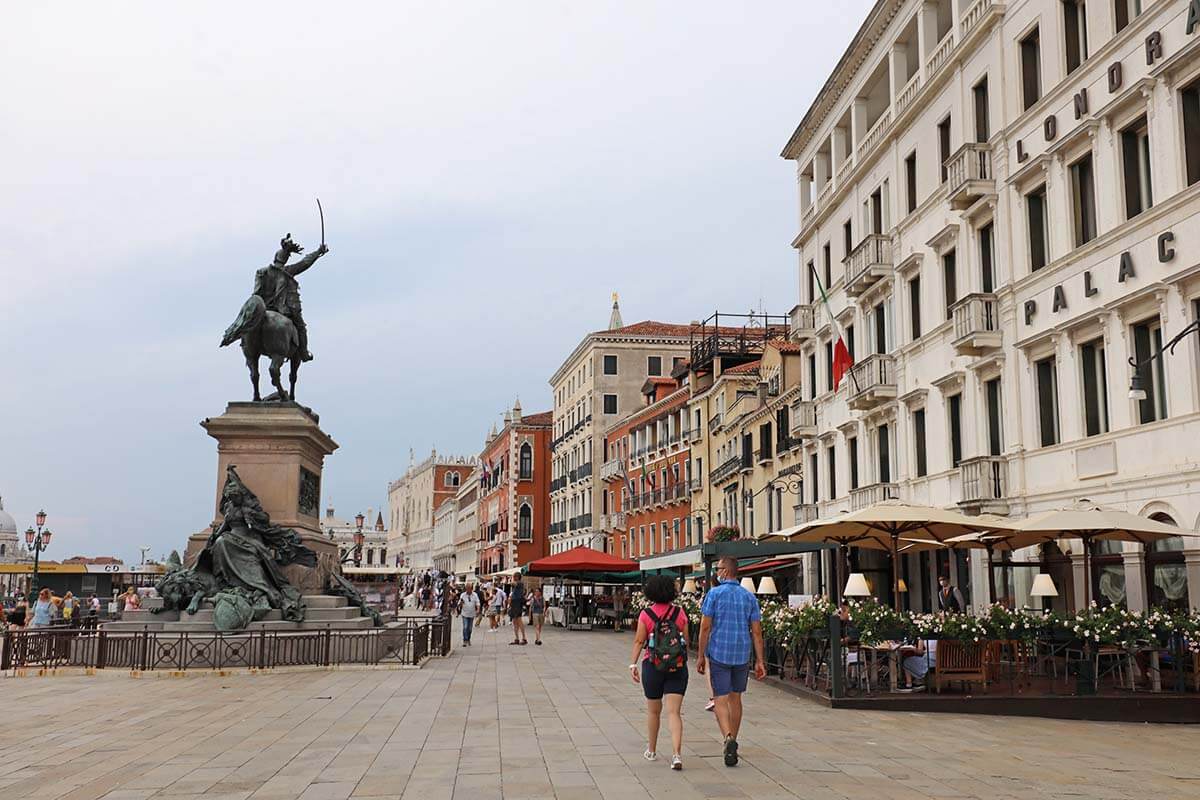
Venetian Arsenal & Biennale Gardens (optional)
In the Castello district, you can visit the Venetian Arsenal ( Arsenale di Venezia ). The Arsenal is the former shipyard and construction site of the Serenissima fleets. It also represented the political, economical, and military power of Venice.
Its construction started in 1104 and it was the largest industrial complex in Europe before the Industrial Revolution. Today the Arsenale is an exhibition space for the Biennale of Venice, an international cultural exhibition. If you have time, you can also visit the nearby Naval Historical Museum .
In this same area, you’ll also find the Biennale Gardens ( Giardini della Biennale ). This is the biggest green space in the historic city center of Venice. Established at the behest of Napoleon, at the start of the 19th century, they are also called the Napoleonic Garden.
The gardens are free to visit, but the pavillions can only be visited during the Biennale art festival (usually +- from April to November) and require a ticket (more info here ). You can also cross the bridge and walk to the nearby park Parco delle Rimembranze as well.
After strolling around the gardens, make your way back towards the city center. You could opt for dinner at one of the local restaurants in this area or treat yourself to something special – see below.
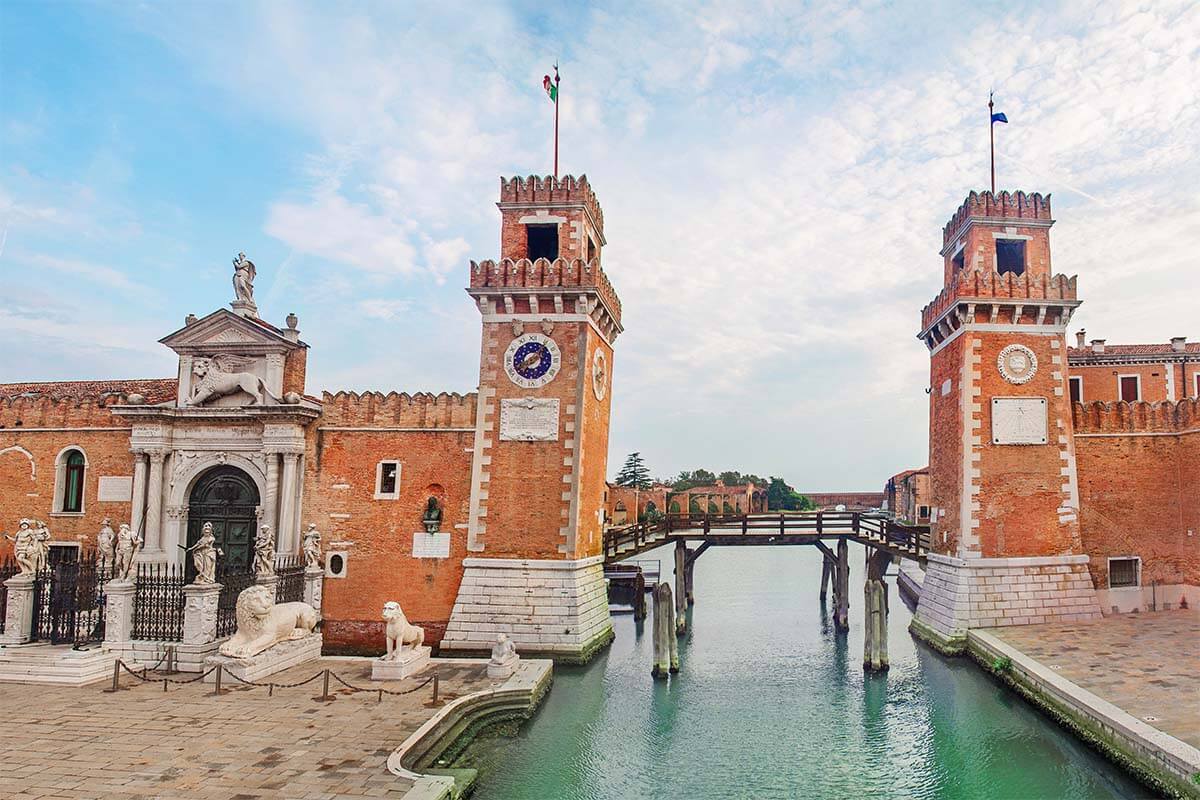
For dinner, you have many options. Here are some recommendations.
Just a short walk from the gardens, you’ll find a waterfront restaurant Antica Osteria da Gino . A bit more towards the center – a really nice traditional restaurant Nevodi . Yet another great choice is Osteria A La Scuela , a bit past the Arsenal.
Osteria A La Scuela is one of our personal favorites. Their selection of cicchetti ranges from grilled cuttlefish to black ones, including the fried cod with courgette flowers and the classic ones served with small pieces of bread. They also serve hot dishes like lasagna, Buranella pappardelle with scallop sauce, Venetian liver, pasta and falzioi (pasta with beans), Sarde in saor and bigoli . All the best of the Venetian and Veneto region cuisine!
TIP: If you are ok with one daily meal at a traditional restaurant for lunch and rather do something different for dinner, check out this Venetian Lagoon tour and dinner on a traditional Galleon boat . Granted, this is a more touristy option, but it can be a really nice experience as it gives you a chance to see more of the beautiful surroundings from yet another vantage point. They have fish and meat menus to choose from and it’s a unique gourmet experience.
However, depending on the season, these tours don’t run every day (and the best places sell out quickly in the high season). So check if it’s available and – if interested – book in advance.
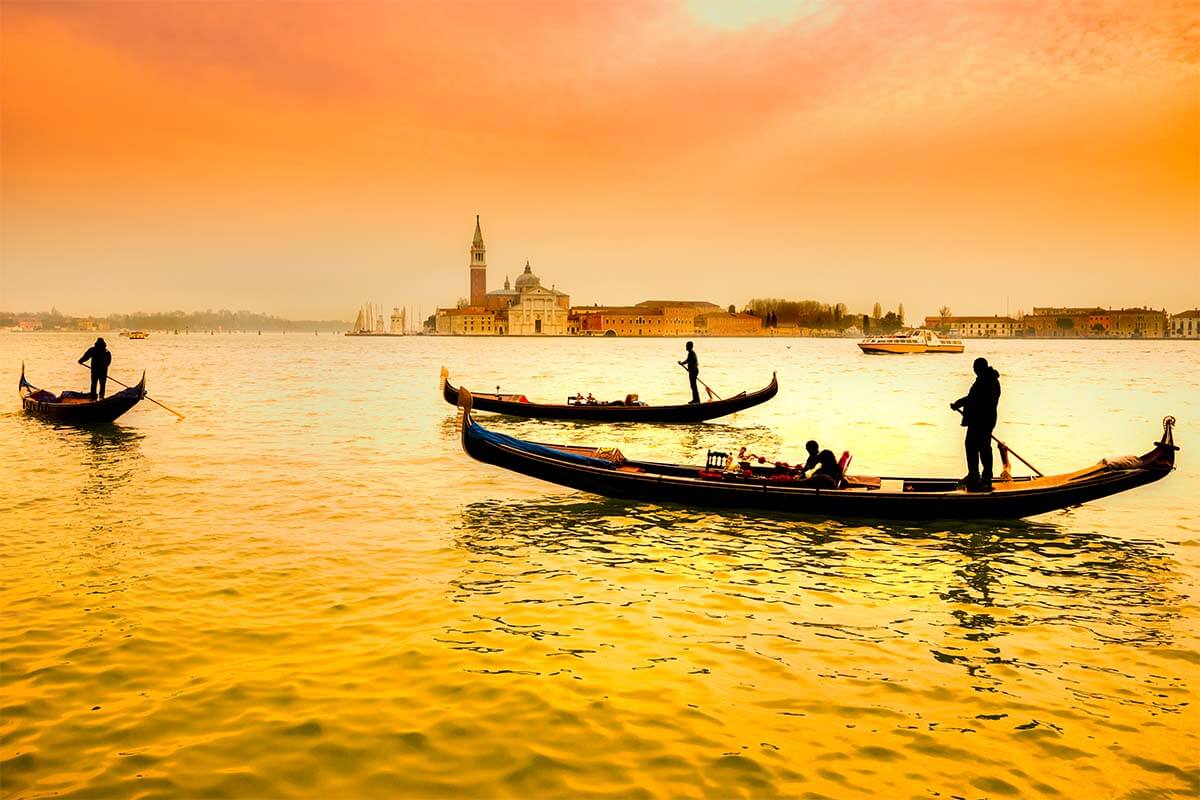
Day 3 in Venice
On your third day in Venice, you can spend some time visiting a few of the best museums and exploring less-touristic neighborhoods. Below, we share a suggested itinerary with some of the best options.
To help you plan an even more memorable trip, we also include some additional recommendations such as Venetian mask- or glass-making workshops. That way, you can create your own perfect itinerary following the recommendations that interest you the most.
Good to know: If you opted for a food tour on day 1, start the 3rd day in Venice by crossing the Accademia Bridge followed by a visit to Basilica di Santa Maria della Salute. The church is normally open from 9 am, except on Monday and Tuesday mornings. Afterwards, visit Zattere and continue with some of the places mentioned further below in our itinerary.

DAY 3 planning info/ tickets to book :
- Peggy Guggenheim Collection – tickets .
- Venetian Carnival Mask workshop (optional) – more info and bookings .
- Glass-making workshop (optional) – more info and bookings .
- Jewish Ghetto – walking tours .
- Food tour (optional) – see here .
Here are some of the best places you could visit on day 3 in Venice:
Gallerie dell’Accademia and/or Peggy Guggenheim Foundation
8.30-11 am .
There are a few museums in the Dorsoduro that you may want to consider visiting on your third day in Venice. The best ones are Gallerie dell’Accademia and Peggy Guggenheim Foundation .
The Accademia Galleries hold one of the biggest and most impressive collections of Venetian art, from the 14th to the 18th centuries. You can see masterpieces by Titian, Veronese, Canaletto, Giorgione, Tintoretto and Bellini. Here you can also admire the Vitruvian Man by Leonardo da Vinci! If you visit just one art museum in Venice, make it this one.
Practical information: The museum is open daily from 8.15 am. Count at least 1.5 hours for a visit. Keep in mind that this is one of the most-visited museums in Venice. While it’s nowhere nearly as busy as e.g. Doge’s Palace , it can get quite busy at times. If you want to visit without wasting much time, it’s best to book your tickets online. See their website for more info.
Just nearby, located in a beautiful waterfront Palazzo Venier dei Leoni , you’ll find another amazing museum, the Peggy Guggenheim Foundation . This is a modern art museum and a real art institution in Venice. It features European and American art of the 20th century.
The museum is Peggy Guggenheim’s personal collection of artworks. Today, the collection includes works of futurists and modernist artists with masterpieces of Surrealism, Cubism, and Expressionism. You can also expect to see some works by Dalì, Mirò, Picasso, Kandinsky, and Magritte, just to name a few.
Practical information: This museum is open daily except on Tuesdays, from 10 am. Also here, you’ll probably need at least 1 hour for a visit. The lines here can get quite long, so if you want to visit, it’s best to get your tickets in advance.

Campo Santa Margherita + Ca’ Macana
11 am-noon .
There’s no better way to visit Venice than getting lost in its narrow streets and small piazzas. One of the nicest town squares is Campo Santa Margherita .
This public square is certainly the best one in the Dorsoduro district where you can experience the more authentic Venetian lifestyle. During the day, you can find a fish market here. In the afternoons, local kids are playing football after school. This is also a popular meeting point for university students due to its wide selection of small bars and restaurants to have an aperitivo or an informal dinner.
This part of Venice is also great for some souvenir shopping from locally run businesses.
Only a few minutes walk from here, you can find Ca’ Macana . This is one of the best Carnival mask workshops in Venice. Here, you can find both traditional and old masks and more contemporary creations.
TIP: Are you looking for something unique to do in Venice? Do you fancy learning how to create a real Venetian mask? Then you can book a Venetian carnival mask-making workshop and learn the art of mask-making from the experts! This workshop is in this neighborhood, runs a few times a day, and only takes about 1 hour. So it could be a nice addition to your day.
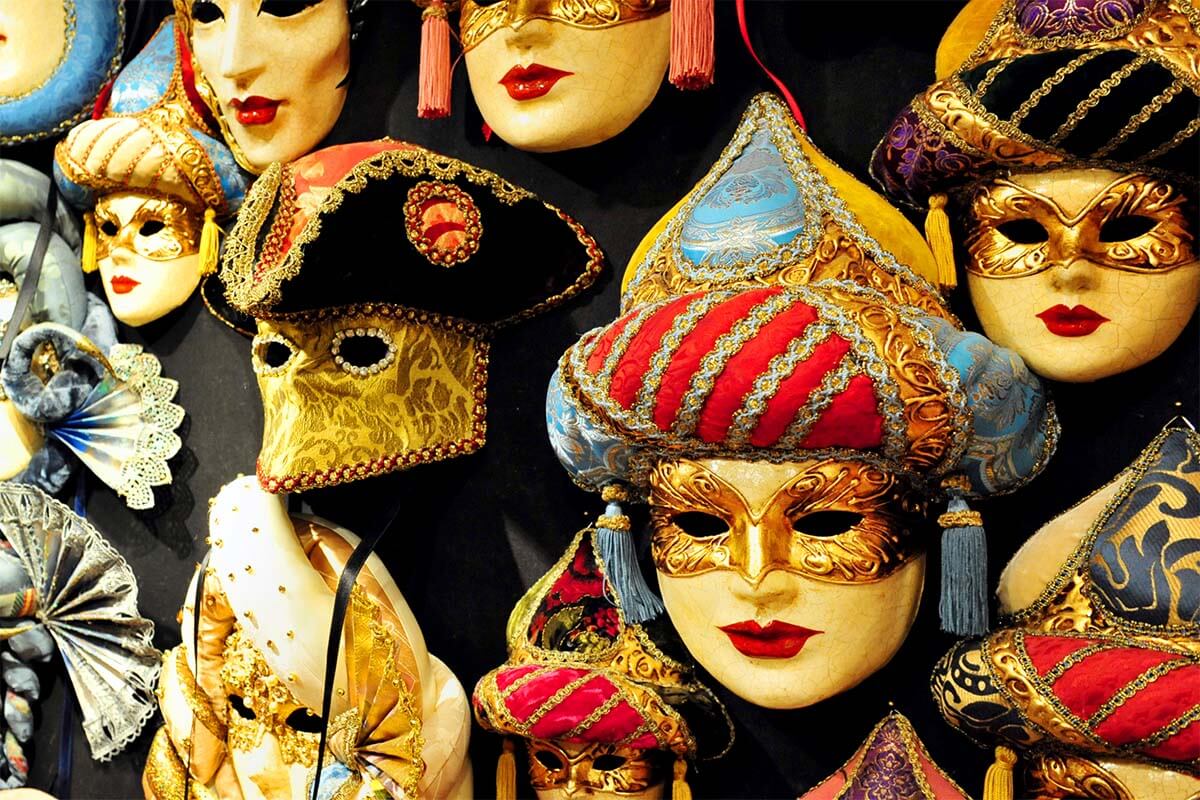
For lunch, you could try Osteria alla Bifora on Campo Santa Margherita. This is a traditional restaurant with a quirky interior and wonderful cicchetti (Venetian finger foods). It’s open daily from noon to late at night.
Basilica di Santa Maria Gloriosa dei Frari + Campo San Polo
Less than 10 minutes walk from here, in located in the San Polo neighborhood, you’ll find Basilica di Santa Maria Gloriosa dei Frari . This is one of the biggest churches in Venice and one of the most significant Franciscan places in Italy. The interior is stunning and you can see many paintings and sculptures of Saint Francis of Assisi and Saint Anthony of Padua.
The three masterpieces not to be missed are the Altarpiece of the Assumption, the Virgin Mary from Ca’ Pesaro by Titian, and the tryptic of Giovanni Bellini, in the sacristy of the church.
After leaving the church, you can visit the nearby Campo San Polo. This is the largest ‘campo’ of Venice and in the past, was a marketplace as well as a playing arena. It’s a nice place to relax, sit down on a bench, and do some people-watching for a few minutes.
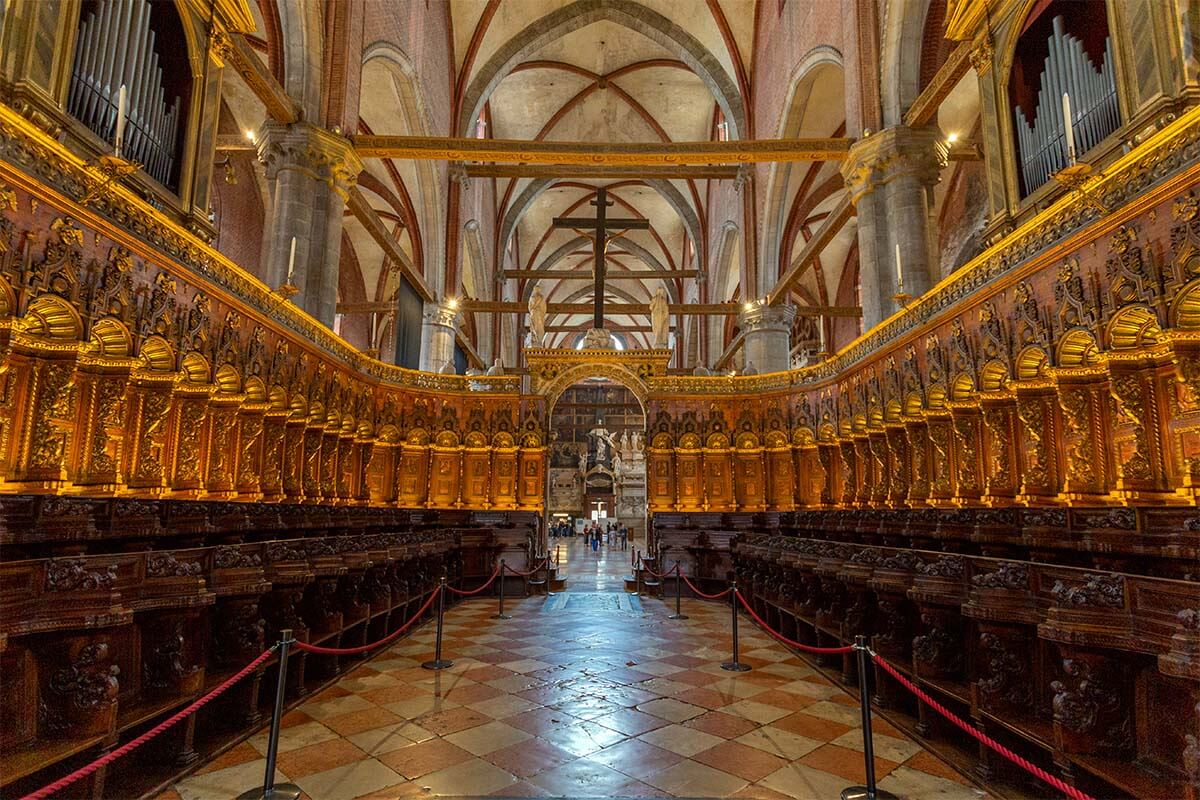
Calle Varisco and/or glass-making workshop (optional)
“Calli” are Venetian pedestrian streets, and it’s said that there are more than 3,000 calli in Venice. So by now, you will have probably seen hundreds of them. Some are quite large, others pretty narrow, but you still haven’t seen the narrowest of all!
So if you want to see the narrowest street in Venice , head to Calle Varisco . In some places, this street is only 53 cm (1.7 ft) wide, which means that you’ll have to walk sideways to pass through it.
Good to know: Calle Varisco is a bit out of the way from all the rest, about 20 minutes walk from Campo San Polo. You’ll have to cross the Rialto Bridge in order to get here. This is a more off-the-beaten-path place in Venice, but might be worth visiting if you have some free time and want to see something a bit different. Of course, you’ll also pass many other nice local streets on your way there.

TIP: If you are already planning on going out of your way to this area, just near Calle Varsico, you can attend a really nice workshop with a local glass master and create your own glass artwork.
In that case, see if this workshop is available for the day of your visit and choose the time slot that fits your itinerary best. If you do this, count at least 1.5 hours for this area.
Alternatively, this is something that you could also do in Murano on day 2 of this itinerary. See several glass workshop options here .
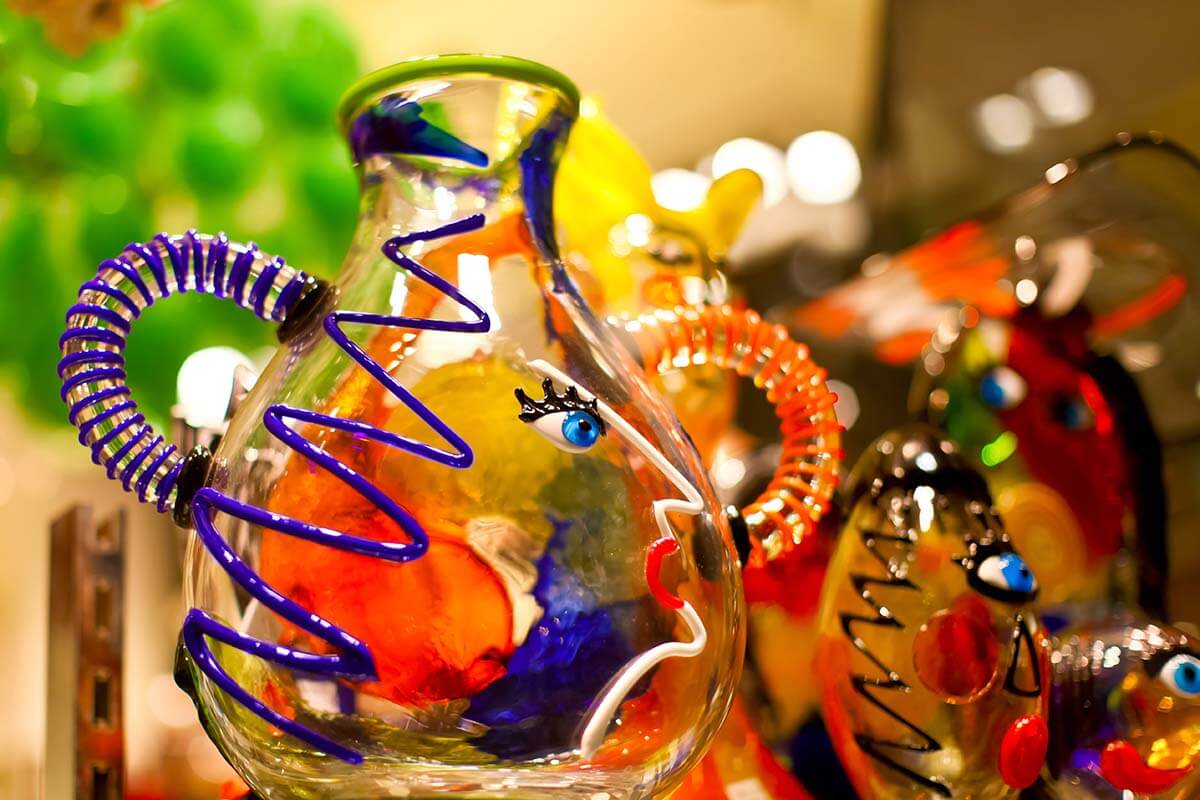
Jewish Ghetto + Cannaregio neighborhood
About 20 minutes walk from Calletta Varisco, you can reach the Jewish Ghetto located in the Cannaregio neighborhood .
This was the area of the city where Jews were segregated around the 16th century at the behest of the Doge Leonardo Loredan. It’s also thought to be the oldest ghetto in the world. Nowadays, there’s a community of about 450 Jews living here.
The main square is the place where local people like to gather for a chat. The surrounding streets are dotted with small art galleries and bakeries owned by Jew families.
Try some delicious pastries from the bakery of Giovanni Volpe . This is also the perfect place to find good restaurants to indulge in some kosher food.
Around the ghetto, you can explore more of the district of Cannaregio. Some of the main highlights are the Ponte delle Guglie, Ponte dei Tre Archi, Casa del Tintoretto, and the churches of San Marcuola and Madonna dell’Orto.
TIP: There are many interesting walking tours that visit the Cannaregio neighborhood and the Old Ghetto . If you would like to explore this area deeper, it might be a good idea to go with a local guide.
Optional addition: If interested, you can also take some time to visit the Jewish Museum . It’s a beautiful museum to explore with a collection of books and manuscripts as well as religious Jewish objects used during the traditional ceremonies. Furthermore, your ticket also includes a visit to Levantine and Spanish synagogues (two of the oldest Venetian synagogues – absolutely impressive!), accompanied by an expert guide.
Check their website for more information and synagogue tours. In that case, you’ll likely need at least another hour in this area.
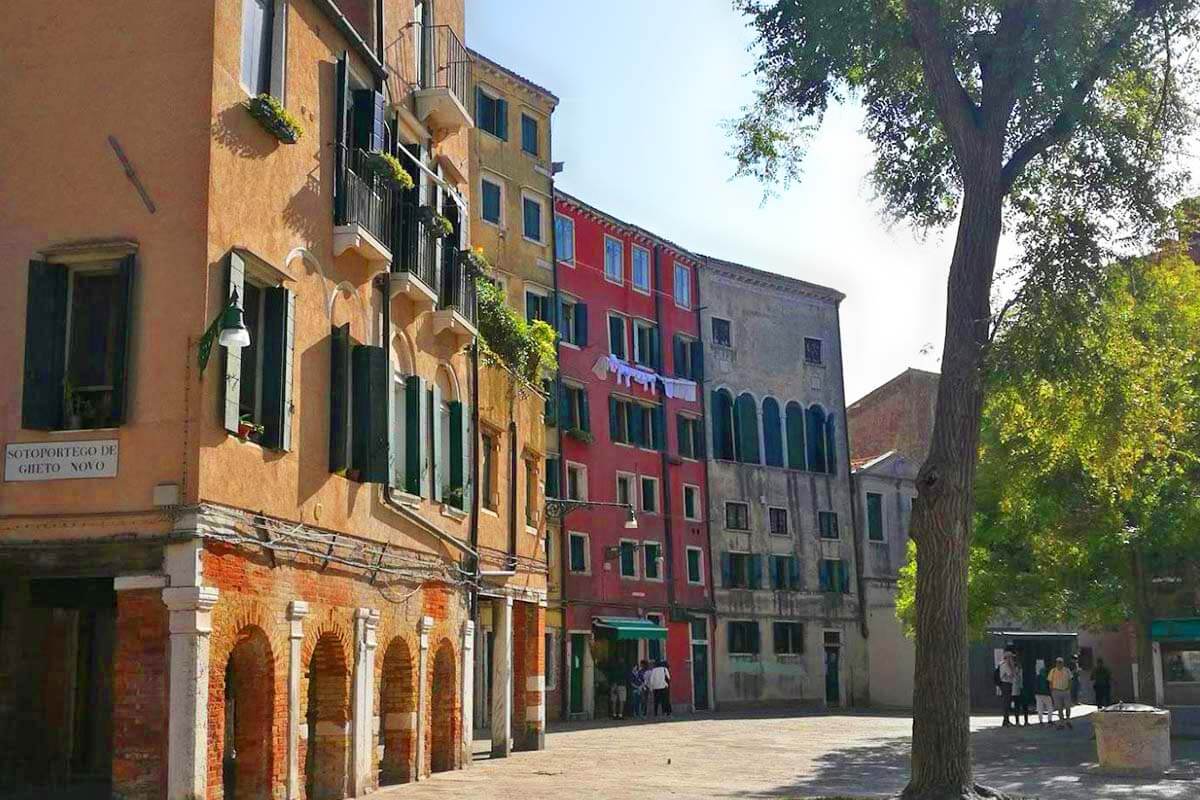
Aperitivo and dinner at sunset
Depending on the time of the year (and when the sun sets), you might be able to enjoy another beautiful sunset in this part of Venice. Head to either Fondamenta dei Ormesini / Fondamenta de Misericordia or Fondamenta Cannaregio – nice streets next to a canal with many bars and cafes.
Osteria Al Timon on Fondamenta dei Ormesini is a great place for either aperitivo or dinner. From 5 pm, you can sit down for a drink or get some traditional ‘cicchetti’ made with local ingredients directly from the counter, in a very informal but lively atmosphere. They also serve excellent seafood, traditional steaks, etc.
Trattoria dalla Marisa on Fondamenta Cannaregio is another great place for dinner in this area. This is a very low-key trattoria where you can sample some traditional Venetian dishes cooked by the skillful hands of Italian nonna (grandmas). The small restaurant is known by locals (students and workers) but you won’t find that many tourists here (yet). The menu can change every day based on the fresh and seasonal products arriving. It’s open for dinner from 7.30 pm, but only on Tuesdays and Thursdays to Saturdays.
TIP: A nice way to end your last day in Venice is by joining a food tour with a local . In the Cannaregio district, you can opt for this highly-rated private evening food tour . Alternatively, get back to the city center where you’ll find many other restaurants and also interesting food (and wine) tours .
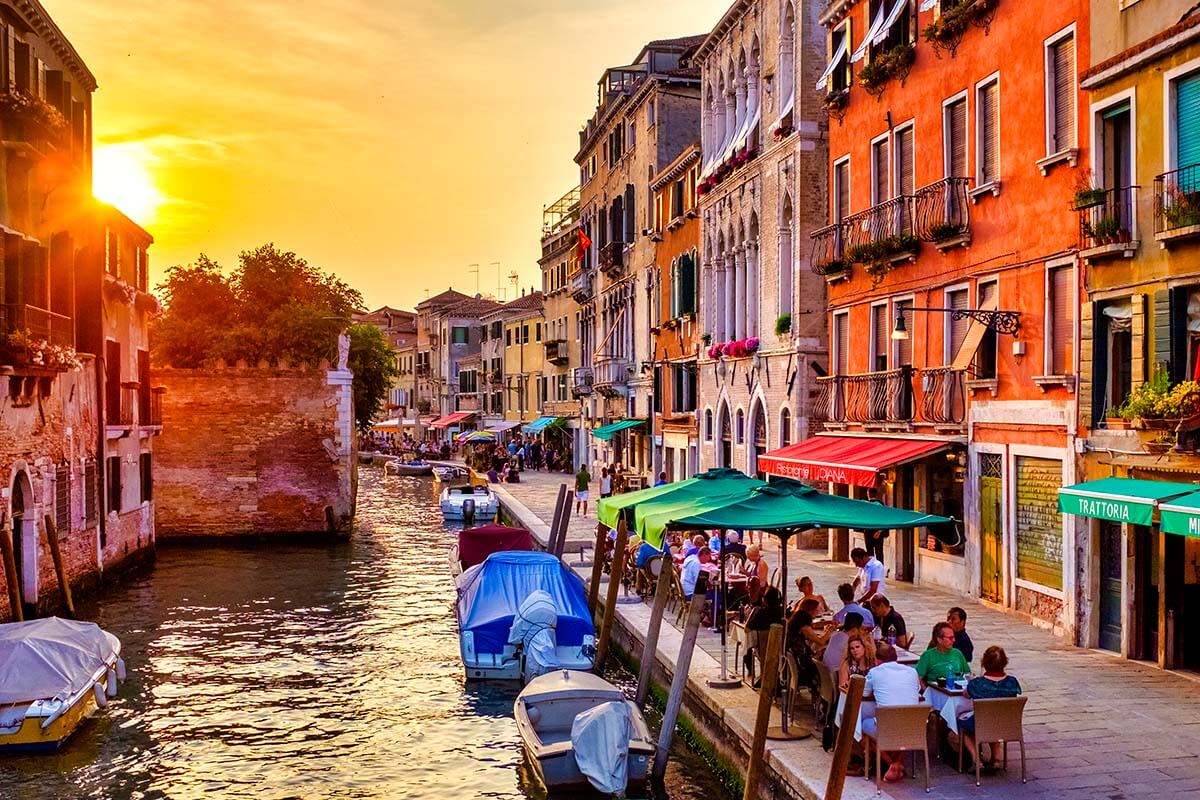
Venice 3-day itinerary overview
Here’s a short overview of the itinerary described above. Further below, you can find a map indicating all these places.
8-9.30 am: Rialto Bridge + market + gondola ride . 9.30-10.30 am: St. Mark’s Square + San Marco Campanile ( tickets ) + St. Mark’s Basilica ( tickets ). 10.30 am-12: Doge’s Palace ( tickets ) + Bridge of Sighs. 12-1 pm: Fondaco dei Tedeschi rooftop. Lunch: Al Mercá. 2-2.45 pm: Libreria Acqua Alta. 3-4 pm: La Fenice Theater . Alternative suggestion instead of the below: 5-7.30 pm street food tour . 4-4.30 pm: Ponte dell’Accademia. 4.30-5 pm: Santa Maria della Salute Basilica. 5-6 pm: Zattere for sunset on Giudecca island. Aperitivo and dinner at Osteria al Squero, Lineadombra, or Trattoria ai Cugnai dal 1911.
9.30 am: Murano / Burano / Torcello half day tour (or longer tour and adjust the itinerary below based on that). 2 pm: Lunch at Osteria da Carla or Il Calice. 3.30-4 pm: Riva degli Schiavoni walk. 4-6 pm: Arsenale and Biennale Gardens + free time. Dinner: Osteria A La Scuela, Nevodi, Antica Osteria da Gino, or Venetian Lagoon boat tour with dinner .
8.30-11 am: Galleria dell’Accademia and/or Peggy Guggenheim Foundation. 11 am – noon: Campo Santa Margherita + Ca’ Macana. Possibly a Venetian mask-making workshop . Lunch at Osteria alla Bifora. 1-2 pm Basilica di Santa Maria Gloriosa dei Frari + Campo San Polo. 2.30-3 pm Calle Varisco. Possibly a glass-making workshop . 3.30-6 pm Jewish Ghetto + Cannaregio neighborhood. Aperitivo and dinner al Timon and/or Trattoria dalla Marisa, or a food tour .
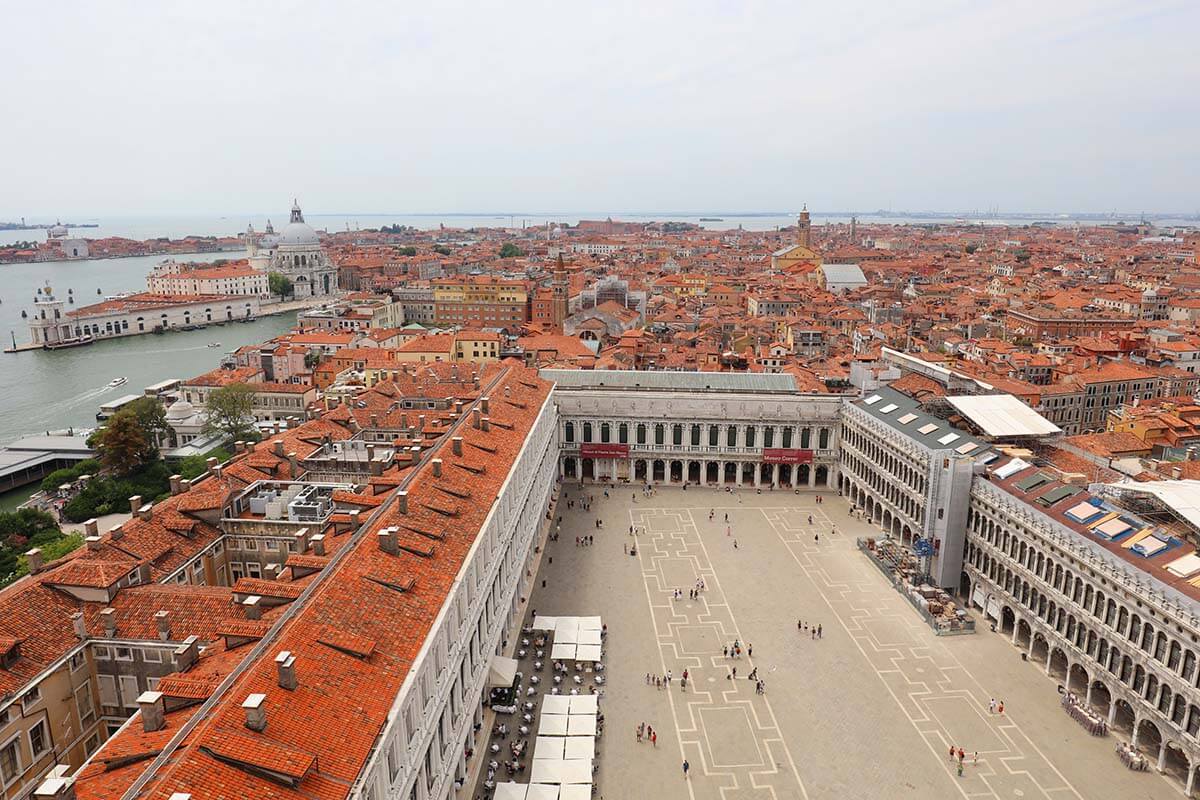
To help you plan your Venice itinerary, we created a map indicating all the places, sights, and attractions mentioned in our guide. We also indicated all the restaurants described above.
Each day has another color – that way, you can easier see which places belong together.
Of course, you can adjust this itinerary to your interests and the time that you have. But it gives you a good idea of the best places to see, things to do, and how it can all fit together in just 3 days. Further below, you can also find some practical tips for your visit to Venice.
How to use this map: Use your computer mouse (or fingers) to zoom in or out. Click on the icons to get more information about each place. Click the arrow on the top left corner for the index. Click the star next to the map’s title to add it to your Google Maps account. To view the saved map on your smartphone or PC, open Google Maps, click the menu and go to ‘Your Places’/’Maps’. If you want to print the map or see it in a bigger window, click on ‘View larger map’ in the top right corner.
Some practical tips
Here are some useful tips for your visit to Venice:
- The best months to visit Venice are from March to early June and from September to mid-October. This way you’ll avoid the overcrowded summer months and the heat. If you can, try to avoid the peak cruise-ship season. In winter, you have more risk of ‘acqua alta’ aka the high tides, rain, and colder temperatures. But if you want to experience Venice without the crowds, it can be a nice time to visit too.
- Visiting during large-scale events such as the Carnival, the Biennale of Venice, or the Redentore festival is a fantastic way to experience Venice as well. Just bear in mind that accommodation prices will be higher and the streets in the center will be even more packed.
- If you want to visit any of the top attractions inside (Doge’s Palace, San Marco Basilica, theater, museums, etc.), be sure to book in advance !!! Also for accommodation, it’s best to book well in advance or you risk having to pay 500-700 euros per night for an average hotel.
- Avoid restaurants located on the main streets or the ones facing the main canals. Most of them are tourist-oriented but lack authenticity. The food is often not of the best quality and is overpriced too. If you want to dine at a specific restaurant, it’s best to reserve a table a day or two in advance as well.
- Prepare to walk a lot and wear comfortable shoes . Pack a refillable water bottle and – in summer – sun protection .
- While it’s sometimes fun to just wander around and get lost in that labyrinth of narrow streets and canals, if you want to get from one place to the other without wasting precious time, use a navigation app on your phone. We always use Google Maps in Venice and it works really well.
- The closest airports to Venice are Venice Marco Polo and Venice Treviso. If you arrive at the Venice Marco Polo airport you can get to Venice city center by water bus, shuttle bus or private transfer by car or boat. From Venice Treviso, you can take a shuttle bus. You can find some of the best airport transfer options here . Here you can find information and tips for visiting Venice by car .
- The best neighborhoods to stay in Venice are San Marco and San Polo in the heart of the city or Dorsoduro, just a bit away from the biggest crowds. In these areas, you’ll find the best hotels, guest houses, apartments, and B&Bs, all close to the top attractions.
TIP: Using the map below, you can search for the best accommodation options for your stay in Venice. Simply insert your travel dates and group size, and you’ll see some of the best deals right on the map. Check it out!
So, this is our detailed guide and suggested Venice itinerary for 3 days, coupled with local’s tips and recommendations.
Of course, you can adjust it to your needs and preferences. But we hope that this guide gives you a good idea of the main places to see, as well as some ideas and inspiration for getting a bit off the beaten path.
Often, these additional experiences and local discoveries make for some of the most memorable moments and best memories from your trip. Have a great time in Venice!
More information and inspiration for visiting Venice:
- Best things to do in Venice
- Doge’s Palace, Venice
- Gondola Ride in Venice (what to expect & tips)
- Venice 1-day itinerary
- Visiting Venice with a baby or a toddler
- Driving and parking in Venice
YOU MAY ALSO LIKE TO READ: How to Plan a Trip to Europe (Tips & Tricks)
If you found this post useful, don’t forget to bookmark it and share it with your friends. Are you on Pinterest? Pin this image!
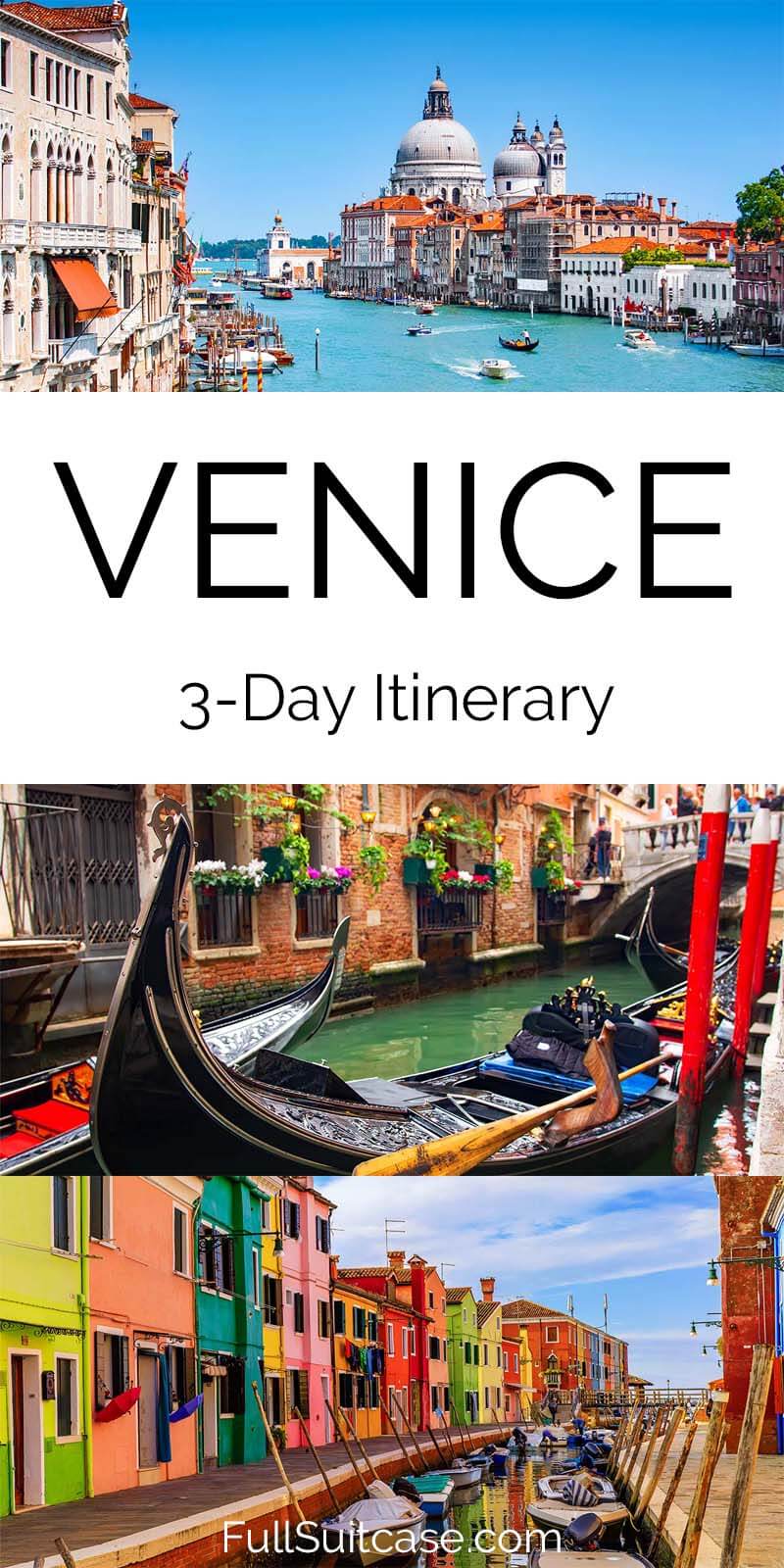
More guides and inspiration for visiting some of the most popular Italian cities:
- Tips for Visiting Rome
- Best Things to Do in Rome
- Hidden Gems of Rome
- Best Views & Viewpoints in Rome
- Ancient Rome Sites & Landmarks
- Rome Underground: Best Places to See
- Where to Stay in Rome
- 1 Day in Rome
- 2 Days in Rome
- 4 Days Rome Itinerary
- Best Things to Do in Florence
- 1 Day in Florence
- Florence Rooftops with Best Views
- Best Things to Do in Siena
- Best Things to Do in Montepulciano
- Tuscany Itinerary
- Best Towns to See in Tuscany
- Best Things to Do in Verona
- Best Things to Do in Milan
- Milan in One Day
- Best Things to Do in Lake Como
- Best Towns to See in Lake Como
- Best Villas of Lake Como
- Where to Stay in Lake Como
- Lake Como Travel Tips
- Best Things to Do in Bologna
- Florence to Bologna Travel Info & Itinerary
- Best Things to Do in Naples
- 1 Day in Naples
- Best Day Trips from Naples
- Where to Stay in Naples
- How to get from Naples to Amalfi Coast
- Amalfi Coast Itinerary
- Naples + Amalfi Coast Itinerary
- Where to Stay on Amalfi Coast
- Tips for Visiting Amalfi Coast
- Best Things to Do in Ravenna
- For many more destinations, see our Italy travel guide .
This site uses Akismet to reduce spam. Learn how your comment data is processed .
Thursday 7th of September 2023
I am blown away by your website. Came across it by accident - so glad I stopped for a look! Planning a 4-week "turning 60" trip with my best friend, neither of us is a seasoned traveller and feeling trepidation. Not any more! All your practical advice and tips on top of clear itineraries are such a pleasure, I'm taking notes like crazy...I know you are going to be with us every step of the way. Thanks for all your hard work.
Monday 11th of September 2023
Thank you so much for your kind feedback, Susan. Enjoy Italy!
Wednesday 26th of July 2023
My wife and I will be in Venice for 3 days prior to a Mediterranean cruise next Spring. We plan on using your blog as our guide. Our cruise ends in Barcelona, wondering if you've covered that city in any of your other work. I couldn't find anything on-line, thought I'd drop this note. Thank you for such a great itinerary for Venice, we're super excited to go. Safe travels, Mike
Tuesday 1st of August 2023
Hi Mike, you can search our website using the magnifying glass icon at the top for any city and you'll find articles if we have covered it. We have quite a few of articles about Barcelona - please see here. Have a great trip!
jay sughroue
Wednesday 29th of March 2023
Do you have pdf file that can be downloaded with all the information?
Thursday 30th of March 2023
Hi Jay, you can do Ctrl+p and then choose to save to a pdf rather than send it to your printer.
Allen Muench
Thursday 9th of March 2023
Awesome pictures and descriptions! BTW, would you happen know the name of the restaurant in the picture at the top of your artical (Under the Jan 27th date?) I just oil painted the identical picture that my wife took back in 2005.If I go back to Venice I would like to visit the restaurant. Or even the address if you have it. Regards, Allen
Friday 10th of March 2023
Hi Allen, if you mean the featured image with the gondola, no, I really have no idea what's behind it. So I'm afraid I can't help you.
jonathan taylor
Tuesday 8th of November 2022
many thanks for your blog, we used it for our trip to Venice and found it invaluable, we didn't manage to fit everything in but hey there is always another time! we just picked bits out of it and made up our own itinerary we had a great time, so keep up the good work
Thursday 10th of November 2022
Glad to hear that and thanks for the kind feedback, Jonathan. Indeed, it's always difficult to see 'everything' and that shouldn't be the point either. The most important is that you have a great experience and enjoy the place at your own pace. I often tell our readers that less is more and some of the best memories from our travels come from those relaxed moments in between rather than from rushing from one 'must-see' attraction to the other. Happy travels!

Select your language
Map of Venice: Top attractions
- © ComPart Multimedia
- Privacy Policy

24 Top-Rated Tourist Attractions in Venice
Written by Barbara Radcliffe Rogers Updated Dec 22, 2023 We may earn a commission from affiliate links ( )
In a city as filled with tourist attractions as Venice, it's hard to know where to begin. Perhaps the best way is to simply get lost for a few hours wandering through its enchanting little streets and passageways, strolling beside its canals, and finding its secret corners.
At every turn, you'll see something worth remembering with a photo. No matter where this exploration takes you, it's easy to find your way back to Piazza San Marco and the Grand Canal. Most of the best sights you'll want to visit lie around these two landmarks.
Venice is divided into six sestieri, neighborhoods that have distinctly different characters. San Marco is the central one, surrounded on three sides by a great loop in the Grand Canal. Across Rialto Bridge is the artisans' neighborhood of San Polo, and across the Grand Canal to the south is stylish Dorsoduro, with its prestigious art museums and lively squares.
At the outer edges are Santa Croce, Castello, and Cannaregio, home of the original Ghetto. Beyond the six sestieri – neighborhoods – of the city itself, you'll want to hop aboard a vaporetto to its islands: Lido, Murano, Burano, and Torcello. A fourth island, San Giorgio Maggiore, is worth visiting for the beautiful views of San Marco and Venice from the tower of its church.
To plan your stay so you won't miss any of the best places to visit, use this list of the top attractions and things to do in Venice.
1. St. Mark's Basilica
2. piazza san marco (st. mark's square), 3. palazzo ducale (doge's palace) and bridge of sighs, 4. canale grande (grand canal), 5. ponte di rialto (rialto bridge) and san polo, 6. torre dell'orologio (clock tower), 7. campanile, 8. santa maria della salute, 9. scuola grande di san rocco, 10. teatro la fenice, 11. ca' d'oro, 12. murano and burano, 13. peggy guggenheim collection, 14. explore the ghetto and museo ebraico di venezia, 15. santa maria gloriosa dei frari, 16. gallerie dell'accademia (fine arts museum), 17. santa maria dei miracoli, 18. palazzo rezzonico, 19. torcello island, 21. hear classical music in a church, 22. contarini del bovolo palace, 23. ca' pesaro and galleria d'arte moderna, 24. the arsenal and the museum of naval history, where to stay in venice for sightseeing, tips and tours: how to make the most of your visit to venice, venice, italy - climate chart, more things to see and do.
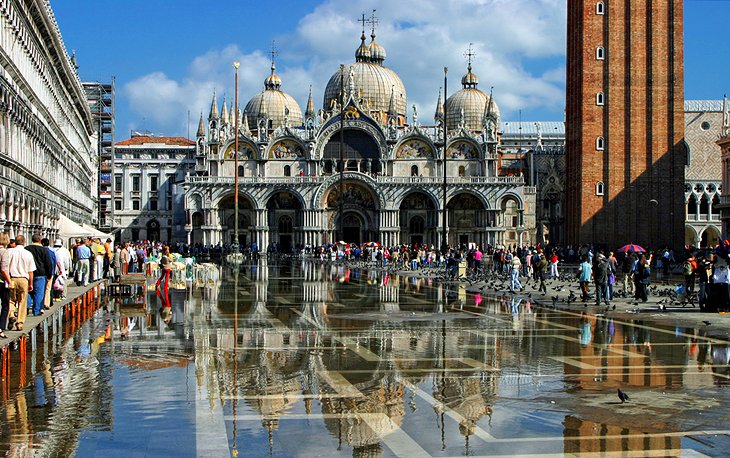
Certainly Venice's best-known church, and one of the most easily recognized in the world, St. Mark's Basilica (Basilica di San Marco) was originally the Doge's private chapel, decorated with Byzantine art treasures that are part of the booty brought back by Venetian ships after the fall of Constantinople.
The gold-backed mosaic pictures above the doorways on the façade only hint at the mosaic artistry inside, where 4,240 square meters of gold mosaics cover the domes and walls. These set a distinctly Byzantine tone to its soaring interior, but you'll find treasures from other periods, including later mosaics designed by Titian and Tintoretto - names you'll encounter all over the city.
The magnificent golden altarpiece, the Pala d'Oro , one of the finest in Europe, was begun by early 12th-century artists, and centuries later, adorned with nearly 2,000 gems and precious stones. If you can tear your eyes from this, the mosaic domes, and the multitude of richly decorated altars, glance down at the floor, a masterpiece of marble inlay. And take time to see the gold reliquaries and icons in the Treasury.
- Read More: Exploring St. Mark's Basilica in Venice: A Visitor's Guide
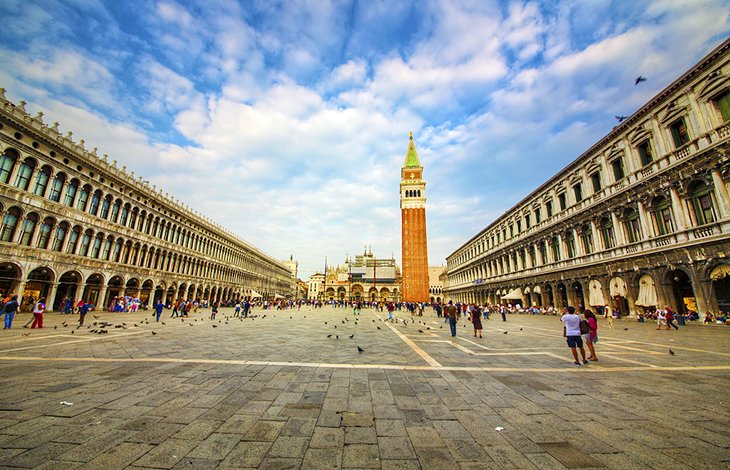
The vast expanse of Venice's largest square is brought together and made to seem almost intimate by the elegant uniformity of its architecture on three sides. But more than its architectural grace, St. Mark's Square (Piazza San Marco) is loved as Venice's living room, the place everybody gathers, strolls, drinks coffee, stops to chat, meets friends and tour guides, or just passes through on the way to work or play.
Three sides are framed in arcades, beneath which are fashionable shops and even more fashionable cafés. The open end is bookmarked by the erratic, exotic curves, swirls, mosaics, and lacy stone filigree of St. Mark's Basilica .
Above it towers the brick shaft of the campanile. For overviews of this busy piazza, you can go to its top or to the top of the Torre dell'Orologio , where a pair of "Moors" strikes the hour.
Author's Tip: Don't be tempted to sit on the steps around the piazza to eat a take-away sandwich. Or throw the crumbs to the pigeons. Both are illegal.
- Read More: St. Mark's Square, Venice: 12 Top Attractions, Tours & Nearby Hotels
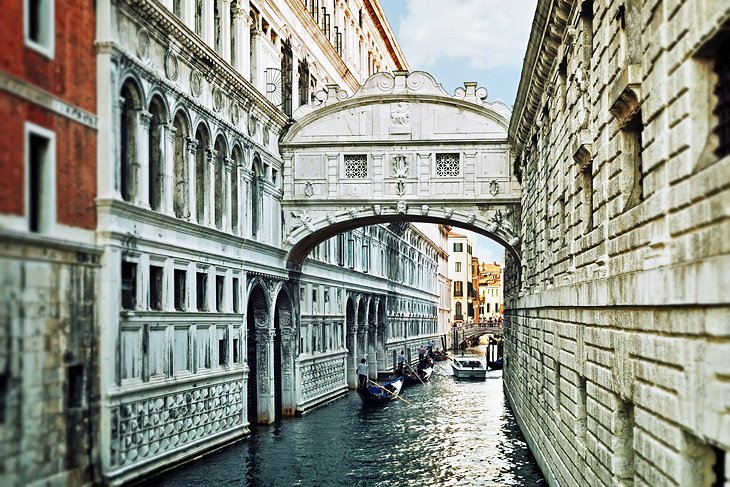
Visitors arriving in Venice once stepped ashore under the façade of this extraordinary palace. They couldn't have failed to be impressed, both by its size and the finesse of its architecture.
If they were received inside by the Doges, the impression would only strengthen as they entered through the Porta della Carta, a perfect example of Venetian Gothic at its height, and ascended the monumental Scala dei Giganti and the gold-vaulted Scala d'Oro to be received in what many consider to be the palace's most beautiful chamber, Sala del Collegio.
Even jaded 21st-century travelers gasp in awe at the palace's grandeur and lavish decoration. You'll see works by all the Venetian greats, including Tintoretto, whose Paradise is the largest oil painting in the world.
Not open on public tours but included on private tours is a walk across the Bridge of Sighs to the dark cells of the Prigioni - the prisons from which Casanova made his famous escape. The best view - and the postcard classic - of the Bridge of Sighs is from the Ponte della Paglia , on the Riva degli Schiavoni behind the Doge's Palace.
Lines for admission to the Doge's Palace are often long, but you can avoid these, and see sections of the palace not open to general visitors, with a Skip the Line: Doge's Palace Ticket and Tour . A local guide will take you past the lines and explain the history and art in each of the dazzling rooms before leading you across the Bridge of Sighs and into the notorious prison.
- Read More: Exploring the Doge's Palace in Venice: A Visitor's Guide
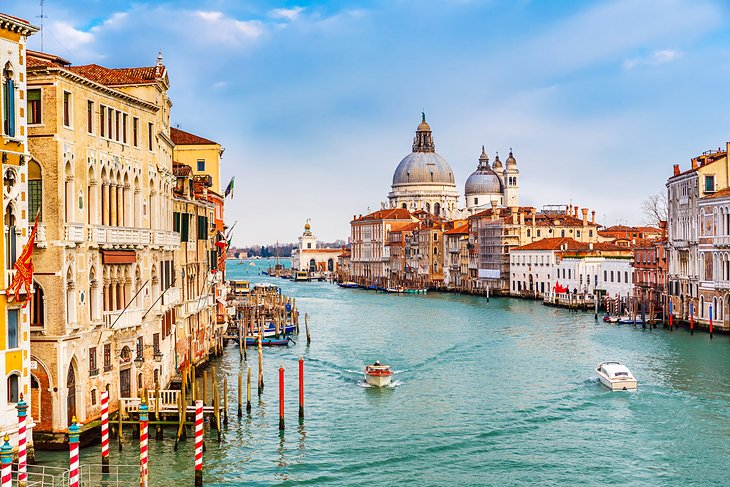
Sweeping through the heart of Venice in a giant reverse S curve, the Grand Canal is the principal boulevard through the city, connecting Piazza San Marco , Rialto Bridge, and the arrival points of the rail station and bridge from the mainland.
Only four bridges cross its 3.8-kilometer length, but stripped-down gondolas called traghetti shuttle back and forth at several points between bridges. The Grand Canal was the address of choice for anyone who claimed any influence in Venice. Palaces of all the leading families open onto the canal, their showy Venetian Gothic and Early Renaissance facades facing the water, by which visitors arrived.
These grand palaces – or at least their facades – are well preserved today, and a trip along the canal by vaporetto, Venice's floating public transport system, is the best way to see them. Or you can see the palaces at a more leisurely speed on a Venice Grand Canal Small Group 1-Hour Boat Tour , which also includes some of the smaller canals. And, of course, a ride along the Grand Canal in a gondola is one of the most romantic things to do in Venice at night.
- Read More: Exploring the Grand Canal in Venice: Top Attractions
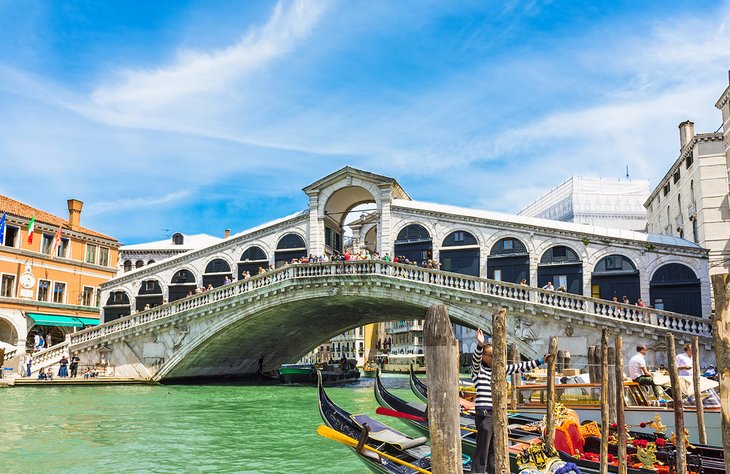
Once the only bridge across the Grand Canal , Rialto Bridge marks the spot of the island's first settlement, called Rivus Altus (high bank). Built in 1588, some 150 years after the collapse of a previous wooden bridge, this stone arch supports two busy streets and a double set of shops.
Along with serving as a busy crossing point midway along the canal, it is a favorite vantage point for tourists taking - or posing for - photos, and for watching the assortment of boats always passing under it.
The church of San Bartolomeo , close to the San Marco end of the bridge, was the church of the German merchants who lived and worked in the Fondaco dei Tedeschi (German Commodity Exchange) bordering the canal here. It has an excellent altarpiece, The Martyrdom of St. Bartholomew , by Palma the Younger. The former exchange is now a popular place to go shopping.
On the other side of Rialto Bridge is the busy food market, where Venetians and chefs shop for fresh produce and seafood. In the narrow streets of San Polo, beyond the market, are artisans' shops and mask-making studios, one of the best places for shopping in Venice . You'll also find places to eat that are not so filled with tourists as those nearer San Marco.
Author's tip: If you're visiting Venice with children , look for the carnival mask and costume studios in San Polo. Masks are inexpensive souvenirs of their trip to Venice.
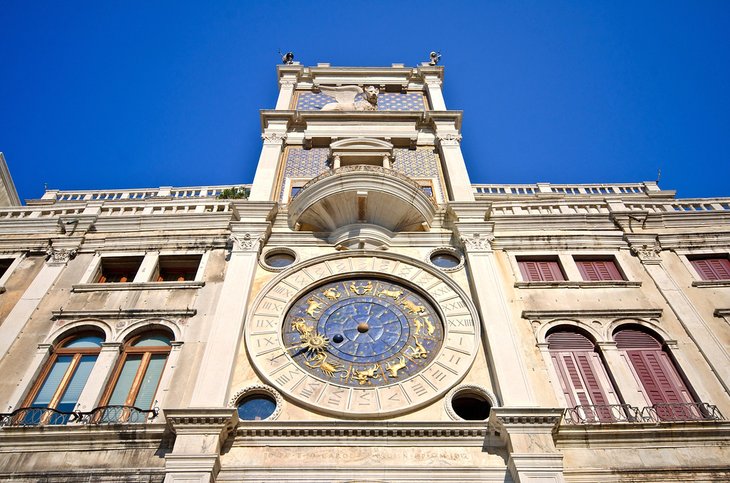
To one side of the basilica, facing onto Piazza San Marco, is one of Venice's most familiar icons, a clock tower surmounted by a pair of bronze Moors that strike the large bell each hour. The face of the clock shows phases of the moon and the zodiac in gilt on a blue background, and above the clock is a small balcony and a statue of the Virgin.
Above that, the winged Lion of St. Mark and a mosaic of gold stars against a blue background were added in 1755 by Giorgio Massari. The tower itself is from the 15 th century and typical of Venetian Renaissance architecture. Through an arched gateway at its base runs one of Venice's busiest streets, the narrow Calle Mercerei.
If you're in Venice during Ascension Week or at Epiphany, as the Moors strike each hour, you can see the Three Kings led past the Madonna by an angel. You can climb the tower for a closer look at the clockwork.
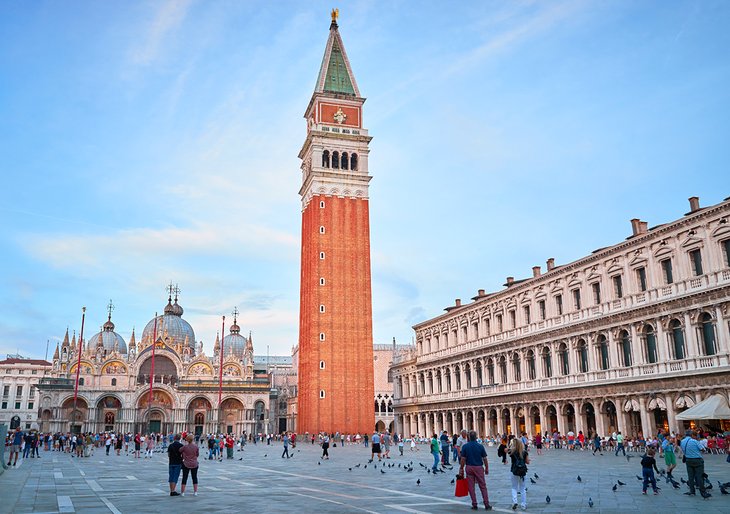
Standing like a giant exclamation point above the expanse of Piazza San Marco, the Campanile is not the first to stand here. The original one, erected as a lighthouse in 1153, collapsed dramatically into the piazza in 1902, and was rebuilt on a firmer footing. Also rebuilt was the Loggetta at its base, a small marble loggia completed in 1540, where members of the Great Council assembled before meeting in the sessions.
In the loggia at the base, you can see Sansovino's four bronze masterpieces between the columns, all of which were rescued from the rubble after the collapse. The Campanile has a grimmer side to its history: in the Middle Ages, prisoners, including renegade priests, were hoisted halfway up the outside in cages, where they hung suspended for weeks.
Today, the Campanile is a popular attraction for the views from the platform on top, which extends across the city and lagoon to the Adriatic (try to go early or late in the day, as lines for the lift can be very long).
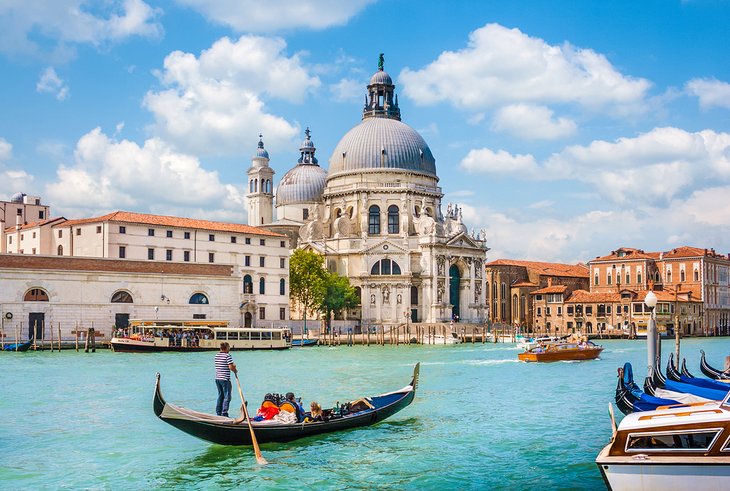
One of the most photographed churches in Venice, Santa Maria della Salute has a postcard setting, rising at the tip of a peninsula across from the Doge's Palace.
The monumental Baroque church was built as thanks for the end of the plague of 1630. But the fragile land wouldn't support its tremendous weight, so its architect, Baldassare Longhena, had more than a million timbers driven into the floor of the lagoon before he could erect the church.
The vaporetto landing is right in front of the church, and the highlight of its interior – apart from the magnificent dome – is the Sacristy, where you'll find paintings that include Tintoretto's Marriage at Cana .
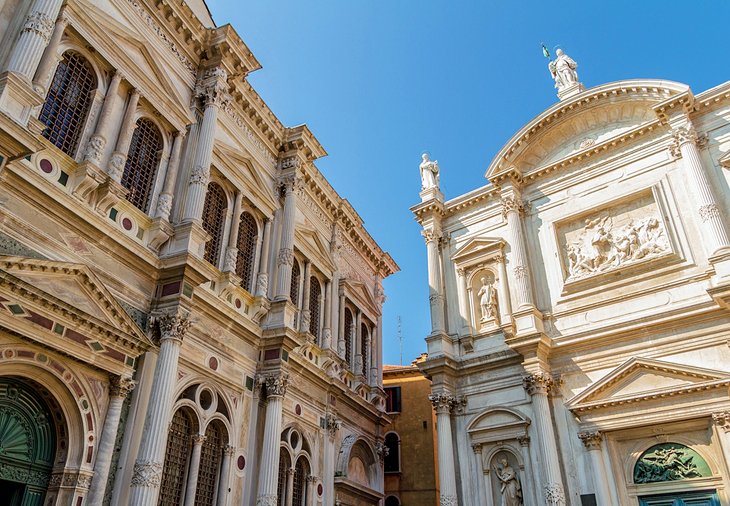
This impressive white marble Scuola Grande di San Rocco was built between 1515 and 1560 to house a charitable society dedicated to San Rocco. Soon after its completion, the great 16th-century Venetian artist Tintoretto won the competition to paint a central panel for the ceiling of the Sala dell'Albergo by entering the building and putting his painting in its intended place before the judging, much to the irritation of his rival artists.
He later decorated its walls and ceilings with a complete cycle of paintings, which are considered to be the artist's masterpiece. The earliest works, in the Sala dell'Albergo, date to 1564 and 1576 and include The Glorification of St. Roch, Christ before Pilate, the Ecce Homo, and the most powerful of all, The Crucifixion . Those in the upper hall depict New Testament scenes, painted between 1575 and 1581.
The lighting is not good, and the paintings themselves are dark, but you can still appreciate Tintoretto's innovations in the use of light and color. You can see the ceilings more easily with one of the mirrors that are provided. More works by Tintoretto are in the chancel of the adjacent church of San Rocco.
Address: Campo San Rocco, San Polo, Venice
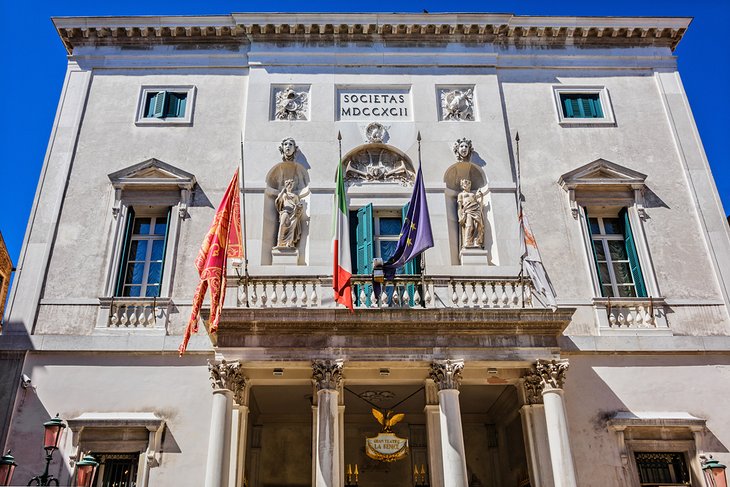
The name La Fenice (The Phoenix), chosen at the constriction in 1792, proved prophetic, as like the mythical phoenix, it has risen from the ashes. The theater has been destroyed by fire three times, the last one, in 1996, leaving only the outer walls standing. Each time, it has been rebuilt, and continues to be one of the world's great opera houses.
Throughout its history, but particularly in the 19th century, La Fenice saw the premiers of many of the most famous Italian operas, including those of Rossini, Donizetti, and Verdi, and today schedules performances of opera, ballet, and musical concerts.
Even after its reopening in 2003 with somewhat expanded seating, La Fenice is still a comparatively small opera house, so tickets are very hard to get, especially for major performances. You can take a tour of the spectacular Rococo interior, however, using an audio guide; these self-guided tours last about 45 minutes and include the public areas of the theater.
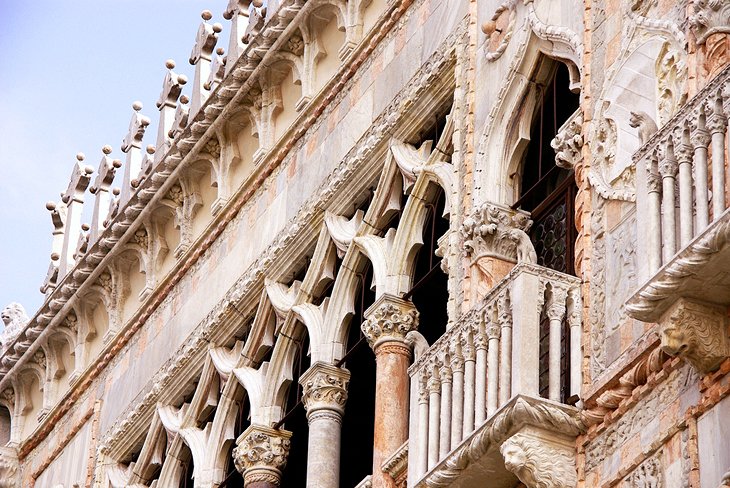
The delicate marble filigree by Bartolomeo Bon seems too lace-like to be carved of stone, and you can only imagine the impression this façade must have made covered in its original paint and gold. Along with the Porta della Carta in the Palazzo Ducale , also created by Bartolomeo Bon, The Ca' d'Oro is considered the most perfect example of Venetian Gothic.
You can admire the interior, too, as this palazzo is now an art museum, restored to provide both a setting for the art works and a look at the way wealthy Venetians lived in the 15th and 16th centuries. The connoisseur responsible for saving the palace, Baron Giorgio Franchetti, gave his art collection to the state in 1922, with works by Titian, Mantegna, Van Dyck, Tullio Lombardo, and Bernini.
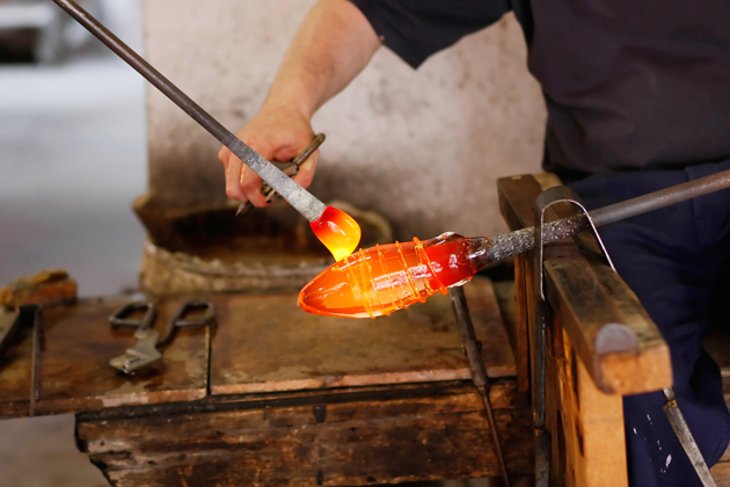
A trip to Venice wouldn't be complete without hopping aboard a vaporetto for the ride across the lagoon to Murano, home of Venice's fabled glass workers. They were sent here in the 13th century in hope of decreasing the risk of fire from one of the glass furnaces sweeping through Venice's tightly compacted center.
Or so they claimed. Just as likely, it was to keep the secrets of glassblowing a Venetian monopoly. This was no small matter to the Venetians, whose Council of Ten decreed in 1454: "If a glassblower takes his skill to another country to the detriment of the Republic he shall be ordered to return; should be refuse, his nearest relatives shall be thrown into prison so that his sense of family duty may induce him to return; should he persist in his disobedience secret measures shall be taken to eliminate him wherever he may be." It was a lot easier to keep track of them if they were confined to an island.
The canal sides today are lined by glass showrooms and studios, showing everything from cheap imported trinkets to exquisite works of art. Inside the 17th-century Palazzo Giustinian is the Glass Museum , with one of the largest and most important collections of Venetian glass from the time of the Romans to the 20th century.
But it's not all glass: The church of Santi Maria e Donato combines Veneto-Byzantine and Early Romanesque features, a result of its various stages of building between the seventh and 12th centuries. Notice especially the columns of Greek marble with Veneto-Byzantine capitals, the 12th-century mosaic floor with animal figures, and the St. Donato above the first altar on the left. Dated 1310, it is the earliest example of Venetian painting.
The 14th-century San Pietro Martire contains several splendid Venetian paintings: Bellini's Madonna in Majesty with St. Mark and the Doge Agostino Barbarigo and his Assumption of the Virgin , along with St. Jerome in the Wilderness and St. Agatha in Prison by Paolo Veronese.
It's a quick hop to the next island, Burano, a fishing village of brilliantly painted houses, known historically for its lace making. The Scuola dei Merletti (lace school) and its small museum will help you distinguish the real thing from the cheap imports you'll find in most shops.
The slender campanile of the 16 th -century church of San Martino leans at an alarming angle, made all the more dramatic by its height.
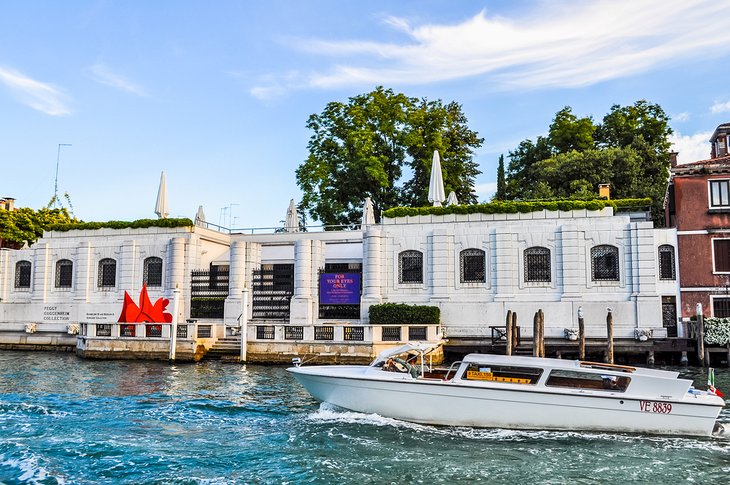
The personal art collections of heiress Peggy Guggenheim are housed in her former home alongside the Grand Canal, Palazzo Venier dei Leoni. Although most of Italy's great art museums are filled with masters of the Middle Ages and Renaissance, the Peggy Guggenheim concentrates on American and European art from the first half of the 20th century.
The low building, with its spare, white interior, is a fitting venue for these bold and often dramatic works, which represent Cubist, Futurist, Abstract Expressionist, Surrealist, and avant-garde schools of painting and sculpture.
The permanent collection includes works by Picasso, Dali, Braque , Léger , Mondrian , Kandinsky , Klee, Ernst , Magritte , and Pollock , and frequent exhibitions bring in works from other major artists. In the museum's sculpture gardens are works by Calder , Holzer , Caro , Judd , and Hepworth .
Address: 704 Dorsoduro, Venice
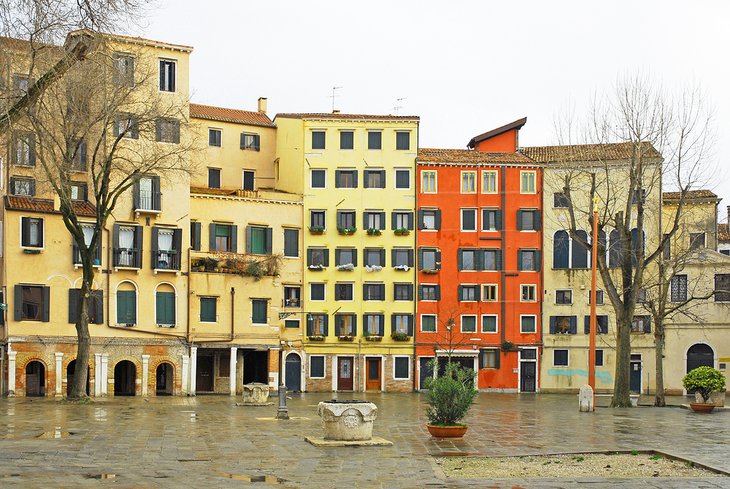
The Venetians called the foundry here geto , and in 1516 it was decreed that all Jews in the city would live on this islet, the origin of the word "ghetto." Residents could only leave in the daytime, and the gates were locked and guarded at night.
This part of the Cannaregio sestiere still has distinct Jewish presence, with synagogues and the Museo Ebraico di Venezia (Jewish Museum) with artifacts of Jewish life here from the 17 th and later centuries. Facing the Ghetto Nuovo Square, a touching memorial of bronze panels, created in 1980 by artist Arbit Blatas, remembers the victims of the deportation during the Nazi occupation of the city in 1943.
Address: Museo Ebraico di Venezia, Campo del Ghetto Nuovo, Cannaregio
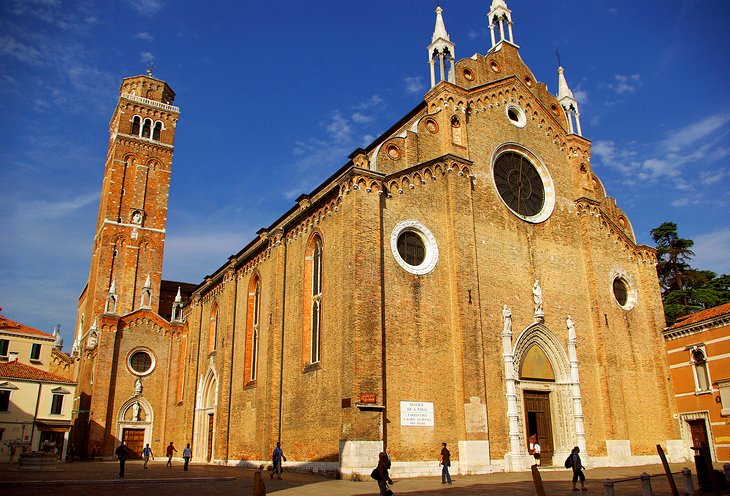
This Gothic church was begun by the Franciscans about 1340 and finished with the completion of the facade, interior, and two chapels in the middle of the 15th century. Its impressive 14th-century campanile is the second highest in the city.
Although the interior is in keeping with the simple unadorned style of Franciscan churches, it contains a wealth of artistic treasures. In the right transept is an important wood statue of St. John the Baptist by Florentine sculptor Donatello, done in 1451 (first chapel to the right of the sanctuary).
In the sacristy is a triptych Madonna and Child Enthroned with Four Saints by Giovanni Bellini. In the left transept, the statue of St. John the Baptist on the stoup of the Cappella Cornaro was created by the sculptor and master-builder Jacopo Sansovino
The Monks' Choir is an outstanding example of the wood-carving of Marco Cozzi, with reliefs of saints and Venetian scenes. And the sanctuary contains the tomb of two Doges by Antonio Rizzo, and over the high altar is Titian's Assunta , painted between 1516 and 1518. The Mausoleum of Titian in the south aisle was a gift from Ferdinand I of Austria, when he was King of Lombardy Veneto.
You can't help noticing the pyramidal mausoleum made by the students of the sculptor Antonio Canova in the north aisle, and opposite, the large monument to Titian, also by students of Canova. Beside the Cappella Emiliani, which has a fine mid-15th-century polyptych with marble figures, is Madonna di Ca' Pesaro , completed in 1526 and one of Titian's most important works.
Address: Campo dei Frari, I-30100 Venice
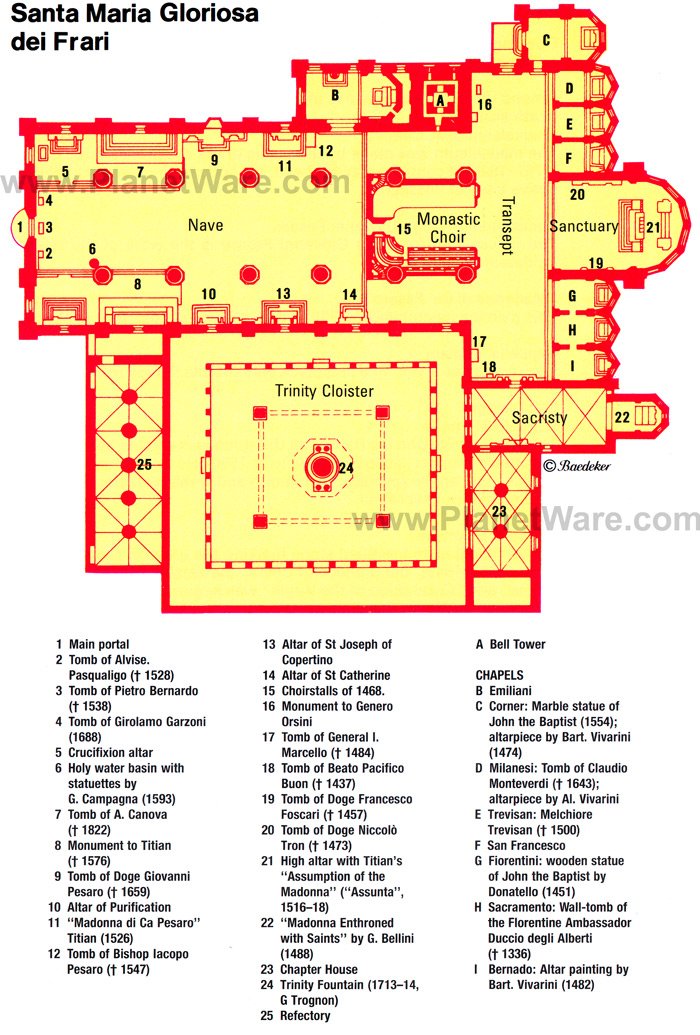
Called " The Accademia " for short, this museum on the Grand Canal has the most important and comprehensive collection of 15th-18th-century Venetian painting in existence. Much of the collection was assembled from monasteries and churches that were closed and from the clearing of palaces of noble families, now displayed in the former Monastery of Santa Maria della Carità.
Some of the galleries, such as the first one, which contains Venetian Gothic Painting, have richly carved and gilded 15th-century ceilings. Works are arranged chronologically, so you can not only trace the evolution of styles, but can compare the works of contemporaries.
Highlights of the 15th- and 16th-century paintings are St. George by Andrea Mantegna, St Jerome and a Donor by Piero della Francesca, Madonna and Saints by Giovanni Bellini, Portrait of Christ by Vittore Carpaccio, and Madonna under the Orange Tree by Cima da Conegliano.
St. John the Baptist and a magnificent Pietà by Titian, Tintoretto's Cain and Abel and The Miracle of St. Mark, Paolo Veronese's Marriage of St. Catherine and Supper in the House of Levi , St. Ursula by Vittore Carpaccio, and several works by Giambattista Tiepolo are also worth special notice.
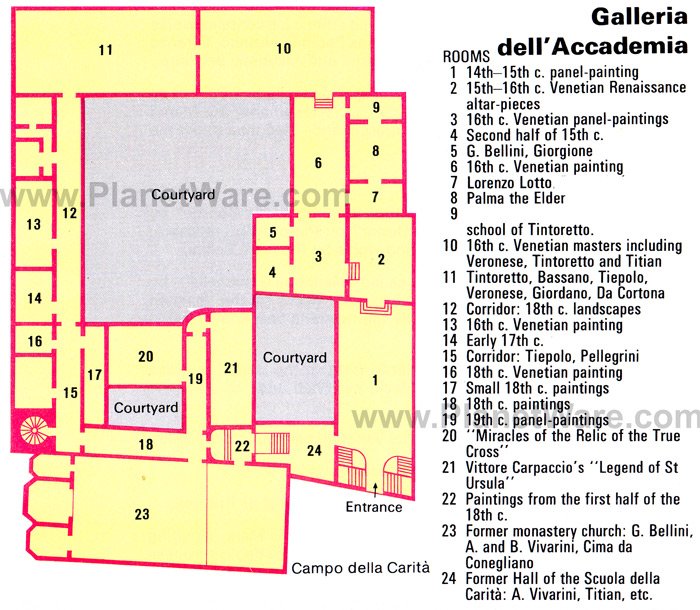
After the vast grandeur of St. Mark's and the soaring expanse of Frari, little Santa Maria dei Miracoli is like a fresh breeze, a masterpiece of Early Renaissance architecture by Pietro Lombardo. This jewel box of pastel inlaid marble was built from 1481 to 1489 to enshrine a miraculous picture of the Virgin.
Unlike Venice's other churches, whose facades are embellished with architectural flourishes and statues, Lombardo used painstakingly matched colored marble to create delicate patterns of rosettes, circles, octagons, and crosses on the facade. The method continues inside, which heightens the effect of the golden domed ceiling rising above gray and coral marble walls.
The nave is separated from the chancel by an exquisite Early Renaissance balustrade decorated with figures. It's no wonder that this is Venetians' favorite place to be married, as its interior is one of the most beautiful in the city.
Address: Campo dei Miracoli, Venice
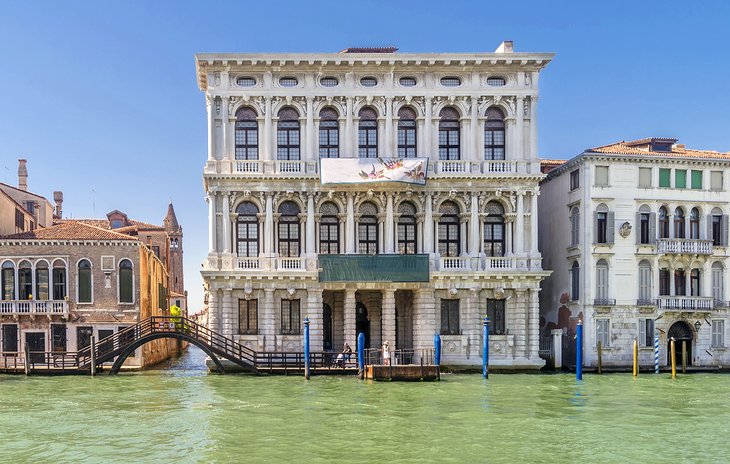
Just as Ca' d'Oro lets you glimpse into the life of the late Middle Ages, Palazzo Rezzonico gives a vivid picture of life here in the Baroque and Rococo periods, in the 18th century. Designed and begun by Venice's master of Baroque architecture, Baldassare Longhena, the palace was completed nearly 100 years later in 1750 by Giorgio Massari.
The furnishings and collections complete the picture painted by the building, including its interior decoration of silk wall coverings, elegant finish details, and Flemish tapestries. The costume collection highlights the importance of silk production in Venice from the late Middle Ages through the 18th century, when it was a major competitor with Lyon, France.
Rigid technical regulations were enforced, resulting in some of the most beautiful silk fabrics ever made. So important was silk that even in times of war with the Turks, battle lines parted for the silk-laden ships to pass through.
The museum details the importance of luxury goods, particularly clothing and fashion, for the Venetian economy in the 18th century, when brocades embellished with gold and silver thread produced here were treasured throughout Europe and the New World.
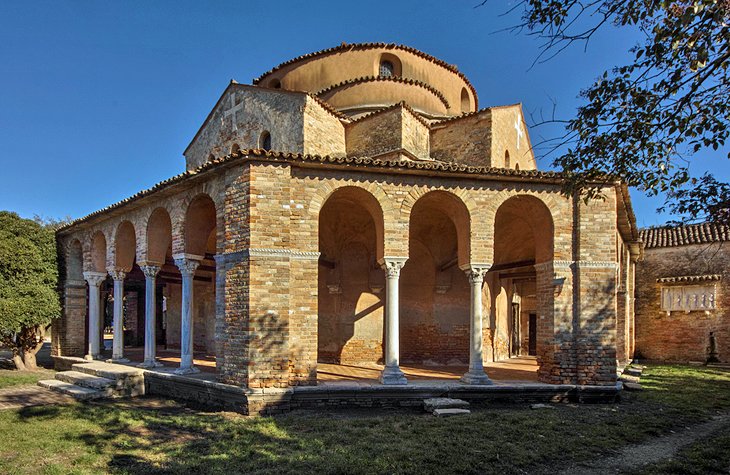
Venice began on this outer island of Torcello, founded here as early as the seventh century, and by the 12th century, it was a flourishing commercial town. Of its palaces, churches, shipyards, and docks, only two churches and a handful of houses remain, dotted over the large island.
You can get some idea of the importance of Torcello from its cathedral, dedicated in 639 to Santa Maria Assunta . It is considered the best remaining example of Venetian-Byzantine architecture. It was reconstructed in 834 and 1008, and the portico and two lateral apses were added in the ninth century; much of the building dates from the 11th century. The mosaics lining the interior are outstanding.
The oldest of these are in the chapel to the right of the high altar, where 11th-century angels carrying a medallion with the Lamb of God show a strong Byzantine influence. The Fathers of the Church ; Gregory, Martin, Ambrose, and Augustine; were added later, along with Christ in Majesty between two Archangels .
The 12th-century mosaics in the main apse and the Virgin and Child above a frieze of the Twelve Apostles surrounded by flowers are all on a gold background. The west wall is covered in tiers of a Byzantine mosaic of the Last Judgment from the late 12th or early 13th century.
Along with the exquisitely detailed marble carvings on the rood screen, notice the 11th-century mosaic floor and the pulpit, which was assembled in the 13th century from earlier fragments.
Adjoining the cathedral is the little 11th-century church of Santa Fosca , on a pure Byzantine central plan with a portico. Your admission ticket includes the interesting little historical museum with artifacts from antiquity to the 16th century.
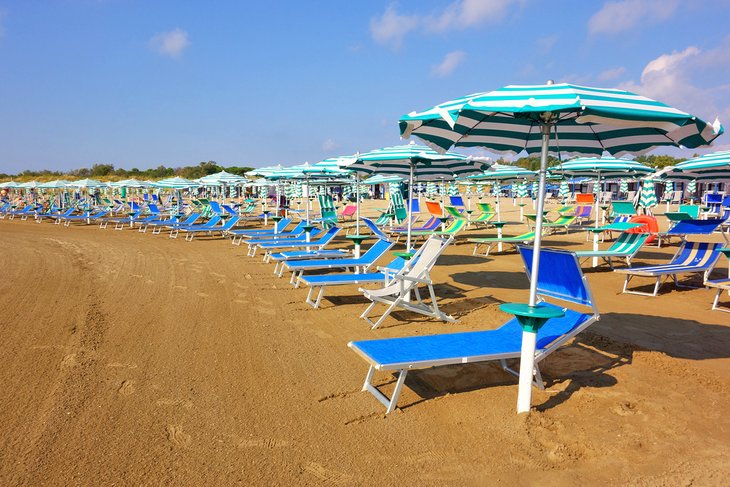
The long (12-kilometer) strip of sand that separates the Venetian lagoon from the Adriatic Sea was Europe's first real beach resort, and in its heyday, at the turn of the 20th century, was Europe's most fashionable watering hole for royalty and the day's celebs. Today, the grand hotels where they reposed still welcome guests and still own the beautiful fine-sand beaches, although for a price you can share them with hotel guests.
Public beaches are at the north end of the island, near the church of San Nicolo, where relics of St. Nicholas are revered. After considerable controversy between Venice and Bari, which also claims the saint's relics, it has been established by an anatomical expert that both have an equal claim; about half the skeleton, including the skull, is in Bari and the other half in Lido. The cloisters are lovely, and in the church are paintings by both Palma the Elder and Younger.
You can tour Lido on foot or a bicycle rented near the landing stage where the 10-minute Motonave or longer vaporetto ride from St. Mark's deposits you. The island is filled with Art Nouveau villas and hotels; to see the villas, wander along some of the side streets. In August and September, the Lido is the venue for the International Film Festival, held in the Palazzo del Cinema.

Two churches in Venice are venues for concerts of classical music , both featuring the works of Venetian composer and virtuoso violinist, Antonio Vivaldi. One of these churches, Santa Maria della Pietà , was Vivaldi's own, where he taught and composed the music for major church feasts. Near Saint Mark's Square, it is a beautiful mid-18 th -century church.
The other church where you can hear concerts is San Vidal church, in Campo Santo Stefano, not far from the Academia bridge. Along with the concerts, the church is notable for its magnificent main altarpiece, San Vidal on Horseback with Eight Saints, painted in 1514 by Vittore Carpaccio. Concerts in both these venues feature "The Four Seasons" and other works by Vivaldi. 123
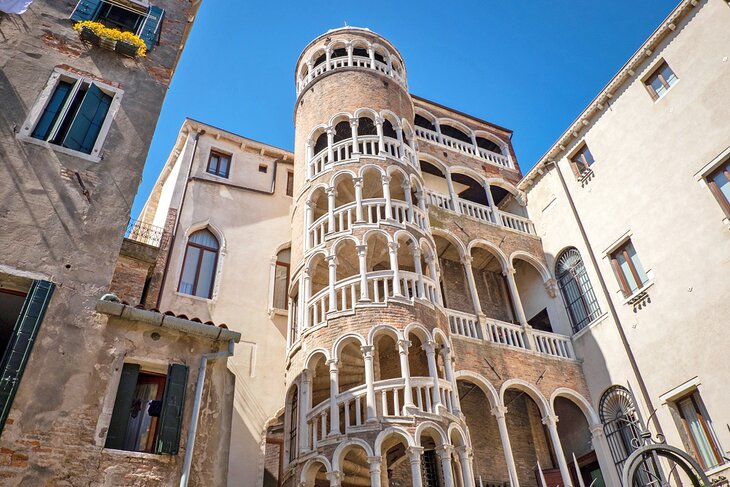
During the 15 th -century renovations of an earlier Gothic building near Campo Manin, a unique spiraling staircase was added to the outside, creating one of the city's most unusual places to visit. The staircase spirals upward, encased by a balustrade and a series of graceful arches that give it an almost delicate air. The building became known as the Contarini del Bovolo Palace , referring to the Venetian word for snail.
Alongside the round tower, a series of 5 layered loggias decreasing in height with each level provides access to the building's five stories. You can see the exterior from the courtyard, or climb the tower for views from the roofed terrace at the top.
Address: San Marco, Campo Manin
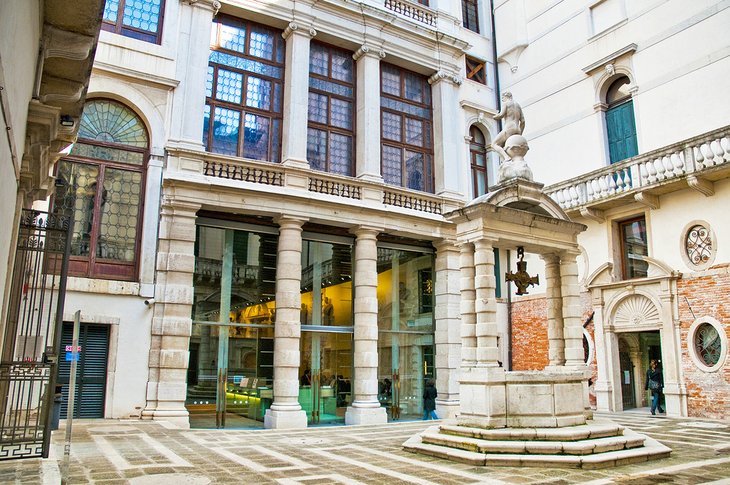
The impressive façade of Ca' Pesaro overlooking the Grand Canal, was inspired by the Sansovino Library that stands across from the Doge's Palace, built a century earlier. The lavish Venetian Late Baroque interior contrasts sharply with the art displayed there, for the palazzo now houses the Galleria d'Arte Moderna.
One of Italy's finest collections of modern art, it contains works by important 19th- and 20th-century painters and sculptors including Gustav Klimt, Marc Chagall, and Auguste Rodin. Highlights include decorative arts of the 20 th century such as works in glass made by Carlo Scarpa in the 1930s and 1940s and rare furniture pieces by the cabinetmaker Carlo Bugatti.
The Museo d'Arte Orientale occupies the third floor of the palace, with collections of fine and applied arts from Asia. Highlights are the Chinese vases and Japanese enamels, porcelains, and armor of the Edo period.
Ca'Pesaro is reached by Vaparetto from the San Stae stop, at the church of Sant'Eustachio, more commonly known as San Stae. Step inside the church to see paintings by early 18th-century artists, including Tiepolo and Pellegrini.
Address: Santa Croce, Venice
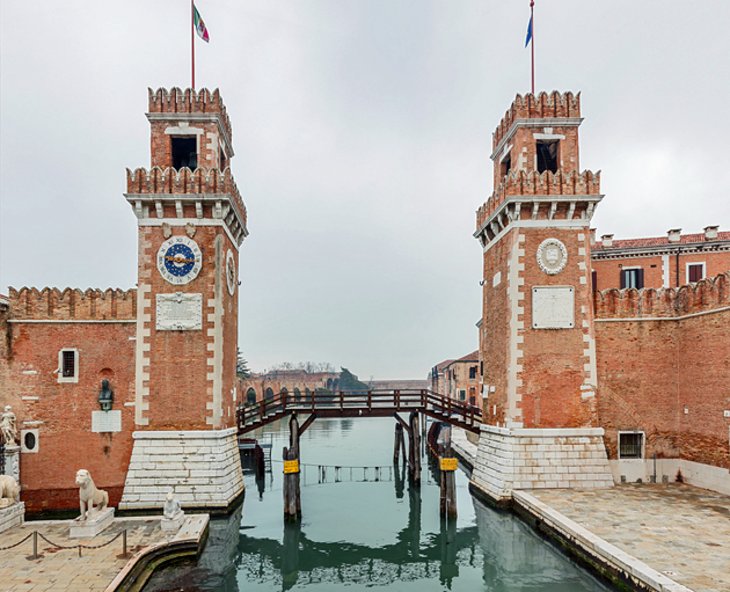
The Arsenal, the shipyard of the Venetian Republic, was the largest and busiest in the world until the end of the 17th century. From its founding in 1104, it was continuously expanded, until in its heyday, it employed as many as 16,000 workers.
Closely guarded to preserve the secret production methods that enabled it to build a fully sea-ready ship in a single day, the Arsenal was accessible by one land and one sea approach only. So tight was its security that the Republic managed to keep its art of shipbuilding secret until about 1550.
At its imposing land entrance is a Renaissance-style triumphal arch guarded by lions brought from Greece as booty after the reconquest of the Peloponnese in the 17th century. Of the two lions on the left, the larger one stood guard over the port of Piraeus, while its fellow stood on the road from Athens to Eleusis.
Adjacent to the shipyard is the Museum of Naval History , displaying impressive booty brought back from the numerous maritime wars of the Republic, along with fascinating collections that include votive paintings made on wood panels in thanks for rescues at sea. These charming pictures are interesting for their depiction of sea life, not so much for their artistic finesse.
Models and artifacts relate to shipbuilding, the types of vessels afloat in the period that Venice was a sea power, and the Republic's strongholds throughout the Adriatic. A large model of the legendary ship of state Bucintoro , the Doge's sumptuous official galley, is especially interesting.
Address: Riva degli Schiavoni, Castello, Venice
While it's nice to stay close to St. Mark's Square, or between there and the Rialto, it's not essential for sightseeing. Attractions are all fairly close, and you'll have to walk between them anyway. Just as important is how close the hotel is to a Vaporetto stop on the Grand Canal. In addition to hotels near San Marco and San Zaccaria stops, consider those near Salute and Academia stops in Dorsoduro. Here are some highly rated and convenient hotels in Venice:
Luxury Hotels :
- Only a few steps from the Salute stop and one stop from St. Mark's, Ca' Maria Adele is a lush island of serenity near the Guggenheim Collection, with antiques-furnished rooms and superb guest services.
- The Gritti Palace, A Luxury Collection Hotel was once the home of a Venetian Doge, and its large, sumptuously appointed rooms (some with balconies) overlook the Grand Canal or a quiet piazza close to St. Mark's.
- Set on a small canal less than two minutes' walk from Piazza San Marco, Bauer Palazzo could hardly have a more convenient location for tourists. Opulent appointments include marble floors and Murano glass chandeliers; guest rooms and the rooftop terrace overlook views of the Grand Canal and other landmarks.
Mid-Range Hotels:
- Elegant and luxurious Hotel Ai Cavalieri di Venezia is also a walk from the Rialto stop, but well located near attractions.
- Londra Palace could hardly be better located, a three-minute walk from St. Mark's at the San Zaccaria stop, with balconies overlooking the lagoon; breakfast is included.
- The large rooms at NH Collection Venezia Palazzo Barocci overlook the Grand Canal, at the San Angelo vaporetto stop.
Budget Hotels:
- In a quiet neighborhood of Santa Croce, a short walk from a Vaporetto stop, about 20 minutes from Rialto and close to a good choice of restaurants, Hotel Tiziano has comfortable rooms and includes breakfast.
- Rio Venezia Hotel is just behind St. Mark's, a block off the Grand Canal.
- Also just steps from St. Mark's, Hotel Orion is on the shortest route to Rialto.
Exploring the Islands:
- A highlight for most travelers is a visit to the islands of Murano and Burano. The easiest way to explore these islands is on a five-hour guided Murano Glass and Burano Lace Tour from Venice , which includes motorboat transport to the islands, with visits to a glassblowing factory on Murano and lace makers on Burano.
Sightseeing and Gondola Rides :
- Venice is a little bit of a maze, and if you have limited time, taking a guided tour is a good idea. The Venice Walking Tour and Gondola Ride includes the best of both worlds, with an opportunity to learn the history of the sites as you wander the city and then relax and enjoy the scenery on a gondola ride.
- Alternatively, to just soak up some of the ambience, skip the walking piece and see the sites from the water on a 35-minute shared gondola ride while being serenaded on the Venice Gondola Ride and Serenade .
- A third option, the Venice Super Saver: Skip-the Line Doge's Palace and St. Mark's Basilica Tours, Venice Walking Tour and Grand Canal Cruise offers priority admission to the two must-see sights with the longest lines, a guided walking tour that takes you to some of Venice's secret sights, and a water-taxi cruise along the Grand Canal.
Good to Know
- Beginning in 2025, day visitors will be charged an access tax of between €6 and €10, depending on the season and expected tourist numbers. Visitors staying overnight in Venice already pay a lodging tax of €1 to €5 per person per night for the first 5 nights.
- If you plan to use the Vaporetto, either on the Grand Canal or to visit the islands of Murano, Burano, Lido and Torcello, ACTV transit passes are a good value. Single fares are €9.50, and a full-day pass is €25, less than the cost of three single rides. Multiple day passes save even more: 2 days for €25, 3 days for €45 and €65 for an entire week.
- While Venetians are quite tolerant of the masses of tourists that pour in every day, the city has some rules for visitor behavior. While these are not uniformly enforced, recent violations have resulted in steep fines. Some that you should be aware of include prohibitions on picnicking in a public place, buying from street vendors, lying down on a public bench, putting padlocks on bridges, and leaning against store fronts.
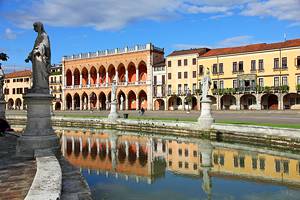
Where to Go near Venice : After you've visited the city's top tourist attractions, you may want to explore some of the beautiful nearby towns. Only 20 kilometers away is pretty Treviso , enclosed by walls and with its own waterside villas. Padua , with its famous shrine of St. Anthony, is easy to reach by train or by a cruise along the historic Brenta Canal. Stop along the way at Villa Pisani, one of the most beautiful gardens in Italy .
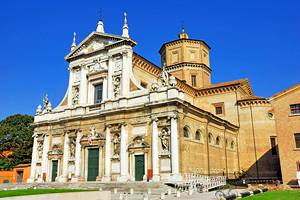
Places to Visit from Venice: North of Treviso are the soaring Dolomites, with some of the top ski resorts in Italy but with plenty of things to do in all seasons. Along the Adriatic to the east is Trieste , where Italian blends with Hapsburg architecture reminiscent of Vienna. Following the Adriatic coast south, you'll reach Ravenna , with its magnificent Byzantine mosaics.

More on Italy

Home » About Italy Travel Guide » Venice Sightseeing
Home » About Italy Travel Guide » Venice Sightseeing Guide
Venice Sightseeing Guide
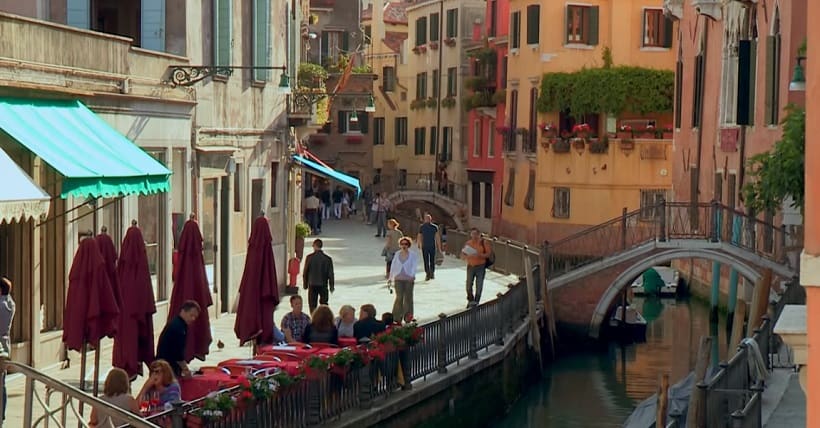
The Venice travel guide provides Venice sightseeing information. Venice is one of Italy’s most popular tourist attractions. It is also one of Italy’s largest cities. If your Venice sightseeing plans include one day or a few days, you’ll find this Venice travel guide helpful. The guide includes Venice sightseeing walking map , Venice hotels , Venice restaurants , Venice day trips , and escorted Italy tours that include Venice.
Venice is also a popular embarkation and disembarkation port for Adriatic and Mediterranean cruises around Italy. For more information click through to the Venice cruises webpage.
Venice Location and History
Venice is located in northeast Italy at the top of the Adriatic Sea in northern Italy’s Veneto region. It is a collection of tiny islands located in the lagoon. The islands are connected by over 160 bridges.
Venice was a sovereign state for over 1000 years between the 7th century and the 18th century from 697 AD until 1797 AD. Venice was a major maritime power of medieval Italy. Its fabulous palaces rising from its idyllic canals are a testament to its history, power, wealth, and ingenious people.
Venice Hotels
From Venice Marco Polo airport, Venice Santa Lucia train station, or Piazzale Roma you will need to transfer to your Venice hotel . The Venice map below provides Venice hotels we suggest.
Click for more Venice hotel information .
Venice Sightseeing: Getting Around Venice
To visit the Venice sightseeing attractions first you need to know how to get around Venice. The following are the Venice transportation hubs where you will arrive in Venice and depart from Venice:
Venice Airport and Train Station Transfers
The least expensive private or shared water taxi transfer service between Venice airport, Piazzale Roma and Venice Santa Lucia train station and the Venice Islands is via Venice’s official transfer service VeniceLink .
Venice airport transfer by Alilaguna
Alilaguna is a private ferry company that runs 3 lines of water shuttles from Venice Marco Polo airport to the floating part of Venice. They have several stops around the islands to let more people get on board. They use a color system to name their lines. For the line maps visit the Alilaguna website .
Getting Around Venice Islands
When entering Venice from the mainland by bus, car, or taxi you will end up in Piazzale Roma. When entering by train you will arrive at Santa Lucia. From both of these points, Piazzale Roma and Santa Lucia train station, you will set off to explore Venice by foot, vaporetto, or water taxi.
Venice is unquestionably a fantastic walking town. You may stroll around the alleys marveling the beautiful architecture. You will find little bars serving local wines and finger food. The streets are well marked so that you’ll find your way using a map. You can walk for hours, days, or years and always find something new as you get lost navigating the alleys. Once away from the throngs of people in Venice’s back alleys you’ll hear birds singing and Venetians living.
ACTV is the City owned company that runs land and water buses in Venice. Water buses serve the 6 floating historic districts of Venice plus the Lido beach, Murano and Burano islands. ACTV water buses are nicknamed Vaporetti or singular Vaporetto. Vaporetti are an affordable way to travel around Venice.
The ACTV vaporetto card covers an amount fo time. So you may buy a card to cover one day, two days, three days etc. Then you have unlimited rides. Tickets may be purchased at the water bus major stops or inside the water bus paying an extra charge. Always validate ticket once on the vaporetto. Click here to download Vaporetto line map .
The vaporetto stops are noted by the yellow ACTV signs. The stops are easy to recognize by their yellow-and-white floating platforms.
The vaporetto #1 travels the Grand Canal to Piazza San Marco or to Piazzale Roma depending on your direction. This makes for a nice inexpensive Grand Canal sightseeing ride. It takes 40 minutes to travel between Piazzale Roma and St. Mark’s Square.
Black boat that looks just like the gondola. These bring people across the Grand Canal from point to point for a few euros. The ride lasts about two minutes. There are no seats so you’ll have to stand during the crossing.
Water taxi ride are classy brown wooden boats that travel anywhere you choose. This is a convenient way to travel and also expensive.
Venice Sightseeing Walking Map
After settling into your Venice hotel get out and enjoy the beauty that awaits you while sightseeing in Venice.
Top Ten Venice Sightseeing Attractions
- Use the Vaporetto #1 boat to ride up and down the Grand Canal. It is equivalent of city tour.
- Best time to visit Piazza St Marco is early in the morning or late at night.
- Private tour of St. Mark’s Basilica.
- Tour the Doge’s Palace, its priceless art and Bridge Of Sighs.
- Go to top of St. Mark’s belltower for awesome view.
- Rialto Bridge – use Vaporetto #1 to see it from water and go shopping around the area.
- Take a gondola ride through the Venice canals.
- Go to Murano to see the glass blowing artists.
- Artisan shops: masks and other classic Venetian arts are fun to see and shop.
- Teatro La Fenice dated to 1789 try to see a show.
Guided Venice day tours include the famous gondola ride , visiting the drawing room of Europe St Mark’s Square , touring the Doge’s Palace and riding the boats to the islands of Murano for glass, Burano for lace, and Torricello for your soul.
St. Mark’s Square
St. Mark’s Square is the center of Venice. St. Mark’s Basilica is one of the most beautiful in all of Europe, named after St. Mark. Two merchants from Venice stole the body from Alexandria Egypt and brought it to Venice where he now lies in the Basilica. Throughout its long history, Piazza San Marco has witnessed pageants, processions, political activities, executions, and countless Carnival festivities. Visitors flock here in the thousands for two of the city’s most important historic sites, the Basilica and the Palazzo Ducale, The Doge’s Palace. These magnificent buildings complement the lesser-known but equally valuable Campanile, Museo Correr, and Torre dell’Orologio, gardens of the Giardinetti Reali, open-air orchestras, shops, and elegant cafes, notably Quadri and Florian.
Basilica di San Marco
Venice’s most famous Basilica blends the architectural and decorative styles of East and West to create one of the greatest buildings in Europe. The exterior owes its Oriental splendor to countless treasures from the Venice republic’s overseas empire. The famous bronze horses taken from Constantinople in 1204, and a wealth of columns, bas-reliefs, and colored marbles studding the main facade. Mosaics from different epochs adorn the five doorways, while some of Italy’s loveliest Romanesque carvings frame the main doorway.
Palazzo Ducale
Scuola Grande di San Rocco
Founded in honor of San Rocco, a saint who dedicated his life to helping the sick, the Scuola started out as a charitable confraternity. Construction began in 1515 under Bartolomeo Bon and was continued by Scarpagnino until his death in 1549. The work was financed by donations from Venetians keen to invoke San Rocco’s protection and the Scuola quickly became one of the wealthiest in Venice. In 1564, its members decided to commission Tintoretto to decorate its walls and ceilings. His earliest paintings, the first of over 50 works, he eventually left in the Scuola, filling the small Sala dell’Albergo off the Upper Hall. His later paintings occupy the Ground Floor Hall, immediately within the entrance.
Santa Maria Gloriosa dei Frari
Franciscan church more commonly known as the Frari (a corruption of ‘frati,’ meaning friars). The Gothic church dwarfs the eastern area of San Polo. The first church on the site was built by Franciscan friars in 1250 to 1338 CE, but was replaced by a larger building completed in the middle of the 15th century. The airy interior is striking both for its sheer size and the quality of its artwork, including masterpieces by Titian and Giovanni Bellini, a statue by Donatello, and several grandiose tombs. The Pesaro Madonna, better known as the Madonna di Ca’ Pesaro, is a painting by the Italian Renaissance master Titian, commissioned by Jacopo Pesaro, whose family acquired in 1518 the chapel in the Frari Basilica in Venice for which the work was painted, and where it remains today. This is one of the most important pieces of art in Italy. It is another stunning Renaissance painting in Italy. This huge painting is over 16 foot high. Pesaro was the leader of the Papal Navy. He won a battle against the Turks thus it was seen as a Christian victory over Islam. In the painting St George is giving thanks. This would be a very Western viewpoint showing the victory of good over evil. St Francis and St Peter are also depicted. Click the video below for more about the art history related to this painting.
Santa Maria della Salute
The great Baroque church of Santa Maria della Salute, standing at the entrance of the Gran Canal, is one of the most imposing architectural landmarks of Venice. Henry James reputedly likened it to ‘some great lady on the threshold of her salon’. The church was built in thanksgiving for the city’s deliverance from the plague epidemic of 1630, hence the name ‘Salute’ which means health and salvation. Each November, in celebration, worshippers light candles and approach across a bridge of boats spanning the mouth of the Gran Canal for the occasion.
Rialto Bridge
The Rialto Bridge spans the Grand Canal. From the bridge there is a unique view of all the activity on the Grand Canal. The Grand Canal is where the wealthiest built their palaces in Medieval and Renaissance Venice.
Like the city of Venice, Murano comprises a cluster of small islands, connected by bridges. It is like a mini-Venice. It has been the center of the glass making industry since 1291, when the furnaces and craftsmen were moved here from the city because of the risk of fire and the disagreeable effects of smoke. Some houses on the water date from this period. Murano glass became popular in Europe in the 16th century. This is when the aritsans started created works of art rather than utilitarian pieces. The artisans turned artists guard their trade secrets. Today you can watch glass making by these incredible artists. Today knock offs from China and Taiwan market themselves as Murano glass. Always look for the trademark brand on the work of art to confirm it is an authentic piece created by an artist on Murano.
Burano is the most colorful of the lagoon islands and can be distinguished from a distance by the tilting tower of its church. In contrast with the haunting Torricello, the island is densely populated, its waterways fringed with brightly painted houses, such as the Casa Pepi. The main thoroughfare is Via Baldassare Galuppi, named after the Burano-born composer. It features traditional lace and linen stalls and open-air trattoria serving fresh fish. There is also a museum there featuring the lace making.
The colorful houses on Burano were painted so that the island’s fishermen, which was the main trade, could spot their house when returning. And while the men were fishing the ladies made lace. Today bed linen and lingerie are among the favorite linens. Burano is a nice glimpse of a slower paced life versus bustling Venice.
Venice Gondola
The Venice Gondola ride is a dream of lovers from around the world. The Gondola ride is a splendid addition to the time spent in the most romantic city in the world.
The Venice tour reviews are in! The Venice Gondola ride is a hit!! The voice, the accordion, the canals, the water, the gondola… It is one of the highlights of a Venice vacation. Here’s what you can expect on your Venice gondola ride with music.
The Gondola’s History
The Gondola is the star of Venice. It takes months to build one and is built to exact specifications. The gondola is a traditional, flat-bottomed Venetian rowing boat, well suited to the conditions of the Venetian lagoon. For centuries gondolas were the chief means of transportation. They were the most common watercraft within Venice. Gondolas were once painted in bright colors but in the 16th century a city regulation stated Gondola must be painted in black.
In modern times the iconic boats still have a role in public transport in the city. They serve as as traghetti (ferries) over the Grand Canal. For a traveler looking for a nice view and quick Gondola ride the Grand Canal crossing on a traghetti is affordable and fun. They are also used in special regattas (rowing races) held amongst gondoliers. The gondola is propelled by an oar.
Their primary role today, however, is to carry tourists on rides at fixed price of about $65 per person per Venice Gondola ride. Venice Gondola can enter canals to show off Venice’s charm from the water.
Only local Venetians may be Venice gondoliers. Joining the guild is not easy. The first woman was admitted to the guild in 2009.
Venice Restaurants
A Venice dining tradition is to visit bacari , which are bars, to enjoy cicchetti , which is finger food typically enjoyed with a glass of local wine from the Veneto region. Hop to multiple bacari in a sort of cichetti crawl to try various wines and foods. This is an inexpensive way to eat your way through Venice.
- Antico Pignolo, San Marco, Venice. Dine on pitch-perfect renditions of classic Venetian cuisine served in a 13th-century spice shop; when the weather’s warm, nab a table in the garden.
- Alle Testiere, Castello, Venice. The food is as sophisticated as the atmosphere is informal at this tiny, five-table trattoria.
- Antica Ruga Rialto
- Bancogiro, Santa Croce, Venice. This osteria with contemporary flair takes full advantage of its location next to the Rialto market.
- Bottega ai Promessi Sposi – Romantic favorite for couples.
- Birraria la Corte
- Trattoria Ca’ d’Oro, Cannaregio, Venice. Settle at one of the long tables for a meal of Venetian specialties and hearty pastas.
- Cantina Do Mori, San Polo, Venice. Workers from the Rialto market have been refueling at this bacaro for more than 500 years.
- Cantinone, Dorsoduro, Venice. You won’t find cicheti here; the specialty is panini — sandwiches made with top-quality meat and cheese.
- Enoteca la Mascareta, Castello, Venice. This bacaro is a favorite evening haunt for locals.
- Il Muro San Stae
- Impronta Café – Romantic favorite for couples.
- La Zucca – Romantic favorite for couples.
- Osteria Mocenigo
- Osteria Enoteca Ai Artisti – Romantic favorite for couples.
- Osteria da Fiore, San Polo, Venice. A gastronomic temple that bloomed in the city’s back streets, Da Fiore tops the list of Venice’s fine fish restaurants.
- Osteria Da Riobo- Try to get outside table
- Ristorante Quadri – table by the window facing St. Marks
- Vini da Gigi – Romantic favorite for couples.
- Trattoria Al Gatto Nero – loved by locals famous for risotto located on Burano island.
Venice Festivals
Venice carnevale.
Venice’s Carnevale is the most famous and one of the oldest in Europe. It started around the year 1000 when the public began a celebration with masks. The masks provide social leveling for nobles and peasants alike rubbing shoulders hidden behind masks. Additionally, wearing a mask created a freedom for the person behind the mask.
In the early years Venice Carnevale included parades, banquets and all night dancing. Carnevale was an effort to promote freedom and play. In the early years Venice Carnevale festivities went on for 6 months. In a way Venice resembled modern day Las Vegas with entertainment and even loss of morals by visitors and inhabitants.
The elegant Carnevale started after the 16th Century and ran until Napoleon and subsequently the Austrians banned Carnevale. Carnevale began again in the 1960s. The word refers to the time leading up to the beginning of lent, and may be derived from “ carne levare “, which means to remove meat.
In the 17th Century, Giacomo Casanova created his own Carnevale legend, which was love of woman. He celebrated year round embracing all manner of disguise. As the legend goes, no woman could deny his charm.
Today elements of the local culture are mixed into Carenvale around the world. Rio di Janiero has its famous party. New Orleans in the United States is known for its Mardi Gras. And Venice is known for its masks and masquerade balls. Venice is more relaxed than Rio and New Orleans. It runs for 10 days before lent and is notably upscale with high priced parties. You may also wander the canals with a one of a kind ambiance.
The most revered events is the opening of Carnevale in St Mark’s Square. The Festival of the Maria’s tells the story of 12 ladies kidnapped by pirates. The Flight of the Angel is the highlight when the angel flies down from the bell tower to the Doge, which marks the beginning of the festival. In the middle of the square is the grand theater where there are daily masked parades and entertainment.
The Carnevale Grand Ball is located in 16th Century Palace along the Grand Canal. There you’ll journey to a land of dreams in an atmosphere of royalty. This is an event where all the attendees participate not watch. Upstairs the Gala Dinner is extravagant. During dinner music and entertainers enhance the masquerade party. After dinner the DJ plays music for a full night of dancing and partying to sunrise.
Hotel Luna Baglioni Masquerade Ball
Held in the Marco Polo ballroom, guests learn to dance the Minuet. Known for its distinctive pose like gestures. During a six course meal spread through the night with unlimited prosecco, the 17th century inspired ball is a night of fun and revelry.
Carnevale Masks
Carne Sole is one of the largest mask shops. There is a huge selection of masks. The plague doctor mask with the huge nose beak is very popular, which was used by doctors. They stuffed the beak with herbs to keep out the plague. Another popular mask is the Comedia. Often made out of leather. Then there is the Casanova mask, which was traditionally used to go meet secret lovers. Authentic masks are made from paper machete and are painted. They require enormous work and typically cost between $50 and $400.
The mask allowed people to hide while simultaneously be more themselves. People can take on an identity behind the mask which is the allure.
Carnevale Costumes
Tragi Commica is one of the largest costume shops in Venice. Arrangements to rent or buy are typically made six months before Carnevale. Here every woman’s fantasy may be met with a beautiful costume. They are not cheap but certainly they are well made and gorgeous.
Venice Regata Storica
The Venice Regata Storica, the historic regatta, occurs annually on the first Sunday in September. It is a tribute to Venice’s maritime history. The main program is a parade down the Grand Canal formed by traditional colourful boats, some of which are used only in these particular events, with people in costume who interpret the upper echelon of the Venice Judiciary – the Doge and the Duchess – is a faithful reconstruction of the royal reception given to Catherine Cornaro, Queen of Cyprus, on her arrival in Venice in 1489, after her abdication in favour of the Republic.
After the parade , Venice’s rowing tradition is on full display. Venetian rowing is a discipline unique to Venice and its lagoon. It is a special technique of rowing practices in the lagoon of Venice and the surrounding areas because of the peculiarities of the environment, which requires vessels that can be easily maneuvered and a stroke that allows one to easily monitor the seabed to avoid the numerous shoals and the low sandy coasts. The winners are held in high regard by the practitioners of this fascinating discipline.
Today, Venice is one of the world’s most beautiful cities, as evidenced by the backdrop to the many Hollywood movies filmed here. Venice charming canals and unique light make it a romantic city. Couples walk across the Rialto Bridge and as tradition would have it proclaim their love.
Another beautiful bridge is the Bridge of Sighs, which connects the Doge’s Palace to the now closed jail. The Bridge of Sighs name comes from the sigh the prisoner makes looking out on beautiful Venice before on last time before heading into the prison forever. Today the Doge’s Palace is a museum. Venice is full of many museums overflowing with priceless works of art.
Many people who travel to Venice are embarking on a Venice cruise around Italy to Rome or a cruise from Venice down the Adriatic to the Dalmatian Coast and Greek Isles. Visit the Venice cruise page for more information about planning a cruise from Venice.
Day Trips from Venice
Art lovers may like a day trip from Venice to Padua to see the Scrovegni Chapel. This is certainly one of the most important works of art in Italy. For more information about the Scrovegni Chapel and the frescoes there painted by Giotto visit this page .
For more information about Verona visit the Verona travel guide .
For more information about Vicenza visit the Vicenza travel guide .
Venice Weather
Venice average temperature by month.

Venice High and Low Temperature by Month

Average Venice Rainfall by Month

Venice Travel Guide
Book your individual trip , stress-free with local travel experts
- roughguides.com
- Travel guide
- Itineraries
- Local Experts
- Travel Advice
- Accommodation
Plan your tailor-made trip with a local expert
Book securely with money-back guarantee
Travel stress-free with local assistance and 24/7 support
Carlo DeSando
Wonderful Time in Italy We were covered from the moment we landed in Rome. The drivers were great, the connections were flawless, and it was well-planned a...
Venice has been depicted and described so often that on arriving in the city you might have the slightly anticlimactic feeling that everything looks exactly as expected. The Canal Grande’s water-lapped palaces are indeed as picturesque as the coffee-table books made them out to be, Piazza San Marco is as perfect as a film set, and the panorama from the Palazzo Ducale is more or less as Canaletto painted it. Any sense of familiarity quickly fades, however, as you start to look around: seeing a stack of furniture being hoisted from a barge up to a top-floor window, or someone fishing knee- deep in the lagoon a hundred metres from dry land, you understand that life here is not like life anywhere else. And the more closely you look, the more fascinating Venice becomes.
Venice: a city shaped by history and water
10x the best things to do in venice, food and drink in venice, best areas to stay in venice, best time to visit venice, how to get around, how many days do you need in venice, how to get here.
Founded on a cluster of mudflats in the heart of the lagoon 1,500 years ago, Venice emerged as Europe's principal exchange between the West and the East. At its zenith, it commanded an empire stretching north to the Dolomites and across the sea to Cyprus. The city's wealth and population swelled, densifying its urban fabric amidst a unique blend of nature and man-made marvels.
Today, the historical centre, comprising roughly a hundred islets , leaves no space undeveloped, no street or square without a trace of Venice's illustrious past. It's common to stumble upon medieval remnants in even the most hidden alleyways, embedding the city's rich lineage into its very walls.
Yet, Venice's melancholic charm partly stems from the contrast between its historic grandeur and its current state. Once home to 200,000 residents during the Venetian Republic's golden age, the city's population has significantly dwindled. It was a bustling metropolis, attracting merchants from across the globe, its economy setting continental benchmarks from the Rialto's banks and bazaars.
The Arsenale's vast workforce could construct a warship in a day, and Piazza San Marco was a perpetual hub of commerce and governance. Now, Venice stands as a testament to its spectacular heritage, its survival heavily reliant on those drawn to its enduring legacy.

San Marco square from the water © Shutterstock
Venice, a city spread across 118 islands, is interlinked by 435 bridges into six districts known as sestieri. The city's cultural richness extends to over fifty churches and revered institutions like the Scuola Grande di San Rocco and the Scuola di San Giorgio degli Schiavoni, showcasing masterpieces by Tintoretto and Carpaccio.
You can't see everything, and we don't suggest you try, so here's a list of things we think, you need to visit!
Editors tip : make sure to read the 20 best things to do in Venice .
#1 Admire the Basilica di San Marco
San Marco is the most exotic of Europe’s cathedrals, and it has always provoked strong reactions. To Herman Melville, it was beautiful and insubstantial – as though “the Grand Turk had pitched his pavilion here for a summer’s day”. Mark Twain adored it for its “entrancing, tranquillizing, soul-satisfying ugliness”.
Herbert Spencer found it “a fine sample of barbaric architecture”; and to John Ruskin, it was the most gorgeous of holy places, a “treasure-heap…a confusion of delight”.
The Basilica di San Marco is certainly confusing, increasingly so as you come nearer and the details emerge, but some knowledge of the building’s background helps bring a little order out of the chaos.

Tips from Martina
Italy Travel Expert

"Don't just visit our famed canals, but also visit the cities less trodden paths. Delve into the serene atmosphere of the Cannaregio district, a treasure trove of local life, far from the crowd. Here, the authentic Venetian lifestyle unfolds in quiet squares and along peaceful canals".

St. Mark's Basilica and St.Mark's Campanile above the San Marco Square in Venice © Shutterstock

Grand Canal, Venice, Italy © Apple Kullathida/Shutterstock
#2 Embrace the art in Scuola di San Giorgio degli Schiavoni
Venice has two brilliant cycles of pictures by Vittore Carpaccio – one is in the Accademia, and the other is in the Scuola di San Giorgio degli Schiavoni, which sits beside a canal to the south of San Francesco.
By the mid-fifteenth century, though, Venice’s Slavic inhabitants were sufficiently established for a scuola to be set up to protect their interests. After several years of meeting in the church of San Giovanni di Malta, the scuola built itself a new headquarters on the church’s doorstep at the start of the sixteenth century and summoned Carpaccio to brighten up the first-storey hall.
Painted from 1502 to 1508, after the Accademia’s St Ursula cycle, Carpaccio’s pictures were moved downstairs when the building was rearranged in 1551, and the interior has scarcely changed since.
#3 Stroll through the lively Rialto market
It was through the markets of the Rialto that Venice earned its reputation as the bazaar of Europe. Virtually anything could be bought or sold here: fabrics, precious stones, silver plate and gold jewellery, spices and dyes from the Orient. Trading had been going on here for over four hundred years when, in the winter of 1514, a fire destroyed everything in the area except the church.
The possibility of relocating the business centre was discussed but found little favour, so reconstruction began almost straight away: the Fabbriche Vecchie was finished eight years after the fire, and Sansovino’s Fabbriche Nuove followed about thirty years later.
Today’s Rialto market is much more modest than that of Venice at its peak, but it’s still one of the liveliest spots in the city and one of the few places where it’s possible to stand in a crowd and hear nothing but Italian-spoken.
#4 Take a tour of San Giorgio Maggiore
Palladio’s church of San Giorgio Maggiore, facing the Palazzo Ducale across the Bacino di San Marco is one of the most prominent and familiar of all Venetian landmarks. It is a startling building, with an impact that’s enhanced by its isolation on an island of its own.
Ruskin didn’t much care for it: “It is impossible to conceive a design grosser, more barbarous, more childish in conception, more servile in plagiarism, more insipid in result, more contemptible under every point of rational regard.”
Goethe, on the other hand, was sick of the Gothic art that was to Ruskin the touchstone of spiritual health and gave thanks to Palladio for purging his mind of medieval clutter.
#5 Enjoy the spectacle of the Regata Storica
Held on the first Sunday in September, the Regata Storica is the annual trial of strength and skill for the city’s gondoliers and other expert rowers. It starts with a procession of historic craft along the Canal Grande course, their crews all decked out in a period dress, followed by a series of races right up the canal.
Re-enacting the return of Caterina Cornaro to her native city in 1489, the opening parade is a spectacular affair and is followed by a race for young rowers in two-oared pupparini. The women come next (in boats called mascarete), followed by a race for canoe-like caorline; and then it’s the men’s race, in specialized two-man racing gondolas called gondolini.

Gondolas in Venice © Shutterstock
#6 Go on a day trip to Torcello
“Mother and daughter, you behold them both in their widowhood – Torcello and Venice.” So wrote John Ruskin, and it’s almost impossible to visit Torcello without similarly sensing an atmosphere of bereavement. This outlying island has now come almost full circle.
Settled by the very first refugees from the mainland in the fifth century, it became the seat of the bishop of Altinum in 638 and in the following year its cathedral – the oldest building in the lagoon – was founded.
By the fourteenth century, its population had peaked at around twenty thousand, but Torcello’s canals were now silting up and malaria was rife. By the end of the fifteenth century, Torcello was largely deserted – even the bishop lived in Murano – and today fewer than a dozen people remain in residence.
Read more about the best day trips from Venice .
#7 Explore Burano and Murano islands
Take a fascinating day trip to the Venetian islands of Burano and Murano, each with a special charm that complements the glamour of Venice.
A short vaporetto ride from the main island takes you to the vibrant realm of Burano, known for its rainbow-coloured houses and intricate lacework. Wander through narrow streets decorated with colourful linens and observe the artistry of local lacemakers, whose tradition dates back several centuries. The island's serene canals and warm, welcoming atmosphere make it the perfect place for a leisurely lunch by the water's edge.
Then head to the island of Murano, considered the birthplace of Venetian glassmaking. Explore its rich history and modern innovations by visiting the glass factories, where master craftsmen skilfully mould molten glass into intricate shapes. Discover a fascinating variety of glassware, from exquisite jewellery to ornate chandeliers. See ancient techniques passed down through generations and learn about this age-old craft.

Venice landmark, Burano island, Italy © StevanZZ/Shutterstock
#8 Attend Venice Biennale
If you have a keen interest in contemporary art and international culture, timing your visit to coincide with the Venice Biennale can be a fantastic idea. The Venice Biennale, Europe’s most glamorous international forum for contemporary art, was first held in 1895 as the city’s contribution to the celebrations for the silver wedding anniversary of King Umberto I and Margherita of Savoy.
The main site is by the Giardini Pubblici, with permanent pavilions for about forty countries plus space for a thematic international exhibition. This core part of the Biennale is supplemented by exhibitions in parts of the Arsenale that are otherwise closed to the public, such as the colossal Corderie or Tana and the Artiglierie.
In addition, various palaces and other sites throughout the city are used as national pavilions and as venues for fringe exhibitions, installations and performances.

Biennale, Venice © avphotosales/Shutterstock

#9 Make a pilgrimage to Santa Maria della Salute
In 1630–31 Venice was devastated by a plague that exterminated nearly 95,000 of the lagoon’s population – one person in three. In October 1630 the Senate decreed that a new church would be dedicated to the Virgin Mary if the city were saved. The result was the Salute – salute meaning “health” and “salvation” – or Santa Maria della Salute, to use its full title.
Resting on a platform of more than 100,000 wooden piles, the Salute took half a century to build; its architect, Baldassare Longhena, was only 26 years old when his proposal was accepted. He lived just long enough to see it finished – he died in 1682, one year after completion.
Each year on November 21 (the feast of the Presentation of the Virgin) the Signoria is processed from San Marco to the Salute for a service of thanksgiving. The Festa della Madonna della Salute is still a major event in the Venetian calendar, with thousands of people making their way here to pray for or give thanks for good health.
#10 Discover the hidden gem of Palazzo Contarini del Bovolo
Located in a charming labyrinth of Venetian alleyways, Palazzo Contarini del Bovolo is an amazing hidden gem waiting to be discovered. This architectural gem, often unnoticed by the crowd, charms those who dare to discover it. The main feature of the palace is the "Scala Contarini del Bovolo", a spiral staircase that rises gracefully upwards and is decorated with elegant arches that create a complex play of light and shadow.
As you ascend this spiral staircase, you are transported to another era where the artistic vision of the Contarini family is brought to life with breathtaking detail. As you climb up, the panorama of red-tiled roofs and Venetian vistas opens up, giving you a glimpse of a timeless city.
There’s more than an element of truth to Venice’s reputation as a place where mass tourism has produced monotonous menus, cynical service and slapdash standards in the kitchen. Venice has fewer good, moderately priced restaurants than any other major Italian city, it has more really bad restaurants than any other, and in some of the expensive establishments you’re paying not for a fine culinary creation but for the experience of dining in an expensive Venetian restaurant.
However, things have been getting better in recent years, and in the less overrun parts of Venice there are now several good places where you can get a decent two-course meal, plus house wine, for €35–40 per person – which, in this city, is reasonable.
Eating out in San Marco
- Ai Mercanti : Revamped in 2013, Ai Mercanti in San Marco offers imaginative dishes like pumpkin and coffee bean risotto, starting at €13. Its dark wood and golden décor create a unique atmosphere. Open Mon 7–10:30pm, Tues–Sat 12:30–3pm & 7–10:30pm.
- Al Bacareto : A local favorite for over forty years, Al Bacareto offers genuine Venetian cuisine with main courses ranging from €15–20. Opt for cicheti at the bar for a taste of Venice on a budget.
Eating out in San Polo and Santa Croce
- Al Nono Risorto : Nestled off Campo San Cassiano, Al Nono Risorto attracts a young crowd with its pizzeria-restaurant vibe, live jazz and blues, and a charming small garden. Note: No credit cards accepted. Open Mon & Tues–Sun noon–2:30pm & 7–11pm.
- Alla Madonna : For over sixty years, Alla Madonna has served seafood in a lively, old-style setting, now managed by the founder's son. The ambiance is bustling, and the service quick. Despite recent price hikes, it offers relatively good value at about €45/person. Open Mon, Tues & Thurs–Sun noon–3pm & 7–10pm.

Venice ©Shutterstock
Insatiable demand makes Venice’s hotels the most expensive in Western Europe. What’s more, the high season here is longer than anywhere else in the country, but many places don’t recognize the existence of a low season any more.
There are, though, a few good-value hotels to be found in the city, and an ever-increasing number of bed and breakfast places, as well as a plethora of apartments for rent.
If you want to spend time surrounded by luxury, San Marco is the most suitable neighbourhood to do so. San Marco is the heart of Venice, home to the famous St Mark's Square, the magnificent St Mark's Basilica and the majestic Doge's Palace.
This neighbourhood offers exclusive shopping opportunities, high-end restaurants and breathtaking views of the canals. Treat yourself to luxurious accommodation options , including five-star hotels that offer stunning views of the city's landmarks. However, be prepared for higher prices as San Marco is a premium neighbourhood.
Dorsoduro is a neighbourhood worth staying in Venice for its artistic heritage and lively cultural life. Home to the prestigious Accademia Gallery and the Peggy Guggenheim Collection, this neighbourhood attracts art lovers from all over the world.
Dorsoduro is also home to the University of Ca' Foscari, giving the neighbourhood a lively and youthful energy.
San Polo and Santa Croce
If you are looking for a place to stay in Venice to experience local Venetian life, the ideal neighbourhoods are San Polo and Santa Croce. These neighbourhoods exude genuine charm with their narrow streets, small squares and bustling markets.
Also, a must-see in these neighbourhoods are the Rialto Bridge, the lively Rialto Market and the historic church of San Giacomo di Rialto. Accommodation options , from cosy guesthouses to charming boutique hotels, provide an authentic Venetian experience.
The Cannaregio neighbourhood may not have any major attractions, but it is a place to stay to experience the atmosphere of Venice. Cannaregio is a less crowded residential neighbourhood that offers a more local and authentic experience. It is known for its picturesque canals, historic synagogues and lively Jewish ghetto.
Central Castello
Castello, located east of San Marco, is Venice's largest and most traditional neighbourhood. With winding streets, small squares and local shops, this neighbourhood has a more relaxed atmosphere.
Castello is home to the impressive Arsenale and the Biennale Gardens, where the prestigious Venice Biennale art exhibition takes place. Castello offers a wide range of accommodation options , from budget guesthouses to elegant boutique hotels.
Browse the best hotels in Venice.

The Canals of Venice, in Italy © Shutterstock
Choosing the right time to visit Venice can greatly influence the experience one gains from this enchanting city. Spring ( April , May and June ) and early autumn ( September to October ) are often considered the best seasons to explore Venice.
During these periods, the weather is pleasantly mild, and the city is less crowded than in the peak summer months ( July and August ). Strolling through the labyrinthine streets, gliding along the serene canals, and marvelling at the architecture under the warm sunlight becomes an immersive experience.
The winter months ( November and January ) can be cold. Venice's renowned events like the Carnival in February and the Venice Biennale in odd-numbered years draw a diverse array of international visitors, adding a unique cultural dimension to the visit. December is usually busy with locals but a fun time to visit.
Find out more about the best time to visit Italy.
The topography of Venice is uniquely complicated, and at first glance its public transport looks as convoluted as a wiring diagram. But the situation isn’t as daunting as it first appears: there are clear main routes through the warren of Venice’s alleyways, and you’ll need to get to grips with only a few of the water-bus routes.
Venice Water-Bus fares and tickets explained
Single journey & special ticket:
- Standard Ticket: €7, valid for 60 minutes with unlimited changes, not usable for return trips.
- One-Stop Ticket: €4, ideal for short crossings like San Zaccaria to San Giorgio Maggiore.
- Luggage Fee: €7 for each piece of large luggage beyond the first.
- Concessions: Children under 4 travel free. Wheelchair users pay €1.30; their companion travels free.
Save with Travel Cards
To avoid high single-ticket costs, consider ACTV Tourist Travel Cards
- 24 hours: €20
- 48 hours: €30
- 72 hours: €40
- 7 days: €60
- Rolling Venice Cardholders: Special 72-hour card for €20
- Airport Bus Supplement: €4 per journey with any ACTV pass.
Where to buy
- Tickets: Landing stages, shops with the ACTV sign, tourist offices.
- ravel Cards: Tourist offices, Piazzale Roma, train station, airport, and selected vaporetto stops like Ca’ d’Oro and San Marco Vallaresso.
Gondola rides in Venice
Gondola Navigation
Thanks to their design, gondolas can navigate Venice's narrow and shallow canals effortlessly, a testament to the gondoliers' skill. Previously a hereditary job, now anyone can become a gondolier after completing 400 hours of rigorous training, which covers manual skills, canal navigation, and the history of the profession. In 2010, Venice celebrated its first female gondolier, Giorgia Boscolo.
Costs & Hours
- Standard Fare: €80 for a 40-minute ride for up to six passengers. After 7pm until 8am, the rate increases to €100.
- Extended rides:Additional 20 minutes cost €40, or €50 after 7pm.
- Extras: Expect surcharges for an accordionist or tenor. Note that there's a debate on banning "O Sole Mio" to avoid stereotypical Italian experiences.
Avoiding overcharges
Although fares are regulated, some gondoliers might charge more. Always confirm the price before departure. For a reliable service, use official gondola stands located at key points throughout the city, including Calle Vallaresso, Campo San Moisè, Campo Santa Maria del Giglio, Bacino Orseolo, in front of the Palazzo Ducale, Riva degli Schiavoni near the Danieli hotel, the train station, Piazzale Roma, Campo Santa Sofia near Ca’ d’Oro, San Tomà, and Rialto Bridge on Riva Carbon.
Venice Water Taxis
Venice's water taxis are stylish, fast, and can navigate most canals, accommodating up to 10 passengers. However, they're known for being one of the priciest taxi services in Western Europe.
- Base Rate: Starts at €15, with €2 added every minute.
- Surcharges: €10 per extra passenger beyond five. €5 for each luggage piece over five. €10 for rides between 10pm and 7am.
Booking tips
- Direct booking from stands or catching an available taxi can save surcharges.
- Phone bookings and concierge-arranged rides include additional fees.

Epiphany Regatta in Venice © Shutterstock
The ideal number of days to spend in Venice depends on your interests, the pace of your trip and what you want to see. Here are general guidelines to help you plan your visit:
If your schedule is tight, you can manage to experience the main attractions of Venice in one or two days. Focus on the main sights such as St Mark's Square, St Mark's Basilica, Doge's Palace, take a gondola ride and perhaps stroll the streets. However, this will not allow you to explore more than the iconic sites.
3-4 days will give you a better chance of experiencing the essence of Venice. You'll be able to see the main sights, take a day trip to nearby islands such as Burano and Murano, and in your free time wander off the beaten track, discover local restaurants and soak up the unique atmosphere.
If you have more time, you can truly immerse yourself in the culture and lifestyle of Venice. In addition to the above, you can visit less crowded areas, art galleries and museums, attend cultural events or festivals, and take day trips to neighbouring cities such as Padua or Verona.

Venice, Canal, Italy @ Shutterstock
Before you can lose yourself in its winding waterways and historic charm, you'll need to figure out the best way to get there. Whether you're flying in from across the globe or making your way from a nearby European city, various options are available to suit every budget and travel style.
- Flights from the UK and Ireland : Direct flights take around two hours from London . EasyJet flies between two and four times daily, while its chief rival, Ryanair, has one or two flights each day from London and less frequent services to Treviso from Bristol, East Midlands, Manchester and Edinburgh. Aer Lingus (Dublin) flies to Marco Polo up to five times per week, while Ryanair flies three or four times a week to Treviso in high season.
- Flights from the US and Canada: The only direct service to Venice from the US is with Delta, who fly from New York to Marco Polo up to six times a week in summer. Air Canada has direct flights from Montréal to Venice, and various indirect flights from Toronto and Montréal, usually via Frankfurt or New York.
The choice of rail routes and fares is hugely complex, but the cheapest route is to take the Eurostar from London to Paris, then change to the high-speed TGV from Paris to Milan, and change there for the “Frecciarossa” to Florence. The total journey time is 14–18 hours, and with some online research, you can put together a one-way ticket for a little over the cost of a return flight, though peak prices are considerably higher.
If you take a couchette, using the “Thello” sleeper for the stage from Paris to Milan doesn’t add much to the cost. Booking for these continental routes usually opens three months before the day of travel. Discounts for under-26s are sometimes available and advance booking is essential. If you’re planning to include Italy as part of a longer European trip you could choose to invest in an InterRail pass.
Find out the best ways to get to Italy .
Discover more places in Italy

- Travel Guide Morocco
- Travel Guide Namibia
- Travel Guide South Africa
- Travel Guide China
- Travel Guide India
- Travel Guide Indonesia
- Travel Guide Japan
- Travel Guide Laos
- Travel Guide Malaysia
- Travel Guide Myanmar (Burma)
- Travel Guide Nepal
- Travel Guide Philippines
- Travel Guide Singapore
- Travel Guide South Korea
- Travel Guide Sri Lanka
- Travel Guide Taiwan
- Travel Guide Thailand
- Travel Guide Australia
- Travel Guide Fiji
- Travel Guide New Zealand
- Travel Guide Belize
- Costa Rica Travel Guide
- Travel Guide Cuba
- Travel Guide Guatemala
- Travel Guide Honduras
- Travel Guide Jamaica
- Travel Guide Nicaragua
- Travel Guide Panama
- Travel Guide Puerto Rico
- Travel Guide Trinidad and Tobago
- Travel Guide Albania
- Travel Guide Austria
- Travel Guide Belgium
- Travel Guide Bosnia-Herzegovina
- Travel Guide Bulgaria
- Travel Guide Cyprus
- Travel Guide Czechia (Czech Republic)
- Travel Guide Denmark
- Travel Guide England
- Travel Guide Estonia
- Travel Guide Finland
- Travel Guide France
- Travel Guide Germany
- Travel Guide Greece
- Travel Guide Hungary
- Iceland Travel Guide
The Rough Guides to Italy and related travel guides
In-depth, easy-to-use travel guides filled with expert advice.

Find even more inspiration here

Planning your own trip? Prepare for your trip
Use Rough Guides' trusted partners for great rates

written by Ties Lagraauw
updated 11.04.2024
Ties is a true world explorer - whether it be for work or leisure! As Content Manager at RoughGuides, and the owner of Dutch travel platform Reis-Expert.nl , Ties is constantly on the move, always looking for new destinations to discover.
Ready to travel and discover Italy?
Get support from our local experts for stress-free planning & worry-free travels.
- Where to stay
- Travel advice
Venetian Life
Amazing things to do in venice, italy, download a free map of venice.
Are you planning a visit to Venice or you’re already in town and need a map ?
Download our free map of Venice city in pdf format, perfect for your smartphone or tablet.. or you can simply print it out and take it with you.
This map shows where the main Venice attractions are and on the last page you can also find all the routes of Actv public boats (vaporetto).
Click on the image to download the map:

Enjoy… it’s free !
Share or print

Post a comment Cancel reply
- Already have a WordPress.com account? Log in now.
- Subscribe Subscribed
- Copy shortlink
- Report this content
- View post in Reader
- Manage subscriptions
- Collapse this bar

One Day in Venice – Itinerary, Map, Tips & Guide
This post may contain affiliate links, from which we earn an income.
We don’t think there could be an easier city to explore in a day than Venice, also known as La Serenissima . This incredible city is the capital of northern Italy’s Veneto region and is built on more than 100 small islands in a lagoon in the Adriatic Sea.
In our one day Venice itinerary, you’ll find information and tips for visiting all the most important must-see Venice tourist attractions, with an interactive map, organised to make the best use of your time.
We also share recommendations for central places to stay, ideas about where to eat local food, and tips about how to make the most of Venice in a day.
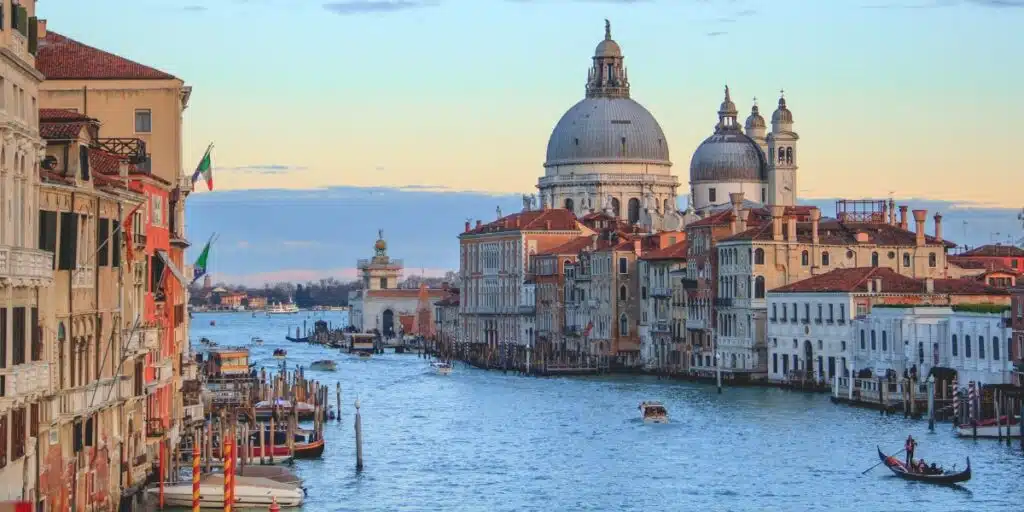
When to Visit Venice
Several times every year, between September and April , the sea level in Venice rises to flood the streets, squares, and palaces. While this occasional inundation, known as acqua alta , can be inconvenient, Venice has become adept at managing high tides and provides boardwalks in the main streets in order to allow people to move around.
Is this your first time visiting Italy? Get all the information you need in our Italy Travel Guide , including what to pack, the best time of year to go, getting there and practical tips to help you have the best trip!
In the spring, Venice starts to defrost, with temperatures rising from 12ºc/54ºf in the latter half of March to the low 22ºc/72ºf in May . In the early part of spring, you will definitely need to pack warm clothes and an umbrella, as March can bring quite a bit of rain.
May is considered one of the best times to visit Venice. The weather is lovely, the city has yet to be overrun with tourists and all the attractions are open. Landmarks such as St Mark’s Square would still be better visited early in the morning, to beat the crowds.
The Biennale Art and Architecture Exhibition normally runs from April to November . On even years the exhibition focuses on art, on odd years, it is dedicated to architecture. The city is filled with exhibitions, installations and various types of events for you to enjoy.
Summer is the peak season for tourism, with costs at their most expensive. As there are no roads in Venice, the waterways are crammed with gondolas and the streets are filled to bursting with tourists. The weather is also at its most humid and because of the waterways there can be quite a lot of bugs, and the occasional canal smell as the water dries out
August is when Venice is at its hottest, and many of the locals have packed up and left the city for the month for the almost countrywide Italian summer holiday.
One of the most famous activities in the summer is the Jazz Festival. From June to the end of August , there are musical performances from all over the world, as well as many other events. They are held at locations all over the city, such as St Mark’s Square, the Sala Apollinne, The Teatro la Fenice and the Pallazzo Grimani.
September is still quite warm, and the number of tourists has dropped, so it’s a great time to spend a day in Venice.
The annual Venice Film Festival takes place as well as the annual Regata, or Regata Storica , which is held on the Grand Canal on the first Sunday of September and commemorates the history of Venice. This festival has been held in the Venetian lagoon for hundreds of years and today is well-known for the wonderful historical water pageant that takes place before the race.
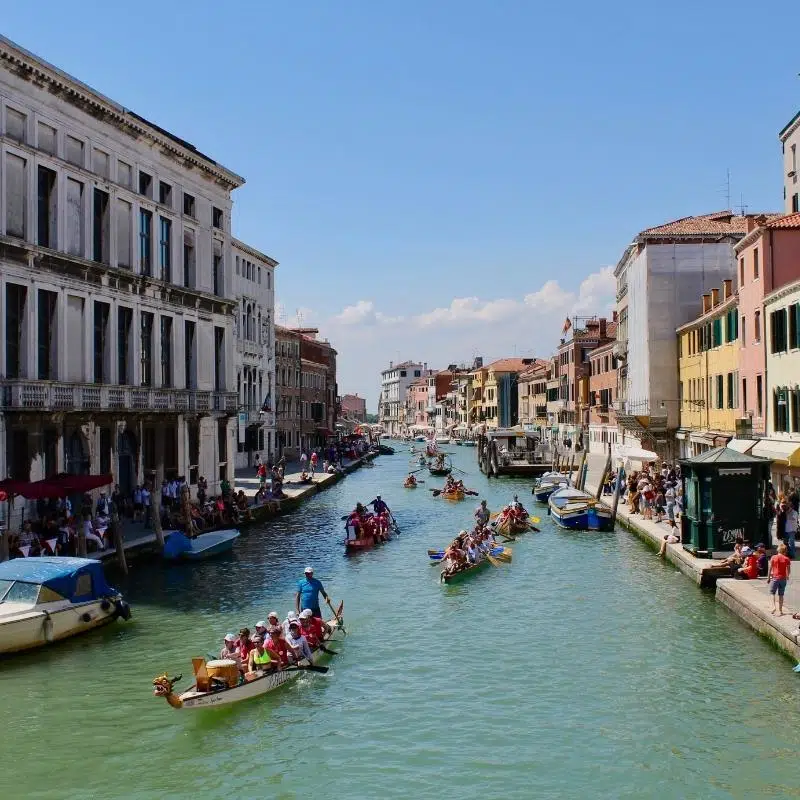
The temperature gets cold in November , so make sure you pack warm clothes, especially if you want to enjoy a romantic gondola ride or take a water bus. The city will be less busy, and cheaper for a visit, however, some landmarks and attractions may keep shorter hours, so make sure you check beforehand.
February is all about the Venice Carnivale, one of the biggest celebrations in all of Italy. It takes place in Venice 40 days before Easter, with a final party before Ash Wednesday and Lent. The events typically last for two to three weeks before the actual Carnival Day on Shrove Tuesday.
A lot of events will require an invite or ticket which can be costly, but there are also many events that are free, such as the candlelit parade of boats. There are also street performers and concerts for the public to enjoy. The finale is held in the main public square of St. Mark’s, where you will get to see all the amazing masks and costumes. If you would like to visit Venice for Carnivale you will need to book well in advance as the city will be very busy for this period.
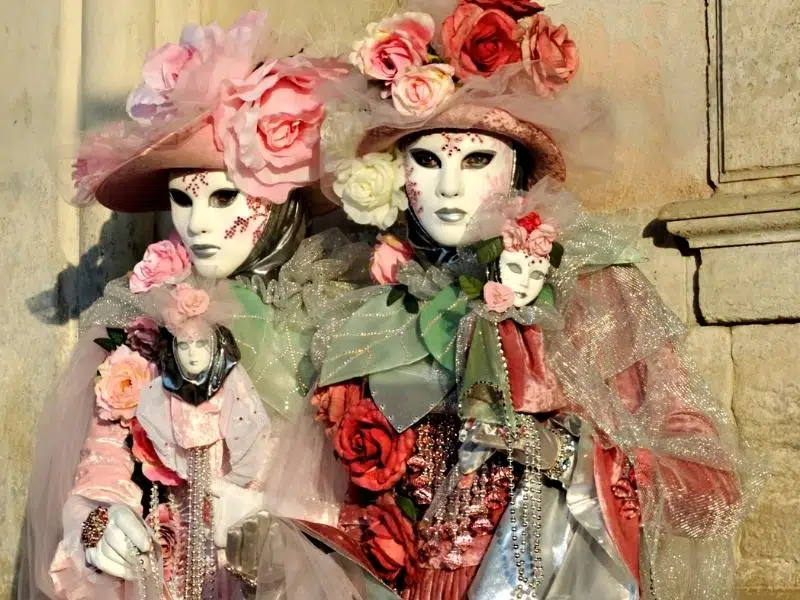
Are you planning a road trip in Italy? Get our Italian bucket list road trip guide for maps, itineraries, accommodation + places to see/things to do en route and nearby attractions so you don’t miss a thing!
Venice Trip Resources
Fly into Marco Polo or Treviso Airport
Drive in from Europe or hire a car in Italy
Travel Insurance
Cover medical costs, delays and lost luggage
Getting to Venice
When flying to Venice you can land at one of two airports Marco Polo Airport , which is 8km from the city, or Treviso Airport which is 33km away.
There are several different ways to get to the city from Marco Polo Airport. You can go by express bus, No5, or the shuttle bus No35, both can be picked up in the second lane outside the arrivals terminal. They leave every 15 minutes and take around 25 minutes to get to Piazzale Roma terminal. You can buy your express bus tickets here .
If you want to make your arrival in Venice unforgettable take a water taxi directly from the airport to your hotel , an amazing way to start your visit.
The best way to get to Venice from Treviso Airport is by bus, you can catch the bus in Via Noalese, to the right of the airport exit. It takes about 50 minutes, you can buy your express bus tickets here .
You can also book a private transfer from the airport with Klook directly to your accommodation in the city. Klook works with a large range of local operators to bring the the best options and prices for your transfer.
Planning your car rental in Italy? Find out all you need to know about hiring a car and driving in Italy and if you’re planning on driving to Italy from the UK, find out how and get all the best routes here !
Where to Stay in Venice
Luxury: Sina Centurian Palace – Booking.com | Agoda
Mid-Range: Palazzo Veneziano- Booking.com | Agoda
Budget: Hotel Saturnia & International – Booking.com | Agoda
Hostel: Combo Venezia – Booking.com | Agoda
What to See & Do in Venice
Our Venice in one day itinerary is very walkable, and you’ll be able to complete the route without needing public transport. As Venice is a relatively small city, you can see a lot in a short amount of time.
When visiting Venice you will notice there are no roads, just canals and bridges. The city has 417 bridges, 72 of which are private, and 177 canals. The largest of these is the Grand Canal, which runs in an S shape, splitting the city in half.
The city is divided into six districts or sestieri – Cannaregio; Dorsoduro; San Polo; San Marco; Santa Croce and Castello.
If you prefer to have your day organised for you, check out this popular and highly-rated private guided walking tour , where you’ll explore the charming streets of Venice and admire some of the city’s most famous landmarks as you discover the city’s history and culture alongside an expert guide.
Venice One Day Walking Map
How to use this map – Use your fingers (or computer mouse) to zoom in and out. Click or touch the icons to get more info about a place, and click the arrow in the box top left to open the index. To add to your own Google Maps account, click the star next to the title of the map.
Ponte della Paglia & Ponte dei Sospiri – Bridge of Sighs
Start your morning at the Ponte della Paglia. The original structure was built in 1360 and was the oldest stone bridge in Venice, the current structure dates back to 1847. This bridge will give you a fantastic view of the Grand Canal and the lagoon and looking the other way, the famous Ponte dei Sospiri or Bridge of Sighs.
The Bridge of Sighs is a fully enclosed limestone bridge which was built in the early 1600s and linked the prison to the interrogation rooms in the Doge’s Palace. It was described by Lord Byron as “the last point where condemned prisoners could see the beautiful city of Venice” before they were taken to be executed.
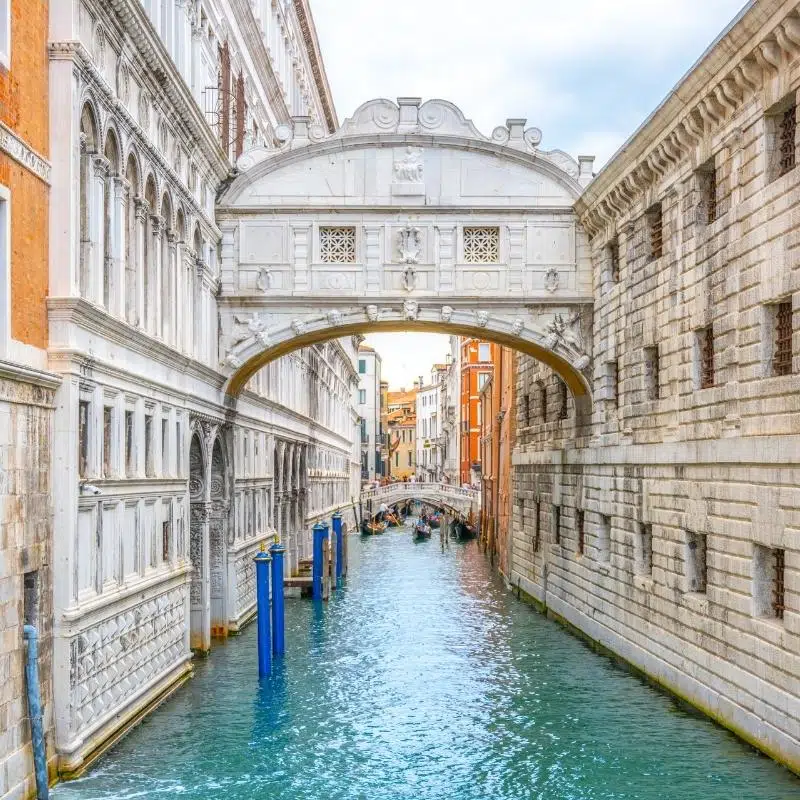
Palazzo Ducale – Doge’s Palace
The Doge’s Palace is one of the main landmarks in Venice and is a masterpiece of Gothic architecture. Made up of three blocks, the wing towards St Mark’s Basin is the oldest, built in 1340 and modified and extended throughout the following centuries.
The wing towards St Mark’s Square is still as it was built in 1424, and the canal side wing was built between 1483 and 1565, during the Renaissance.
The palace was the home of the Doge of Venice, who was the supreme authority of the former republic. It not only housed the Doge’s fabulous apartments but also a political office and a prison.
In the early 1600s, a new prison was built across the Rio del Palazzo and the prison and the palace were linked by the Bridge of Sighs. After the republic fell the Palace was used by many different administrations until it became a museum in 1923.
The Doge’s Palace is one of the top tourist attractions in Venice and is super busy for much of the year. Don’t waste time waiting in line when you only have one day to see the city! Instead, get a reserved entry skip-the-line ticket for the Doge’s Palace , with which you’ll also get to walk across the famous Bridge of Sighs.
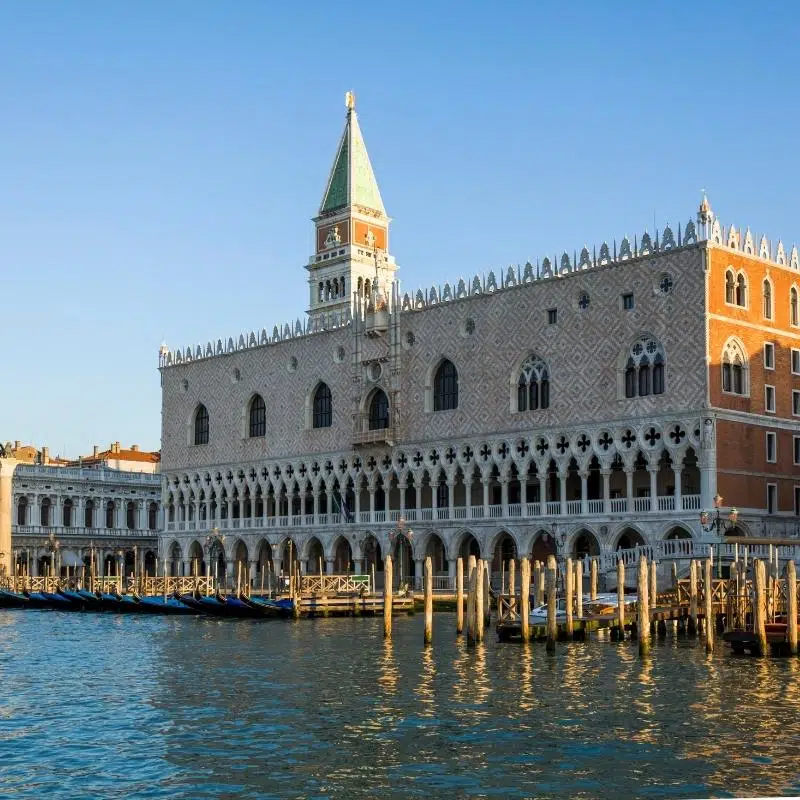
Piazza San Marco – St Mark’s Square
Walk along the Riva degli Schiavoni and you’ll come to St Mark’s Square, the most famous Piazza in Italy, if not the world. Home to some of Venice’s most impressive historical buildings, the square gets very busy so it’s advised to get there early to enjoy everything on offer without the larger crowds which congregate later in the day.
The square is lined with fancy stores, (overpriced) cafés and eateries and in the furthest corner from the water is the Museo Correr which houses objects and works of art that reflect Venetian culture, history and art. The Correr Museum entrance is included in your Doge’s Palace ticket.
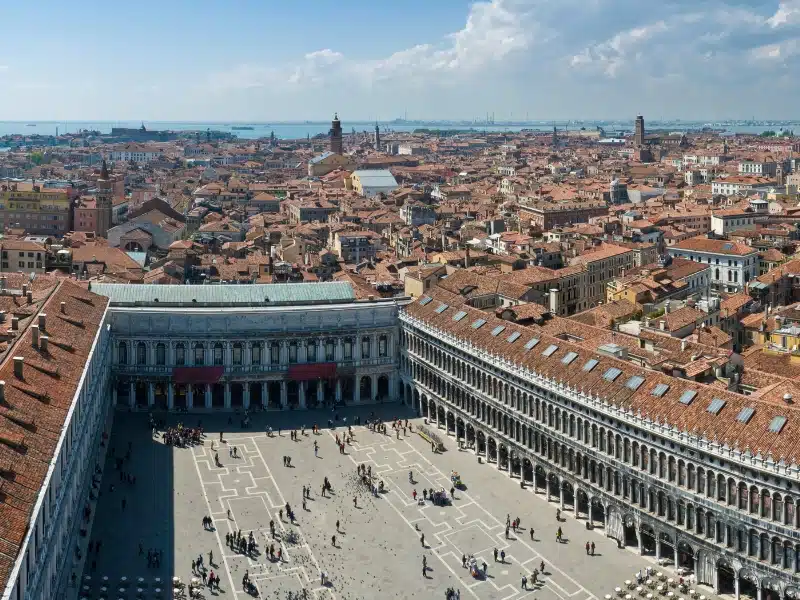
Basilica di San Marco – St Mark’s Basilica
Built by the Venetians in 820 and consecrated in 832, St Mark’s Basilica takes its name from the remains of the Saint preserved inside. In 828 merchants from Venice stole the body of St Mark the Evangelist, and transported the body via ship, but the ship was hit by a storm. The legend goes that St Mark appeared to the captain and told him to lower his sails, thus saving the ship.
When Constantinople was defeated in the Fourth Crusade, many treasures made their way to Venice and were installed in the basilica. The four bronze Horses of Saint Mark, also known as the Triumphal Quadriga or Horses of the Hippodrome of Constantinople, are just one example of the many treasures that came from Constantinople.
The church is also home to the high altar table Pala d’Oro , considered one of the most amazing works of the Byzantine era and the jewel in the crown of the Basilica.
The interior of the domes, the vaults, and the upper walls were slowly covered with gold-ground mosaics depicting saints, prophets, and biblical scenes. Many of these mosaics were later retouched as tastes changed and together they now represent eight hundred years of history.
Another of Venice’s most popular attractions, it’s advisable to book your fast-track entry and audio guide for St Mark’s Basilica online in advance of your visit.
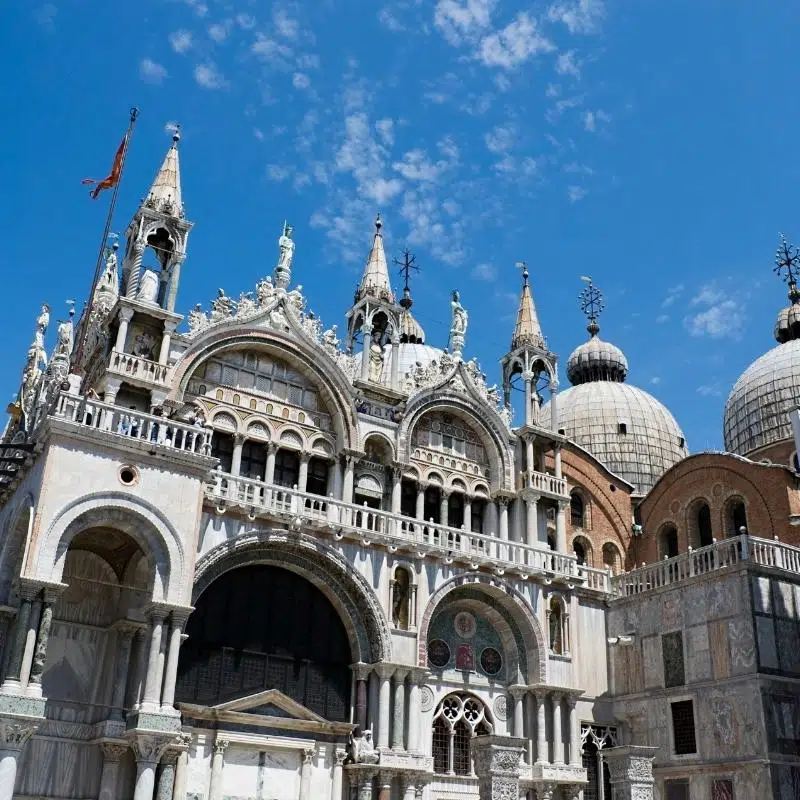
Campanile de San Marco – St Mark’s Campanile
St Mark’s Campanile is the bell tower for St Mark’s Basilica. Built in the 12th century on the site of what was probably a watchtower and rebuilt in its current form early in the 16th century with the addition of a belfry, the campanile is the perfect spot from which to enjoy a spectacular bird’s eye view of the city and Venice lagoon.
In fact, the view was so good that the campanile was used in 1609 by Galileo to demonstrate his telescope to the Doge!
In 1902 the campanile suddenly collapsed as a result of bad construction work and it was agreed that the tower should be rebuilt exactly as it was. The rebuild started in 1903, and the campanile was re-opened in 1912. When visiting the tower, you get to the top by elevator, which only takes 30 seconds so there’s no need to climb a whole lot of stairs!
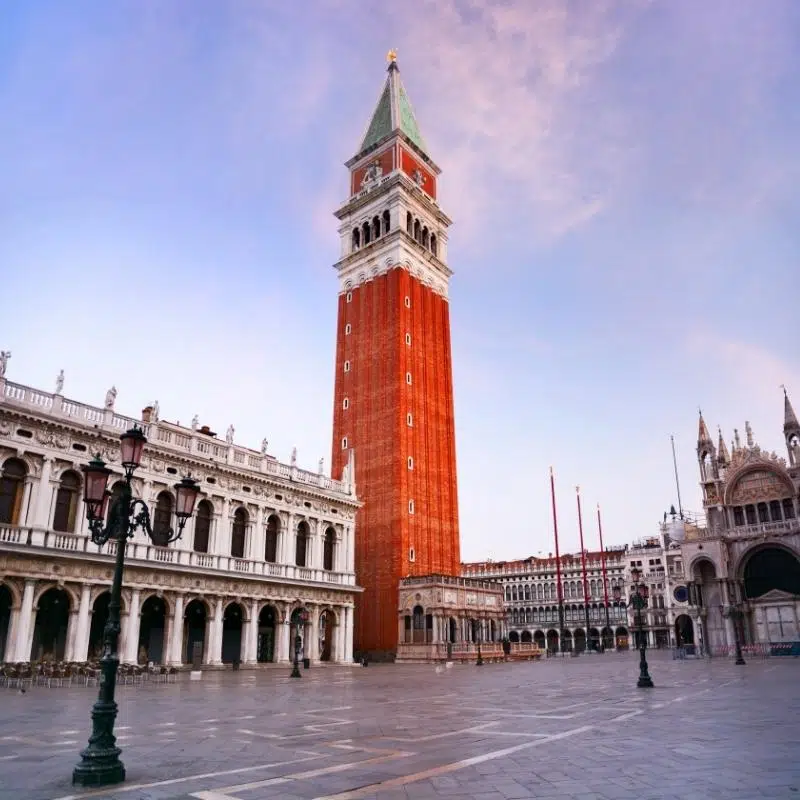
Libreria Acqua Alta
Literally meaning ‘the book store of high water’, this hidden gem is an indoor/outdoor bookshop which protects its stock from the famous floods of Venice using ingenious means!
Stacked wall-to-wall with books, magazines and maps, Libreria Acqua Alta stores the books in boats, waterproof containers, bathtubs and even a full-sized gondola!
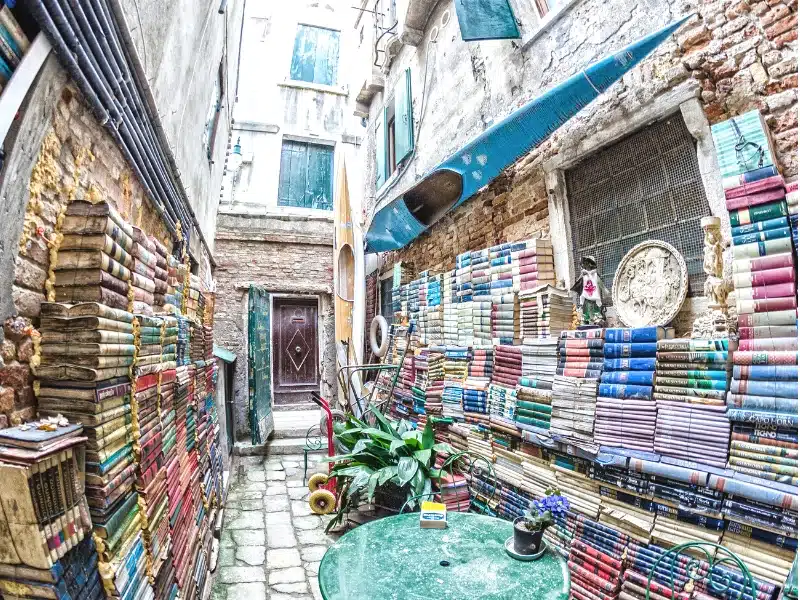
Ponte di Rialto – The Rialto Bridge
The iconic Rialto Bridge is the oldest bridge spanning the Grand Canal. It connects the districts of San Marco and San Polo and has been rebuilt several times since its first construction as a pontoon bridge in 1173. Whilst there visit the Mercati de Rialto or Rialto Market and look at the amazing array of fresh foods on display.
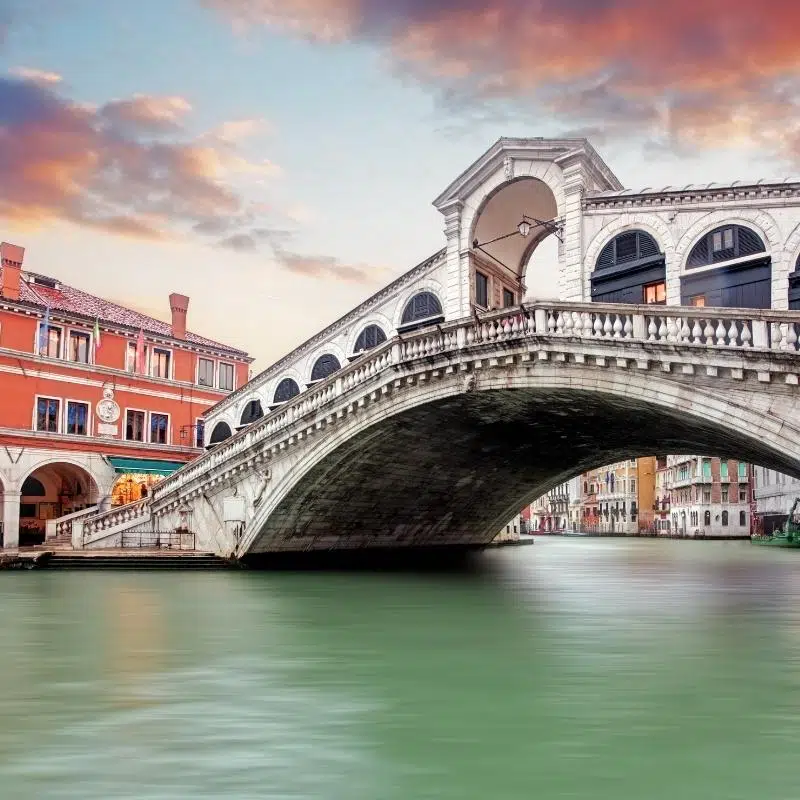
Ca’ Pesaro International Gallery of Modern Art
The incredible Ca’ Pesaro museum is housed in a marble palace on the Grand Canal and is a magnificent example of the Venetian Baroque style. The façade is an imposing edifice of statues and bas-reliefs, while the interior is magnificently decorated by Giovanni Battista Pittoni.
The museum has a fabulous collection of 19th and 20th century paintings and sculptures, including works by Morandi, De Chirico, and Carrà, as well as Kandinsky, Mirò and Matta.
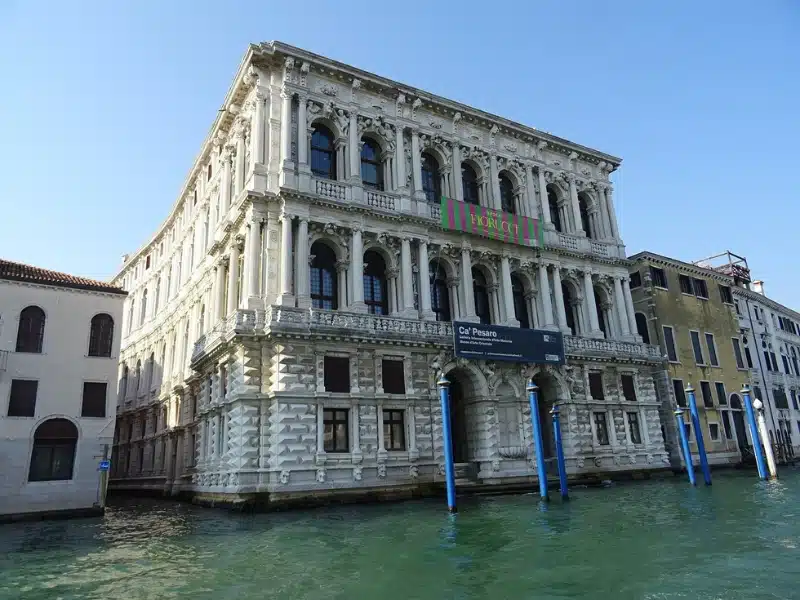
Casa Di Carlo Goldani – Carlo Goldani’s House
Carlo Goldoni was a famous Venetian playwright who dedicated his life to the theatre, starting as a small boy aged eight, with puppets in a small theatre at his home. The home is now a writer’s museum and well worth a visit.
Goldoni’s theatrical work consists of five tragedies, sixteen tragicomedies, 137 comedies, two sacred actions, twenty interludes, thirteen dramas, 49 playful dramas, three farces and 57 scenarios!
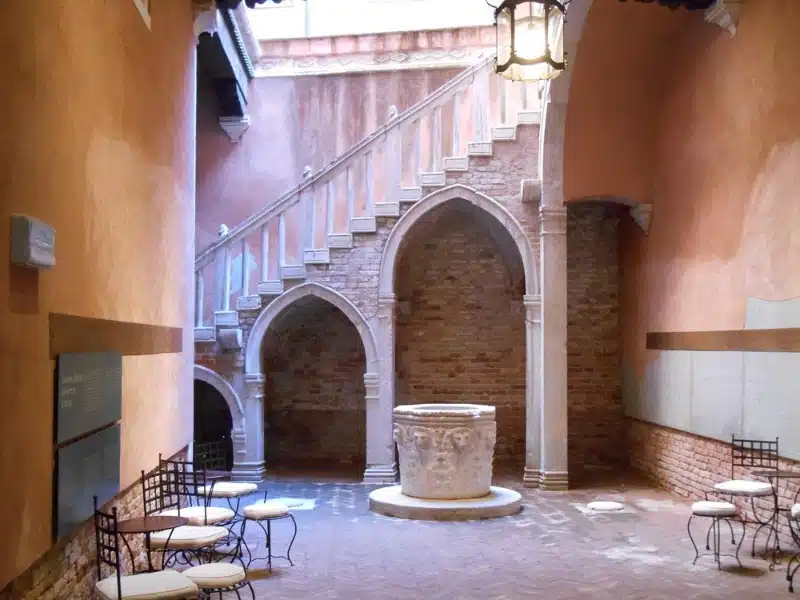
Basilica De Frari
Basilica De Frari in the San Polo neighborhood is also known as the Basilica Santa Maria Gloriosa and is one of the most remarkable churches in Venice. Built over a period of 100 years in the 15th century the exterior is pretty plain compared to some of the other churches in Venice, but step inside to see some amazing sculptures and a famous painting by Titian called ‘Assumption of the Virgin’.
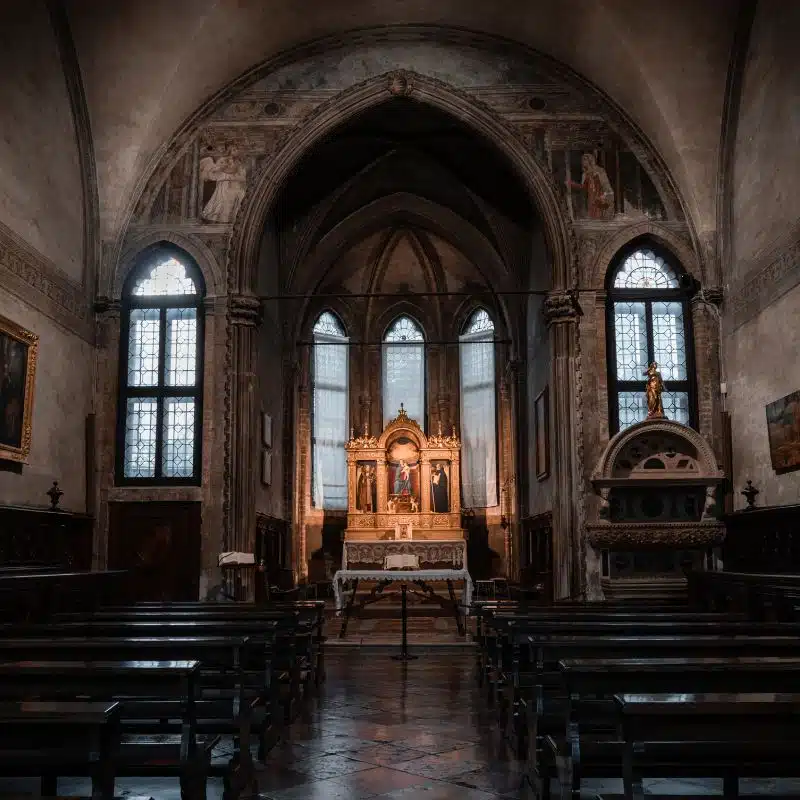
The Migrant Child by Banksy
It may not be thousands of years old or hold any historic significance, but it’s still a really cool piece of artwork by Banky in reference to the plight of migrants and refugees, stencilled onto the wall of the canal on the island of Dorsoduro.
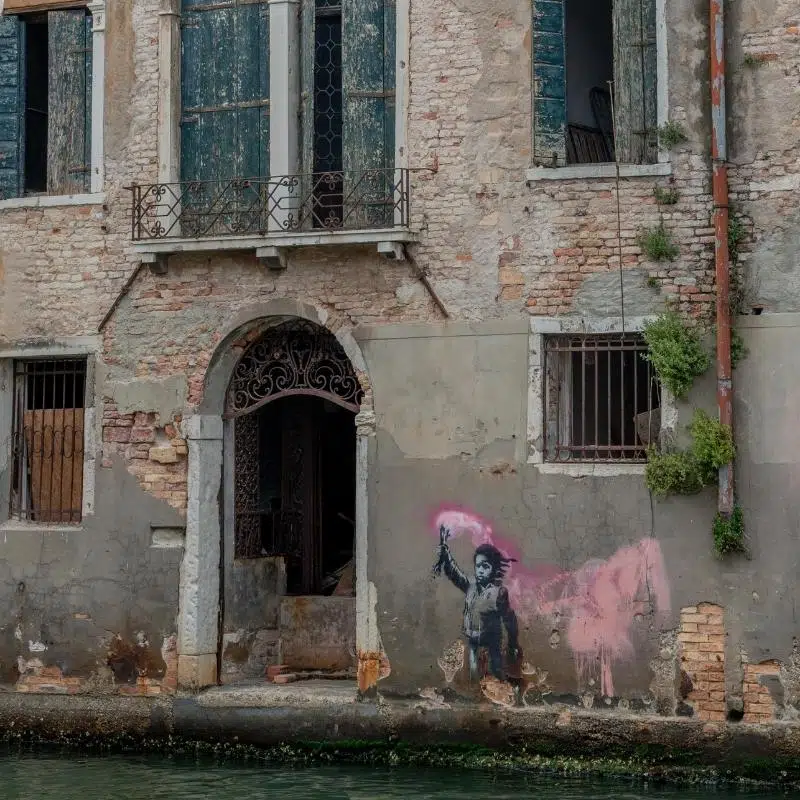
Museo di Leonardo Da Vinci – Leonardo Da Vinci Museum
Housed in a beautiful former church, this museum dedicated to Da Vinci is quite small but interactive, so it really is a unique experience. They have replicas of Da Vinci’s masterpieces so you can really get up close and look at them in detail without the need for high security. They also have replicas of his inventions which you can touch and try.
This family-friendly exhibition will stimulate your curiosity and allow you to really explore Da Vinci’s groundbreaking work. Stroll through the four sections of earth, water, air and fire, and discover machines built according to Da Vinci’s original designs. This excellent museum gets very busy in high season, so make sure to get your skip-the-line tickets before visiting.
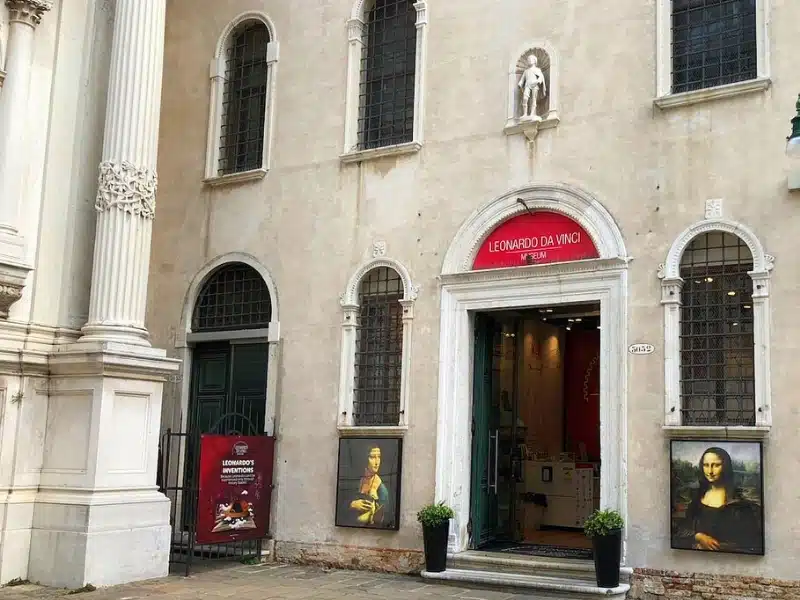
The Peggy Guggenheim Museum
The Peggy Guggenheim Collection is located on the Grand Canal between Santa Maria della Salute and the Gallerie dell’Accademia, in the Dorsoduro district. It is one of Europe’s premier museums devoted to modern art, and one of the most visited attractions in Venice.
The core of the museum is Peggy Guggenheim’s personal collection of 20th century art ranging in style from Cubism and Surrealism to Abstract Expressionism.
Explore one of the most important cultural attractions in Venice with a skip-the-line ticket , so you can enjoy works of modern art by Picasso, Pollock, and Dalí instead of standing in a queue!
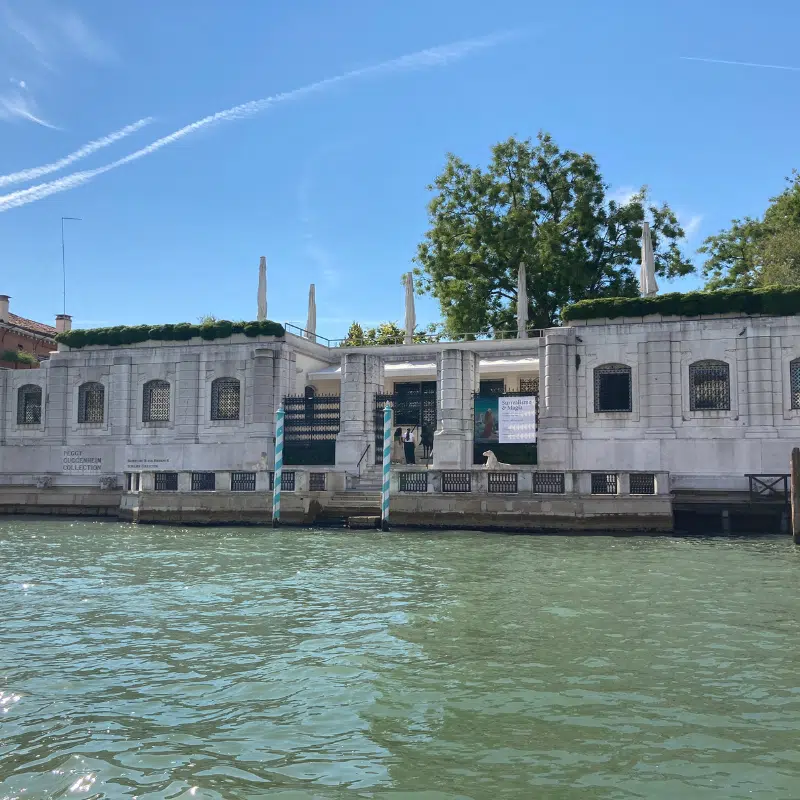
Basilica di Santa Maria della Salute
The basilica, known simply as Salute , is a Roman Catholic Church commissioned by the city as a prayer and as a thank you to the Virgin Mother of God for saving the city of Venice from the terrible plague of 1630. The first stone was laid on 1st April 1631 and it was consecrated in 1687.
The basilica faces the entrance of the Grand Canal and the amazing double dome has characterized the skyline of the San Marco Basin in Venice for more than three hundred years.
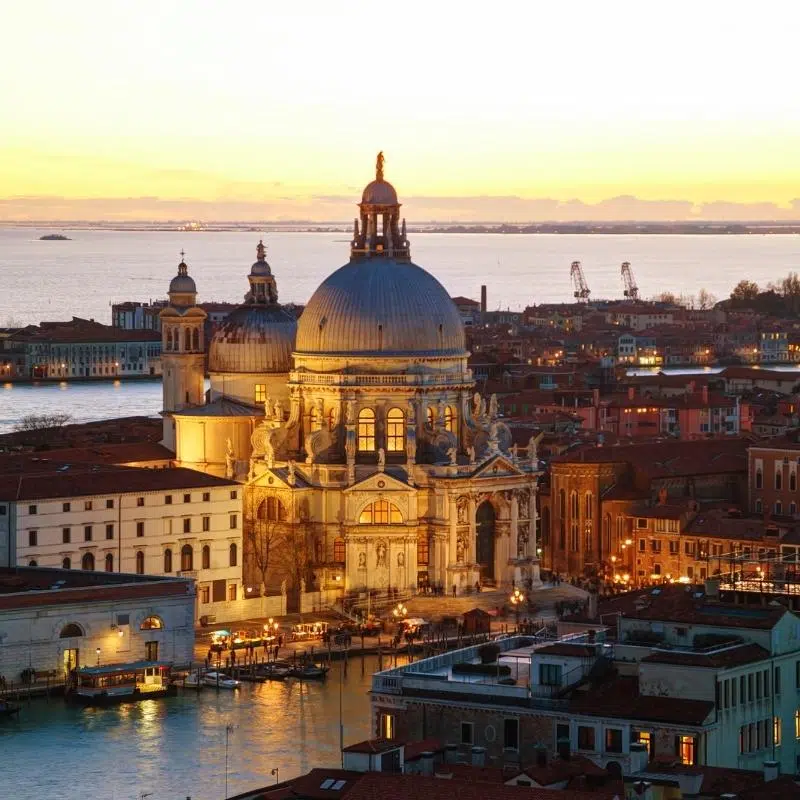
Grab a Cicchetti & Ombra in Dorsoduro
Head to the Dorsoduro district, home to Venice University, which is quieter and less touristy than the other districts in Venice, so prices are much more reasonable.
There are many small Bacari bars to try here, which serve the typical Venetian aperitif of an ombra (small glass of wine) and a cicchetti . You can even do a Bacari crawl, where you can eat a cicchetti , a small snack much like a Spanish tapa, with a glass of local wine.
The Cantina Schiavi is an amazing experience – the walls are covered in bottles of wine, and they serve fresh cicchetti on the side. There are no seats, so take your aperitif outside to watch one of the city’s last gondola shops at work.
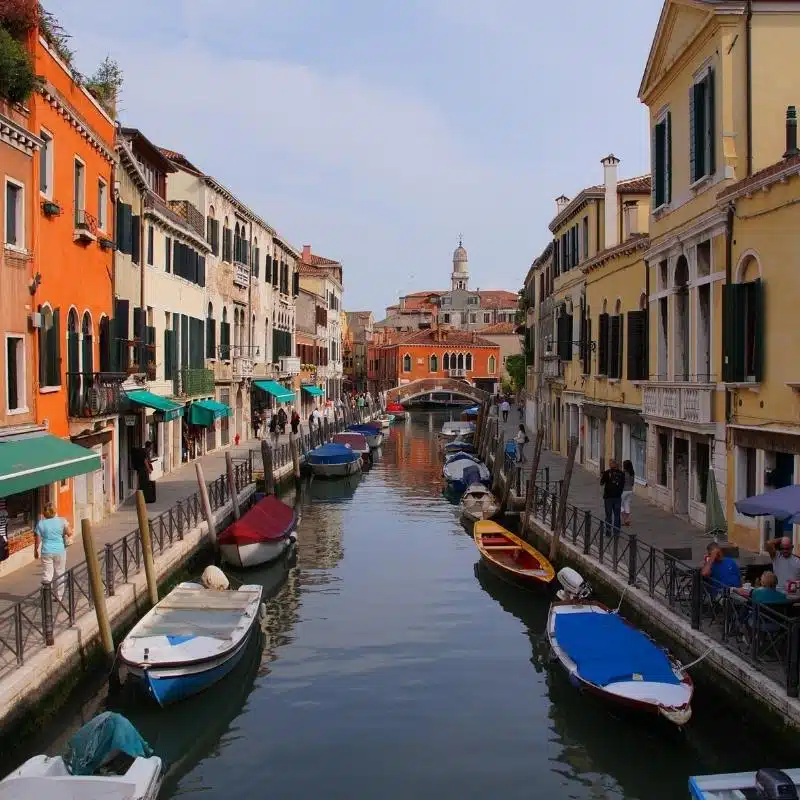
Take a Nighttime Gondola Ride
What could be more fun or romantic than an evening gondola ride to see Venice from the water while you float down the majestic Grand Canal to spot Venice’s top sights in the moonlight?
Trying to catch a gondola and then negotiate the price can be a stressful experience, and you risk paying over the odds to enjoy this quintessential Venetian experience. Pre-book a private gondola ride so that you can just arrive, board and enjoy floating along the gorgeous Venetian canals.
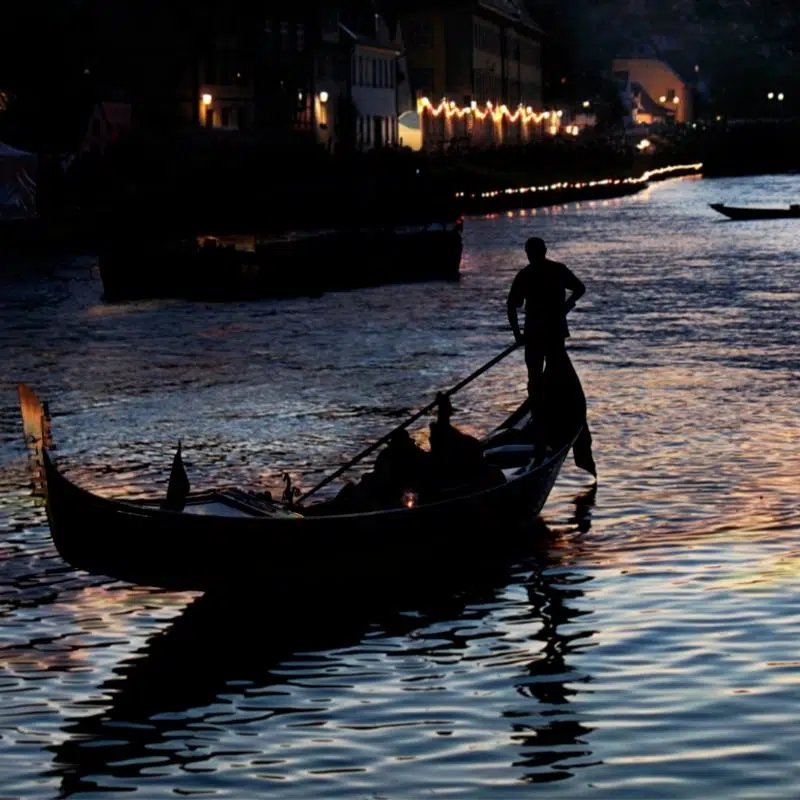
Have Amazing Cocktails at Taverna Al Remer
Just a stone’s throw from the canal and a great nighttime view of the Rialto Bridge is the Taverna Al Remer. This is a fantastic location for a late-night cocktail, sit inside at the very cool bar or in the summer months outside in the small Piazzetta with a view of the canal and molo , the broad stone quay that was once the ceremonial landing spot for great officials and distinguished visitors.
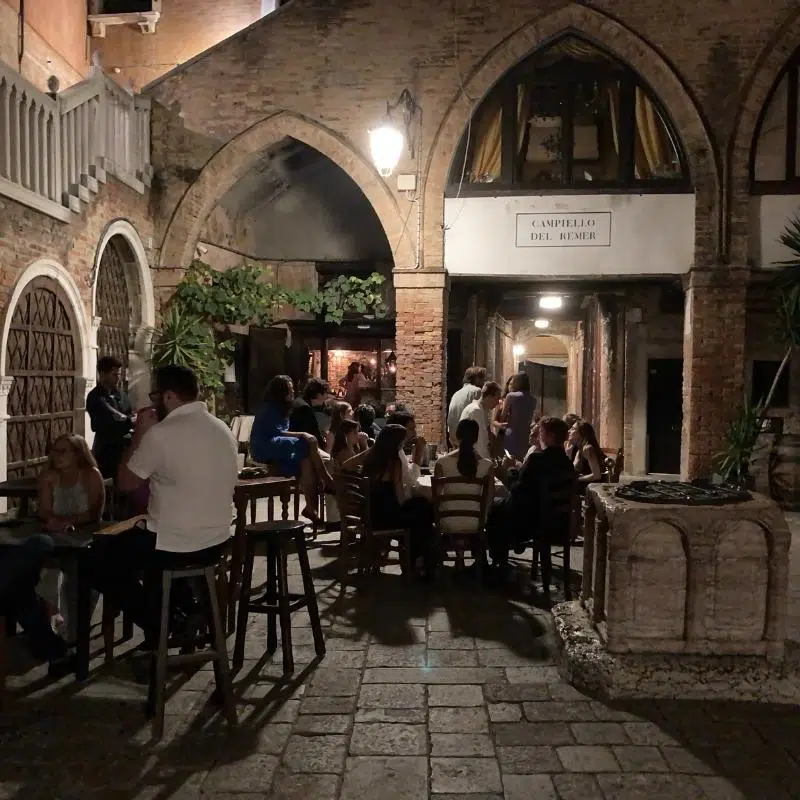
Other Italian Travel Guides
- FREE Self-Guided Bologna Food Tour
- How to Visit Pompeii & Vesuvius in One Day
- Rome in a Day – Itinerary, Map, Tips & Guide
- Great Dolomites Road: Absolutely Everything You Need to Know!
- Tuscan Road Trip: Itinerary, Map & Tips
- A Bucket List Amalfi Coast Road Trip
- How to Spend 36 Hours in Palermo
- Dolomites Road Trip: Explore the Best of Northern Italy
- One Day in Florence – Itinerary, Map, Tips & Guide
- Northern Italy Road Trip: Itinerary, Map & Tips
Where to Eat in Venice
All’ arco.
Head to All’ Arco for lunch, this is a tiny restaurant with only three tables, but you can eat standing up outside and they offer an amazing selection of meat and fish cicchetti .
Boccadargento
Boccadargento is a wonderful restaurant off the beaten track serving authentic Venitian food. They don’t have a website but I can tell you from personal experience the food is excellent and the service great.
Osteria Alla Fresca
Osteria Alla Fresca is another wonderful traditional Venetian restaurant, with a great price point to boot. Head to this small osteria away from all the crowds and tourists and sit under a canopy of vines and enjoy the wonderfully fresh food.
Osteria Giorgione Da Masa
If you feel like something slightly different, then Osteria Giorgione Da Masa could be the place for you. A fusion of Japanese and Venetian cuisines, that includes ramen and cicchetti . There is also a very reasonably priced tasting menu, which can be made allergen and gluten-free if requested before ordering.
Street Food Tour with a Local Guide & Tastings
If you want some expert guidance in Venetian food, eat your way around Venice on a tasting tour of some of the city’s eateries with a foodie guide, and see historical monuments along the way!
This highly rated Venetian street food tour will take you from the historic Rialto Market alongside the Grand Canal to Campo San Polo for the Basilica dei Frari and Campos San Bartolomeo before arriving at Campo Santa Margherita square, which is surrounded by local restaurants and farmers’ markets. You’ll learn about the districts and historical monuments you pass by and get to taste the food of Venice.
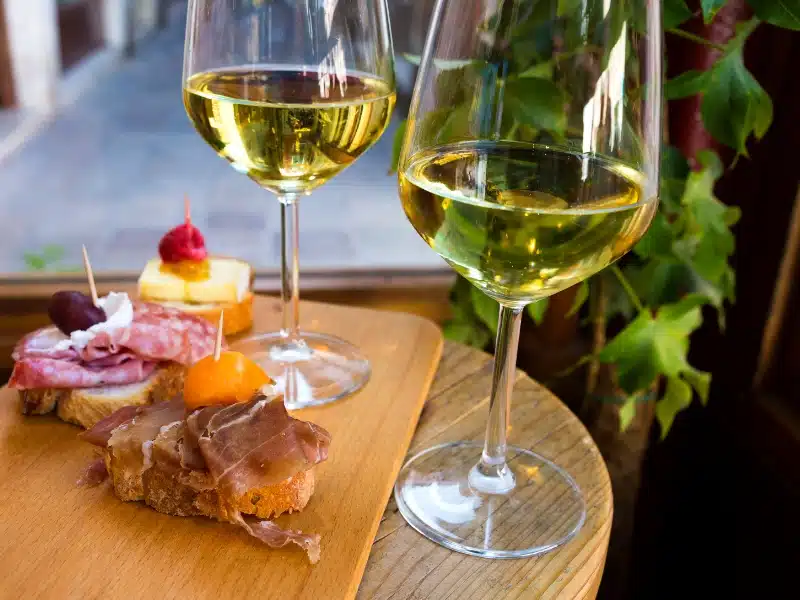
Top Five Venice Travel Tips
- Make sure you start your day early to try and avoid the crowds as much as possible. The city with its narrow streets gets very busy and the going can be slow going when walking.
- Always ask about prices before getting a water taxi or a gondola as they can be expensive. You could always take a shared gondola ride or shared water taxi to help with cost. Or you can get the water bus, which offers a similar (but not quite!) experience, and the tickets can be purchased in advance for less than a tenth of the cost of a gondola ride.
- Do not sit down to eat or drink a coffee in St Mark’s Square, unless you are a millionaire! They way overcharge here, and there are much nicer, off-the-beaten-path places which offer a more authentic experience.
- Before travelling to Venice invest in a City Card and enjoy the city to the fullest, saving money at the same time. The Venice Museum Pass is valid for 180 days once you have exchanged it, you take your electronic voucher and exchange it in one of many locations in the city for the official Venice pass. This pass will gain you entry to the Doge’s Palace, the Correr Museum and another ten civic museums of your choice. This is also a skip-the-line pass, so you will get to see more of these amazing attractions.
- Keep vigilant about your personal space and belongings, pickpockets operate all over Venice and prey on tourists in particular.
More Than 1 Day in Venice
Take the train to conegliano.
Conegliano is a wonderful town that sits in the foothill of the Dolomites and is the heart of the Prosecco region, just 35 minutes by train from Venice. Once there you can see the works of Giovanni Battista Cima, one of the famous Italian Renaissance artists, at Casa Cima .
Take a walk up to the castle and have a glass of local Prosecco as you admire the view of the Dolomites all the way to the Venice lagoon. This is definitely one place that should be added to your Italy bucket list.
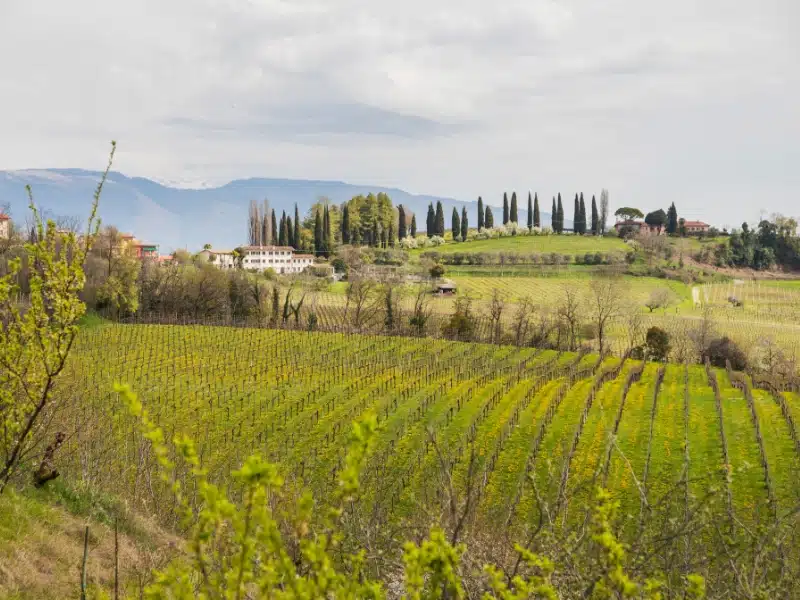
Visit Sant’Erasmo – St. Erasmus Island
St. Erasmus Island is the largest of all the islands in the Venice lagoon, and is often referred to as ‘the vegetable garden of Venice’. This is a place to get out of the hustle and bustle of the city and get back to nature. As well as growing vegetables on the islands there are also vineyards
The island is rich in orchards and vineyards and is very famous for the violet artichoke of Saint Erasmo, a variety that grows only on the island. They are a real delicacy and are only available locally for 10-15 days a year.
You can also see the Massimilania Tower, built between 1843 and 1844, it was erected during the French and Austrian occupation for defending the lagoon. Now its used for cultural events and photography exhibitions.
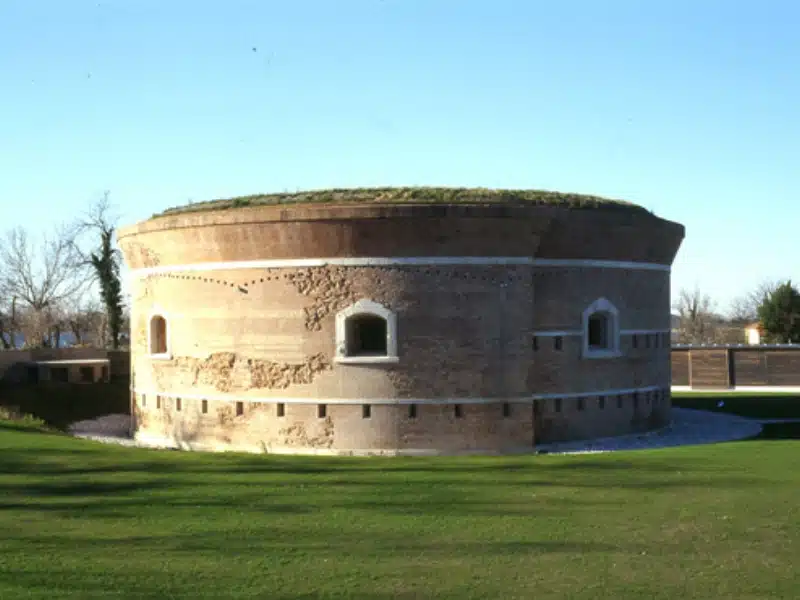
Burano, Murano and Torcello Boat Tour
If you take one day trip from Venice, make it this highly recommended and well-organised tour.
Depart from Venezia San Marco and get the five-star treatment as you ride by boat to the islands of Murano , Burano and Torcello . Visit Murano and find out why the island is renowned for its glassworks with a visit to a local glass factory , then watch a skilled artisan during a glass-making demonstration before exploring the glass shops on the island.
Next, head for Burano , which is known for its brightly painted houses and lacework. Follow your guide to the heart of the town and have time to explore the lace museum and enjoy a coffee.
Sail to Torcello , the first center of civilization in the estuary. See the Venetian-Byzantine mosaics at the Basilica di Santa Maria Assunta and discover the 10th century Torcello bell tower .
With a professional guide to offer insights, an organised tour is the perfect opportunity to see more of Italy in less time!
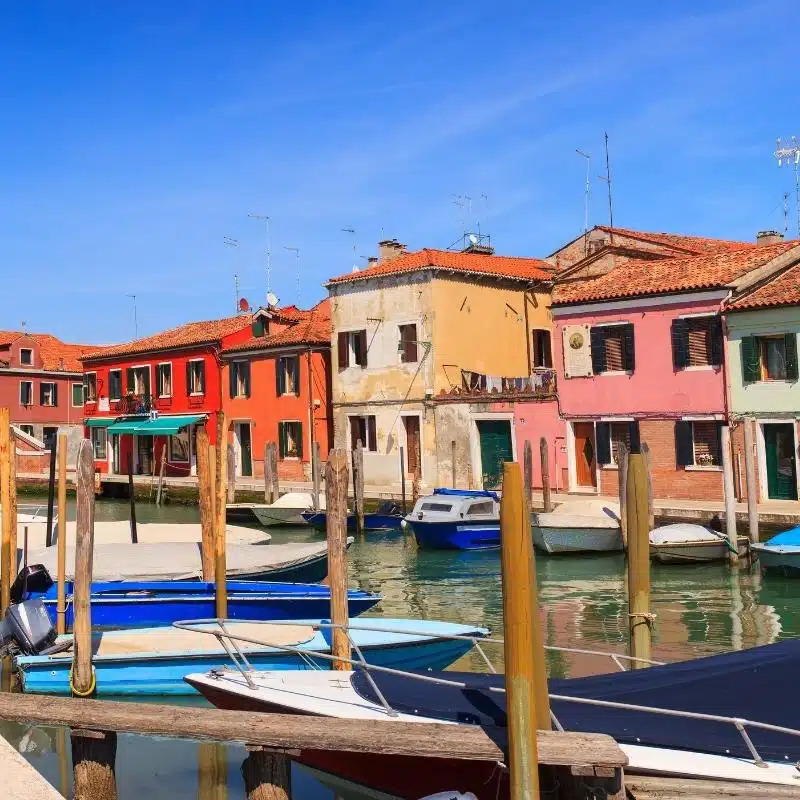
Are you looking for more one day city itineraries? Check out these top posts…
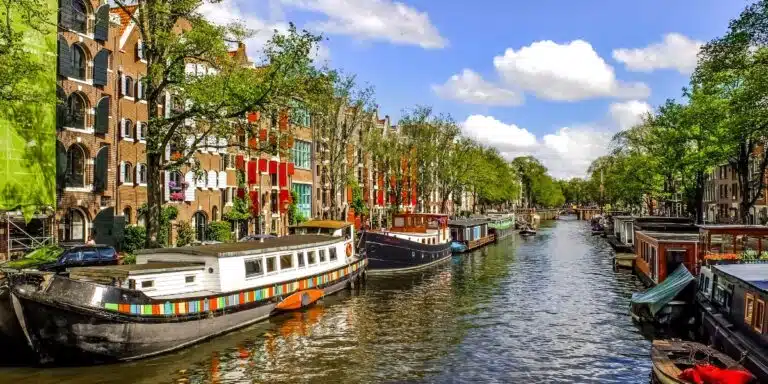
Amsterdam One Day Itinerary + Map, Tips & Guide
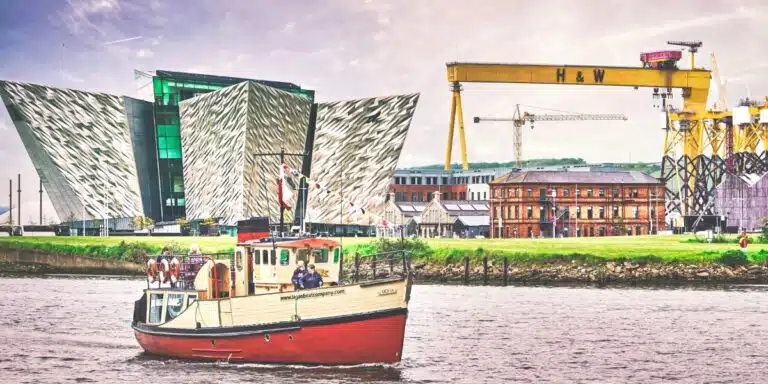
Belfast in A Day: Itinerary, Map & Tips
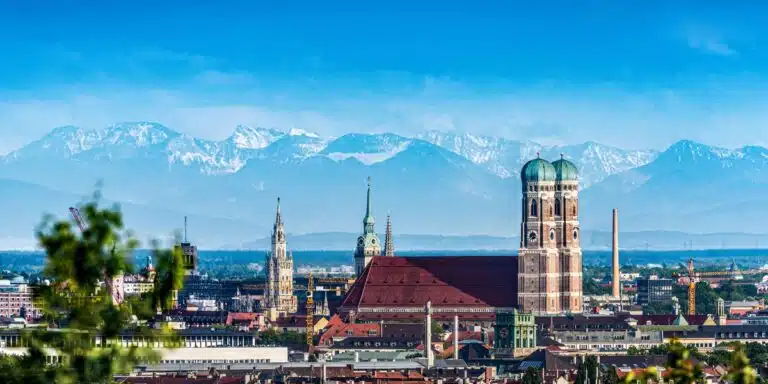
One Day Munich Itinerary + Map, Tips & Guide
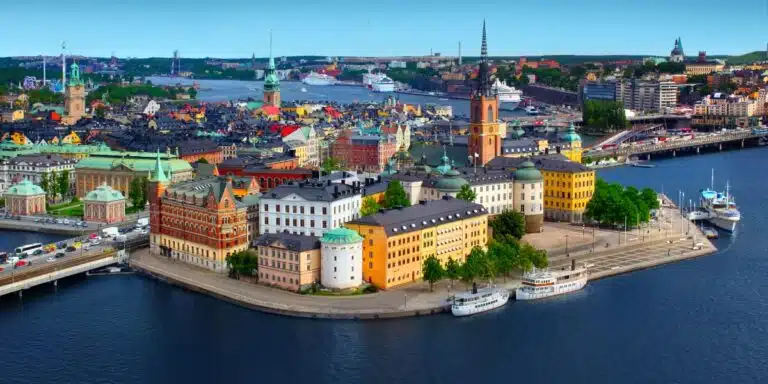
Stockholm One Day Itinerary + Map, Tips & Guide
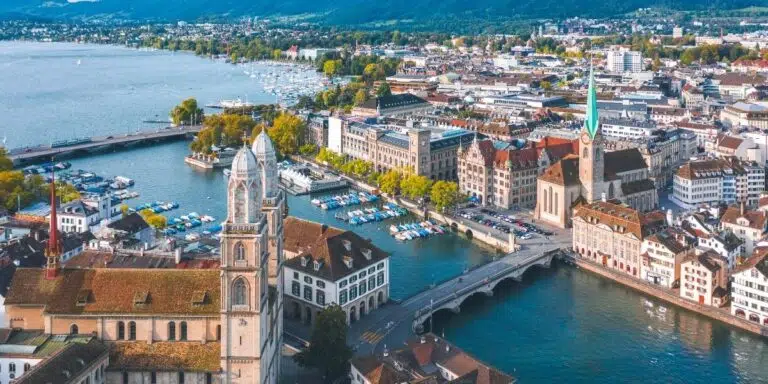
One Day in Zurich – Itinerary, Map, Tips & Guide
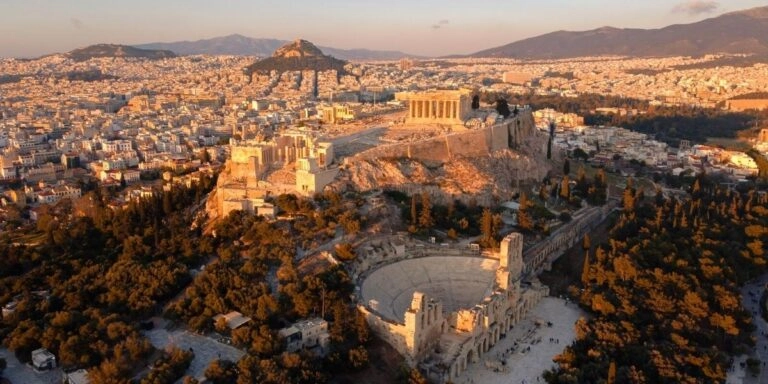
One Day in Athens – Itinerary, Map, Tips & Guide
Love it pin it.
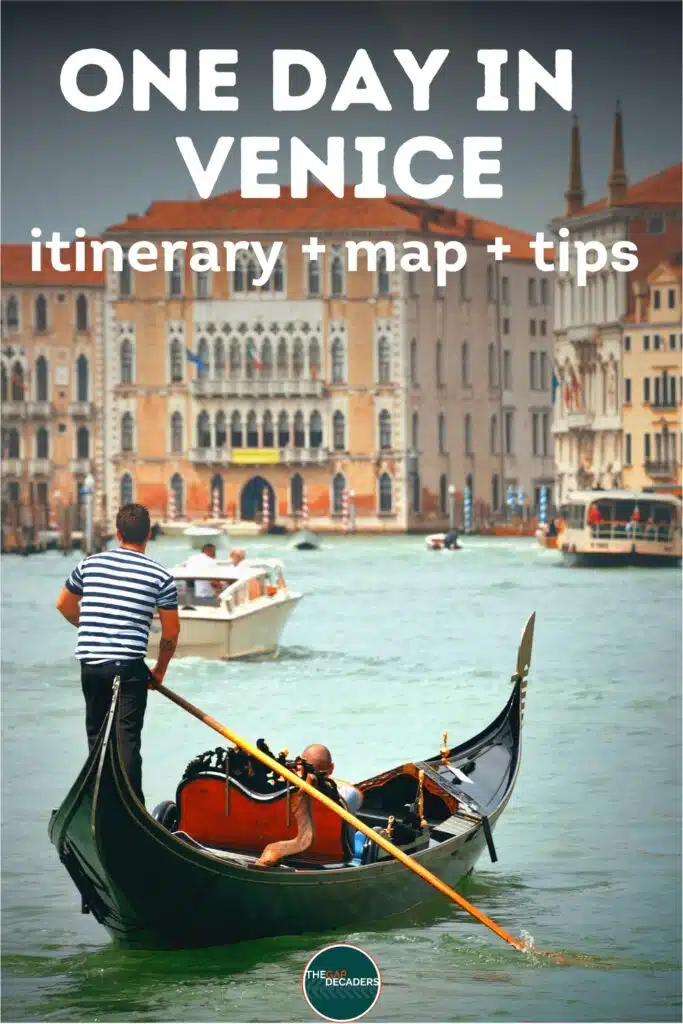
Venice's Vaporetto Transportation
Best Gondola Rides
Day Trips From Venice
Top Things to Do
Free Things to Do
Traveling With Kids
Best Museums to Visit
Guide to Carnevale
Top Venice Restaurants
Nightlife in Venice
Best Time to Visit
Weather & Climate
Marco Polo Airport Guide
Neighborhoods to Know
Venice Neighborhoods Map and Information
:max_bytes(150000):strip_icc():format(webp)/martha_bio-56a3c8865f9b58b7d0d3b5fe.jpg)
JaCZhou 2015/Getty Images
Venice , one of Italy's top cities, is comprised of six sestieri (singular sestiere ) or neighborhoods. The Grand Canal, which is the city's main waterway, not only separates these neighborhoods but also provides residents and visitors with a primary mode of transportation. Take a look at this sestiere map and learn more about each neighborhood, plus how to use Venice's vaporetto or public transportation system.
Venice Sestiere Map
This sestiere map shows different locations throughout Venice. Although San Marco is the most often visited by tourists, each sestiere has its own unique character and tourist attractions. For tourists, be mindful that popular neighborhoods to visit are located on each side of the Grand Canal. Once you have decided where you want to explore, you will need to take into account various transportation options.
The train station is located in Cannaregio. On the same side of the Grand Canal, you will find San Marco and Castello. Santa Croce, across the Grand Canal from the train station, is closest to the bus and taxi arrivals at Piazzale Roma. San Polo and the Dorsoduro are across the canal from St. Mark's Square .
TripSavvy / Christopher Larson
San Marco is in the heart of Venice and the sestiere most often visited by tourists. Piazza San Marco, St. Mark's Square, is Venice's main square. Around the square are elegant historic buildings and expensive cafes, some with live music in the evening. In addition, main tourist sites such as Saint Mark's Basilica , the Doge's Palace , the Campanile (bell tower), and the Correr Museum can be found in this sestiere .
TripSavvy / Lara D'agostino
Dorsoduro, a large sestiere across the Accademia Bridge from San Marco, is close to Piazzale Roma (where buses and taxis arrive). A must-visit for art lovers, this neighborhood is home to Accademia Museum and the Guggenheim Art Collection, two of Venice's top museums .
Along one border of Dorsoduro sits the Guidecca Canal and its tranquil and scenic walkways. Foodies in search of cuisine often visit Campo Santa Margherita, a popular spot during the day that is home to fish and vegetable markets. Many students also call this sestiere home, as much of Venice's university system is located here. Thanks to the student population in this area, nightlife opportunities abound.
TripSavvy / Lara D'agostino
The Rialto Bridge across the Grand Canal connects San Marco and San Polo, one of the oldest parts of Venice. At the foot of the Rialto Bridge in San Polo is a massive fish and open-air vegetable market, which is an exciting place to visit early in the morning. San Palo is home to many food shops, bars, and great restaurants. It's a small but pretty sestiere with remnants of its medieval roots (some on display at Santa Maria Gloriosa de Frari).
While San Polo doesn't have an abundance of hotels, there are some good bargains that can be found here. Tourists seeking a true taste of Venice with a gondola ride can find a relaxing, serene option with a gondola ride .
Santa Croce Sestiere
Santa Croce is next to San Palo along the Grand Canal. If you're arriving in Venice by bus or taxi, this is the closest sestiere . Santa Croce is not only one of the oldest areas in Venice, but it is also the least visited by tourists. If this sestiere is on your list, be sure to explore its food options. It's home to one of Venice's most expensive restaurants, la Zucca, as well as many beloved pizzerie .
Cannaregio, across the Grand Canal from Santa Croce, is a large sestiere that stretches from the Venezia Santa Lucia Train Station to the Rialto Bridge. The Cannaregio Canal is the second largest canal in Venice, connecting the lagoon with the Grand Canal.
This neighborhood is known for its picturesque squares and canals, plus its local flavor, provided by its many residents. The Jewish Ghetto can be found here, as well as Fondamenta Misericordia, which is a great place to find restaurants, shops, cafes, and wine bars.
Castello, on the other side of San Marco, is home to the Venetian Arsenale, which consists of an old shipyard. It's a unique area to explore, and you'll see fewer tourists as you get farther from San Marco. Campo Santa Maria Formosa, the main square, is a pleasant spot filled with history and art.
If you long to visit nearby islands, numerous boats for the islands of Murano and Burano leave regularly from Fondamente Nove, which is the walkway along the northern lagoon.
Venice Vaporetto
Venice's vaporetti (singular vaporetto ) are water buses, which are Venice's form of public transportation. The main vaporetto runs along the Grand Canal, connecting the train and bus stations with stops at each sestiere . To make the most out of this mode of transportation, educate yourself about using the vaporetti , such as ticket prices, schedules, and purchasing travel cards.
Venice Lido
Consider staying on Venice Lido if you're interested in the beaches, nightlife, the Venice Film Festival , or driving your car to your hotel. From the Lido, it's only a short vaporetto ride to Saint Mark's Square.
Top Venice Islands
TripSavvy / Christopher Larson
Islands of the Venetian lagoon can easily be visited from Venice. Murano, home of glassmaking, and the colorful island of Burano, are among the most popular.
Venice Airport Transportation
The Venice Marco Polo Airport is almost four miles from Venice. Transportation options from the airport to different neighborhoods in Venice include the city bus system, shared vehicle services, or renting a car. Depending on how many people are in your party, plus how much luggage you have, will likely determine the best (and cheapest) option of transportation to your chosen sestiere .
Venice, Italy Guide: Planning Your Trip
What to Know About Gondola Rides in Venice, Italy
The Best Things to Do in Venice, Italy
10 Budget Travel Tips for Visiting Venice
The Top 10 Things to Do with Kids in Venice
The Top 10 Free Things to Do in Venice, Italy
Venice's Vaporetto Transportation System: A Complete Guide
A Guide to Venice's Historic Rialto Bridge
The Best Nightlife in Venice
Guide to Marco Polo Airport in Venice
A Traveler's Guide to Chioggia
Murano: Planning Your Trip
Two Weeks in Italy: The Perfect Itinerary
The 15 Best Destinations in Italy
The 10 Top Restaurants in Venice
The 5 Most Romantic Spots in Venice
Venice Travel Guide and Map 12+
Trip planner, offline city map, kulemba gmbh, designed for ipad.
- 4.7 • 68 Ratings
Screenshots
Description.
Offline Maps and much more! Discover new places and insider tips. Collect, save and organize them as you like. And have the best trip ever! With us, traveling got easier and even more fun. Here’s what you get – the shortest possible version: • Free offline maps – no roaming, no hustle • Insider tips and places to discover • Multifunctional lists to plan and organize your trip We let you discover new places, beautiful spots and insider tips at the touch of a button. Collect your personal best-of and save it for later. You will experience your best journeys yet with detailed offline maps and in-depth travel content on your mobile travel companion. And here’s why 5+ million travelers love our apps: CLEAR AND CONCISE MAPS Never get lost again. See your location on the map via GPS, no internet connection is required. Find streets, addresses or attractions and get pointed in the walking direction. IN-DEPTH TRAVEL CONTENT You’ll never have to buy another guide book. Our Guides features pictures as well as comprehensive and up-to-date information is available for thousands of places and attractions. SAVE ROAMING FEES Maps and guide content are stored on directly your device so you can access them at any time even without an internet connection. An internet connection is of course required for initial downloading of data or booking hotels. SEARCH AND DISCOVER Search a specific place by name or browse by categories like restaurants, architecture, hotels, shops, bars, etc. PLAN TRIPS AND CUSTOMIZE MAPS Book the hotel for your next city tour right within the app. Remember and save all the places you would like to visit. Create new or individual ones. Mark them with different colors or add notes to them. SHARE WITH FRIENDS Create your own reviews and ratings of your favorite places. Share these tips and recommendations with friends and other travelers.
Version 21.0
We added "Sign in with Apple" as authentication method and fixed some bugs!
Ratings and Reviews
This app saved me.
I anticipated being able to connect to wifi more often than I actually did, and many times the wifi that was available was extremely slow! Having this map saved me over and over again when I was lost in the streets of Venice- which even locals admit to! Cell service is not cheap anymore, costing $10/day per phone (with AT&T) so it was great to be able to save points of interest before my trip then have the ability to find it with the offline map!
We’re going to Venice this summer and I’m hoping the offline map will help. My understanding is that everyone gets lost in Venice! Wish me luck! If I can remember I’ll write another review when I return.
The best offline map
I used this app consistently for a month while staying in Venice and it did a great job of helping me to orient myself and navigate a complex city. It’s not perfect (hence the 4 stars), but it is better than any other offline map that I tried for comparison and it is far better than trying to get around Venice with an unwieldy foldout paper map that cannot tell you where you actually are.
App Privacy
The developer, Kulemba GmbH , indicated that the app’s privacy practices may include handling of data as described below. For more information, see the developer’s privacy policy .
Data Linked to You
The following data may be collected and linked to your identity:
- Contact Info
- Identifiers
Data Not Linked to You
The following data may be collected but it is not linked to your identity:
- Diagnostics
Privacy practices may vary, for example, based on the features you use or your age. Learn More
Information
English, French, German, Italian, Simplified Chinese, Spanish
- Developer Website
- App Support
- Privacy Policy
More By This Developer
CityMaps2Go – Offline Maps
Paris Travel Guide and Map
CityMaps2Go Pro Offline Maps
New York Travel Guide and Map
Barcelona Travel Guide and Map
Amsterdam Travel Guide & Map
You Might Also Like
Florence Travel Guide Offline
Venice Travel Guide ..
Rome Travel Guide Offline
AVM Venezia Official App
VENICE Guide Tickets & Hotels
Rome Travel Guide .

- You are here:
- Venice tourist map
Venice Travel Guide
Last Updated: August 23, 2023
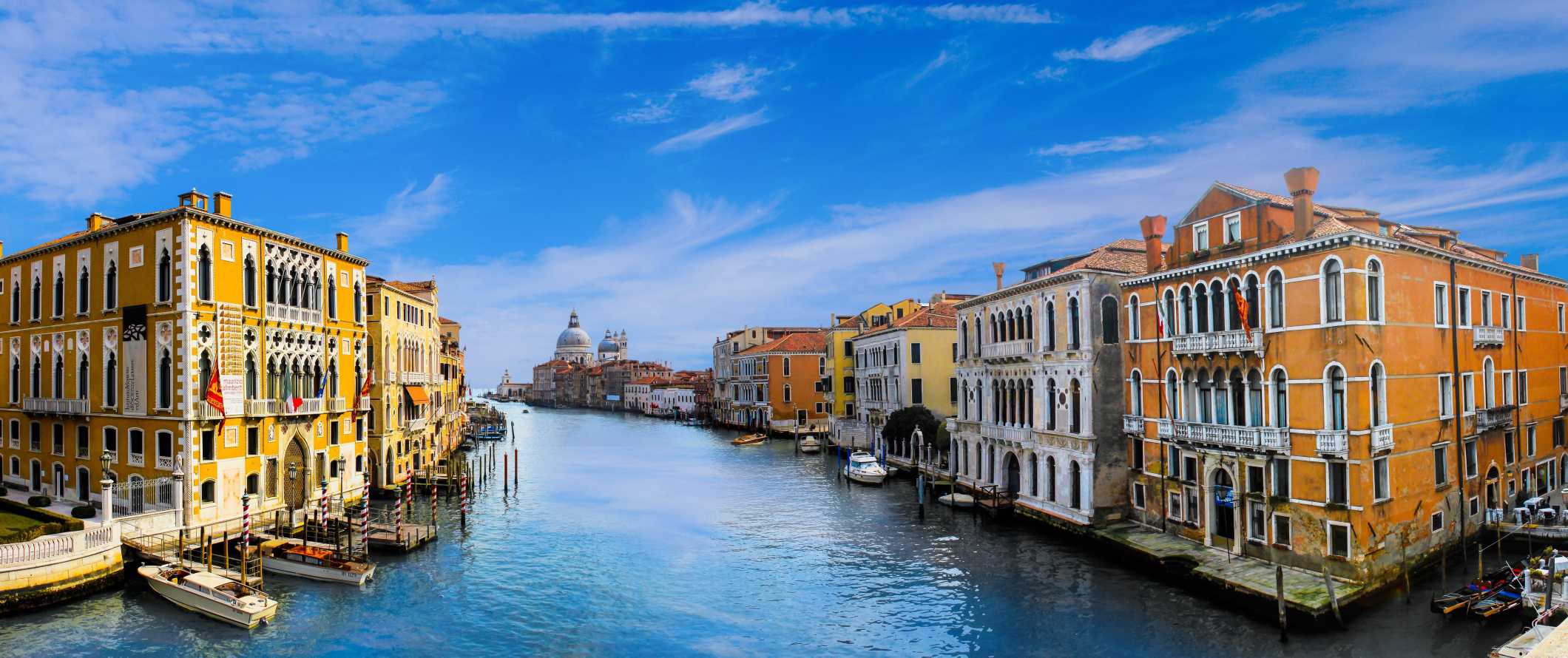
With its iconic canals, picturesque gondolas, and winding streets, it’s no surprise that Venice is considered one of the most romantic cities in the world. But while the city is popular with honeymooners, it’s also a huge destination for cruisers and backpackers too.
It should be obvious as to why.
Venice is beautiful, fun, and full of narrow streets and alleys to get lost in. It’s a magical place unlike any other. There are museums, palaces, historic town squares to explore, and endless gelato to eat.
Unfortunately, the city is also expensive and overtourism has become a real problem. No matter what time of the year, you’re going to encounter crowds. In fact, if you come in the summer, it’s going to be unbearable (and if you come when a cruise ship is docked, it’s even more unbearable!)
But that doesn’t mean you should skip a visit!
You can avoid the crowds if you skirt around the center of the city and head to some of the outer islands like Burano and Morano. Tourists tend to cluster in a few places and are easy to escape.
This travel guide to Venice can help you beat the crowds, save money, and make the most of your time in this famous Italian city!
Table of Contents
- Things to See and Do
- Typical Costs
- Suggested Budget
- Money-Saving Tips
- Where to Stay
- How to Get Around
- How to Stay Safe
- Best Places to Book Your Trip
- Related Blogs on Venice
Top 5 Things to See and Do in Venice
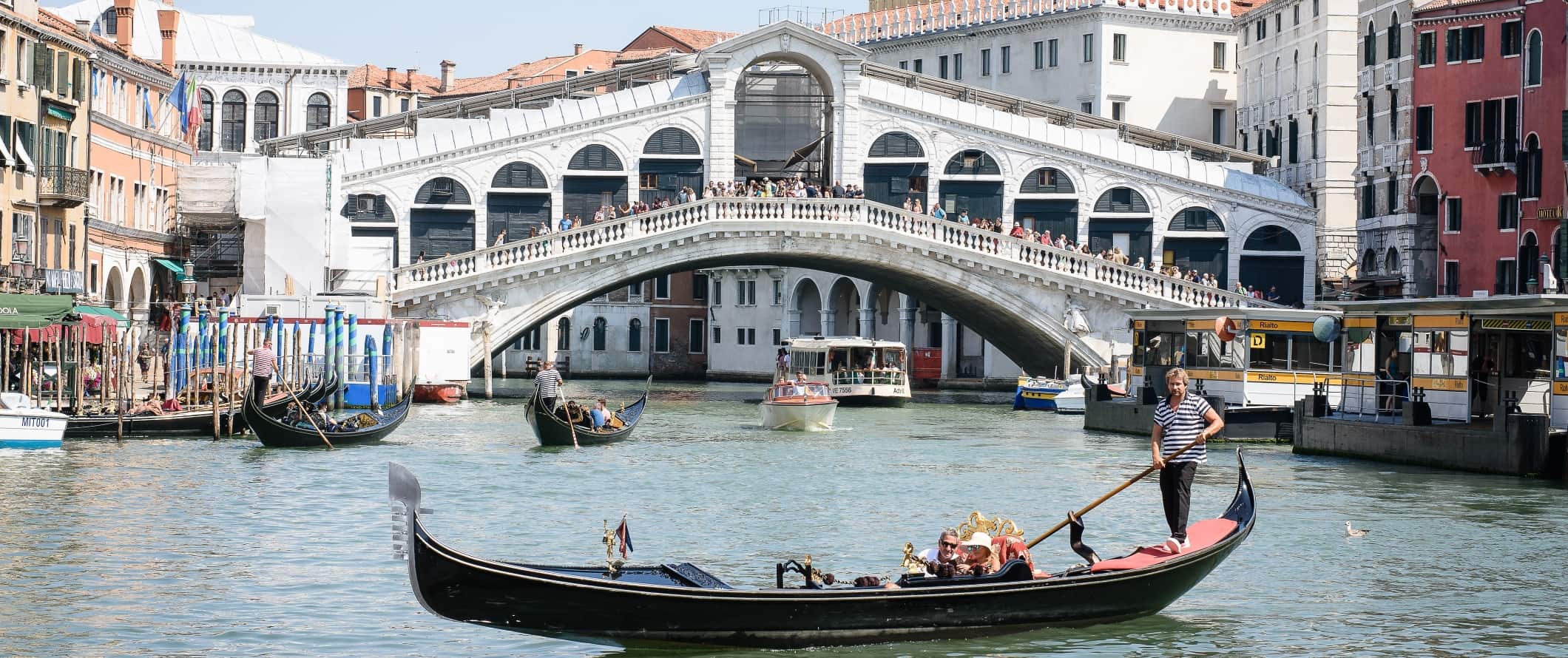
1. Visit the Basilica San Marco
St. Mark’s Basilica is dedicated to the patron saint of the city and is located in the Piazza San Marco. While there has been a place of worship on this site since 820 CE, the current basilica was built in 1063. It’s filled with amazing 11th-century mosaics, marble-covered walls, statues, and five, gold-covered Byzantine domes. The High Altar also supposedly contains some of St. Mark’s remains. It’s 3 EUR to visit the basilica (or 6 EUR for a skip-the-line ticket). There are also a variety of combined entrance tickets depending on which attractions in the complex you want to visit. The Complete Basilica Ticket, which includes the Basilica, Pala d’Oro (golden altar), Museum, and Loggia Cavalli (terrace with views and other exhibits), costs 20 EUR, which includes skip-the-line entry. You can also do a guided tour after hours when the crowds have left with Walks of Italy for around 100 EUR.
2. Walk across Rialto Bridge
While it’s now one of four bridges that cross the Grand Canal, for centuries, the Rialto Bridge was the only way to get from one side to the other. Originally built as a floating bridge in the 12th century, it was first constructed for easier access to the Rialto Market (hence the bridge’s name). The current iteration of the bridge, completed in 1591, was created by Antonio da Ponte, who beat out Michelangelo for the job. The entire bridge is made of Istrian stone and crosses the Grand Canal at its narrowest point, connecting the San Polo and San Marco districts. To beat the crowds, come at sunrise.
3. Tour the Doge’s Palace
Located in St. Mark’s Square, Doge’s Palace is one of Venice’s main landmarks and was the home of the duke who ruled Venice. The massive building was originally built in the 14th century in the Venetian Gothic style, though it has been renovated, extended, and modified over the centuries. The interior is filled with artwork, gilded ceilings, and an armory. You can also descend into the prisons and cross the famous Bridge of Sighs. Admission is 26 EUR as part of the Combined Museums of San Marco ticket, which includes entrance to the Correr Civic Museum, the National Archaeological Museum, and the monumental rooms of the Marciana National Library.
4. Attend Carnival
Carnival is ten days of masquerade madness every February leading up to Mardi Gras, the day before the start of Lent on Ash Wednesday. The tradition goes back centuries, starting in the 12th century and reaching the height of popularity in the 18th century. The festival was on pause for nearly two centuries, starting in 1798 when the city was under Austrian rule (when masks were banned). It wasn’t until 1979 when Carnival was revived. Today, it is one of the biggest festivals in Italy , with millions of people attending every year. The iconic and diverse masks are a central part of the festivities and every year there is a contest for the most beautiful mask. If you have the funds, you can even pay to attend a traditional masquerade ball! (Book your accommodation early as the city fills up months in advance).
5. Day trip to Burano
Other things to see and do in venice, 1. take a walking tour.
The first thing I do when I arrive in a new city is take a free walking tour. It’s the best way to see the main sights on a budget while connecting with a local guide who can share their insider tips and advice. Venice Free Walking Tour runs regular free tours that cover all the highlights. Just be sure to tip your guide at the end!
If you want to invest in your experience and take a more detailed walking tour, my favorite company is Take Walks . They have amazing walking tours and boat tours all around the city. They use expert local guides so you’ll not only have fun but you’ll learn a lot too!
2. Wander the Piazza San Marco
This is the most famous and largest piazza (city square) in Venice. The grand square has long been a popular meeting spot for Venetians and is home to many important city highlights, including the basilica, its bell tower, the Doges Palace, and the National Archaeological Museum. (You can visit all of these sights on a combined Piazza San Marco ticket, which costs 26 EUR). The Piazza is most impressive when approached from the water as you get a full sense of the scale and history of these antiquated buildings.
3. Head to the island of Lido
If you want to escape the city, Lido is a nearby island where people go to relax on the beach. There are lots of picturesque canals here, as well as restaurants, cafes, and bars. Every August, the world of cinema descends on Lido for the Venice Film Festival, the oldest and one of the most prestigious film festivals in the world. Lido is only a 20-minute vaporetto ride (water bus) from Venice. A round-trip ticket costs 10 EUR, or for 13 EUR you can get a round-trip ticket that can be used for the buses on Lido too.
4. Visit Murano Island
Close to Venice, this island is the home of the famous Murano glassblowers, who have been creating intricate glassworks here since 1291. Although Murano is filled with expensive souvenirs (avoid buying anything on the island if you’re on a budget!), you can still have an educational and fun afternoon learning and watching how the glass is blown. The Murano Glass Factory only costs 5 EUR, which includes the glass blowing demonstration and guided tour of the factory. To get to Murano, you can take the ferry for 8 EUR.
5. Wander the Rialto Market
The Rialto Market is Venice’s main market and it has been around for the past 700 years. It’s a huge food market with all kinds of meat, produce, and fish. Come in the morning before the market is flooded with tourists to watch all the hustle and bustle. You’ll find the market northwest of the Rialto Bridge in the district of San Polo.
6. Tour the Peggy Guggenheim Collection
This is the personal art collection of art collector Peggy Guggenheim, located in her former mansion along the banks of the Grand Canal. It is a massive, avant-garde collection of art with works from more than 200 artists. While modern art is not my favorite kind of art, there are countless pieces by surrealists, abstract expressionists, and Italian futurists that make this worth a visit. There’s also an outdoor sculpture garden. Admission is 16 EUR.
7. Climb the Campanile di San Marco
Built in 1912, this tower in Piazza San Marco is a replica of the original Bell Tower of St. Mark (which was built in the 16th century and collapsed in 1902). It said that every last detail of the structure is a match. Standing at almost 100 meters (328 feet) tall, it’s the tallest structure in Venice. The tower was originally constructed for defensive purposes so that watchmen could see ships coming in and out of the city. For 10 EUR, you can climb up through the inner workings and get a panoramic view of the city.
8. Watch the Vogalonga
The Vogalonga is a non-competitive 20-mile marathon rowing event held annually in May. This tradition originated in 1974 as a protest against the increasing amount of powerboats taking over Venice’s waters. Thousands of people from all over the world take part every year, in all different kinds of boats, including gondolas, kayaks, canoes, dragon boats, stand-up paddleboards, and more (some people even swim!). It’s incredible to watch and one of the biggest events of the year.
9. Visit the National Archaeological Museum
This museum was created in 1523 by Italian nobleman and cardinal, Domenico Grimani. Although it’s a small museum, the National Archaeological Museum’s collection of Greek sculptures, Roman busts, funerary stelae, and other relics date back as far as the 1st century BCE. Tickets are 26 EUR as part of the Combined Museums of Piazza San Marco (which includes entrance to the Doge’s Palace, the National Archaeological Museum, and the monumental rooms of the Marciana National Library).
10. Check out the Correr Civic Museum
The Correr Civic Museum includes an expansive collection of art and artifacts showcasing the city’s history, as well as works from the homes of former royals (including Napoleon Bonaparte). You can spend hours here viewing the frescoes, ancient maps, statues, religious paintings, and more. Tickets are 26 EUR as part of the Combined Museums of Piazza San Marco (which includes entrance to the Doge’s Palace, the National Archaeological Museum, and the monumental rooms of the Marciana National Library).
11. Peruse the art at the Galleria dell’Accademia
The Galleria dell’Accademia was established by Napoleon Bonaparte and is home to numerous artistic works from the 14th-18th centuries, including masterpieces from Bellini and Tintoretto. Its most famous piece, however, is Leonardo da Vinci’s small ink drawing titled Vitruvian Man (however, it’s rarely on display due to the fragile and light-sensitive nature of the work). Tickets are 12 EUR.
12. Explore the Jewish Ghetto
The Jewish Ghetto is a neighborhood located in the north-western part of Venice. It’s considered to be the world’s first ghetto, established in 1516 when everyone in the city’s Jewish community was forced to relocate here. They were only allowed out during the day and then were locked up and heavily guarded in the evening. Despite its troubling history, the Jewish Ghetto is now full of restaurants, shops, museums, and synagogues. It’s a lively place to explore but is often overlooked by tourists.
13. Take a food tour
To learn more about the history and culture behind Venice’s cuisine, take a food tour. It’s the best way to eat your way around the city sampling the best eats Venice has to offer while learning what makes the cuisine unique. Devour Tours runs in-depth food tours led by expert local guides that will introduce you to the food culture and its history. If you’re a foodie like me who wants to learn more about the history and culture behind each dish, these tours are for you! Tours start at 89 EUR.
For more information on other cities in Italy, check out these guides:
- Cinque Terre Travel Guide
- Florence Travel Guide
- Milan Travel Guide
- Naples Travel Guide
- Pisa Travel Guide
- Rome Travel Guide
- Sorrento Travel Guide
Venice Travel Costs
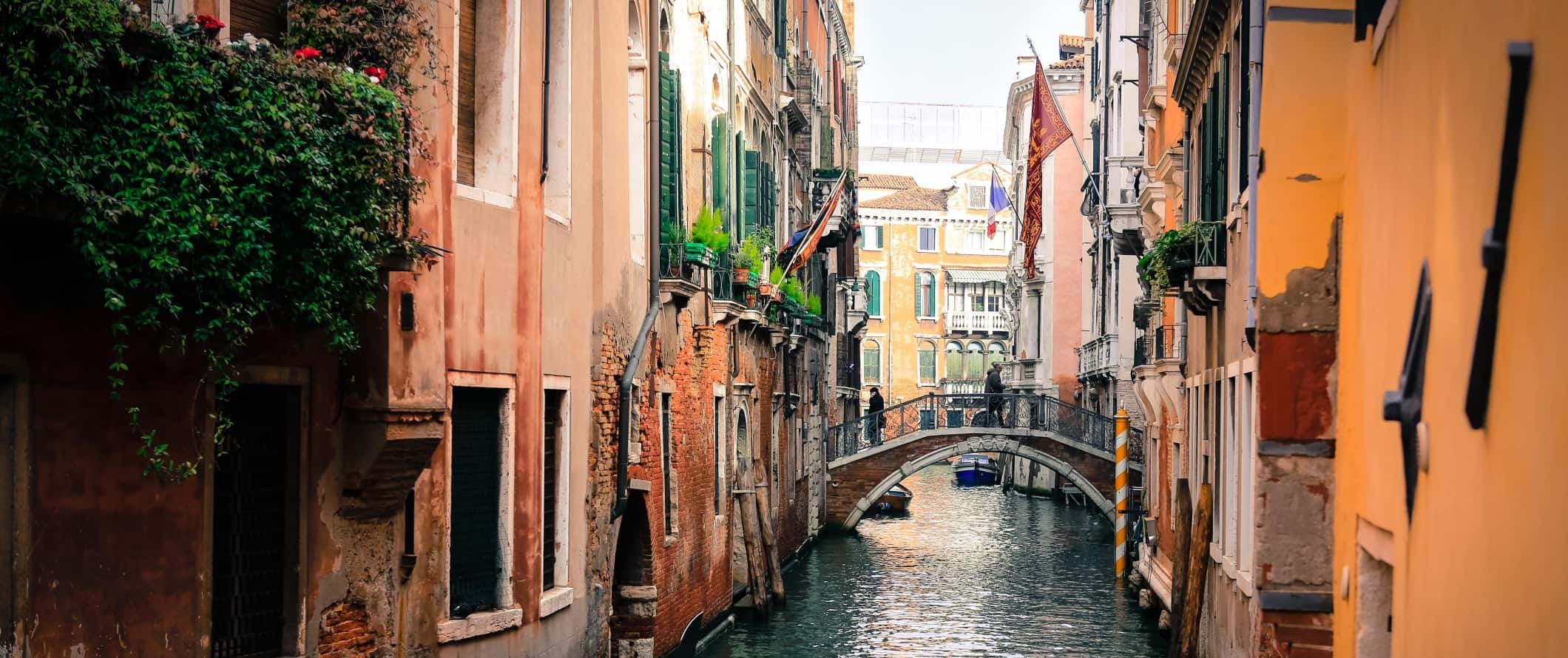
Hostel prices – A dorm bed in a hostel usually costs 27-45 EUR per night for a 4-6-bed dorm in peak season and 22-30 EUR per night off-peak. Private rooms cost between 75-150 EUR per night in peak season and 60-85 EUR in the off-season. Free Wi-Fi is standard and several hostels have kitchens or a bar/cafe on the premises. None of the hostels in Venice currently offer free breakfast.
For those traveling with a tent, camping outside the city costs 15-30 EUR per night for a basic pitch without electricity. There are also small lodges and cabins for 30-50 EUR.
Budget hotel prices – A room in a two-star budget hotel in Venice costs 75-125 EUR per night in peak season and 50-65 in the off-season. Free Wi-Fi is included and some also include free breakfast.
On the main island, Airbnb has private rooms starting from 60-80 EUR per night. Entire apartments go for closer to 125-150 EUR per night. Expect to pay double that price if you don’t book early.
Average cost of food – Italian cuisine is beloved around the world, though every region in Italy offers its own distinct flavor. Tomatoes, pasta, olives, and olive oil form the backbone of most meals, with meat and fish and various cheeses rounding out the menu.
In Venice, seafood is an important staple, with popular traditional dishes being bigoli in salsa (pasta in anchovy sauce), risotto al nero di seppia (risotto with cuttlefish ink), and fried sardines.
Overall, eating in Venice is really expensive. It’s hard to get a cheap meal in the city. If you do want to eat out, it’s better to go out for lunch rather than dinner since lunch menus are often around 15-20 EUR.
If you want to splash out, a mid-range meal with drinks and an appetizer costs 35-50 EUR. A set, 4-course meal is 65-70+ EUR.
Fast food (think McDonald’s) costs around 8.50 EUR for a combo meal. Sandwiches are usually just 3-7 EUR, while pizza is 5-8 EUR for a small and 12-15 EUR for a large.
Beer is 4-5 EUR, a glass of wine is 3-4 EUR, and cocktails start at 7-9 EUR. A latte/cappuccino is closer to 2 EUR while bottled water is 1 EUR.
If you plan on cooking your own food, a week’s worth of groceries costs around 50-60 EUR. This gets you basic staples like rice, pasta, produce, and some meat or seafood.
Backpacking Venice Suggested Budgets
On a backpacking budget of 60 EUR per day, you can stay in a hostel dorm, cook all of your meals, limit your drinking, take public transportation to get around, and do mostly free activities like taking free tours and wandering the markets. If you plan on drinking, add 5-10 EUR to your daily budget.
On a mid-range budget of 145 EUR per day, you can stay in a private Airbnb or private hostel room, eat out for most meals, enjoy a few drinks, take the occasional water taxi to get around, and do more paid activities like day-tripping to the nearby islands and touring the museums and galleries.
On a “luxury” budget of 265 EUR or more per day, you can stay in a hotel, eat out for all your meals, drink as much as you want, take more taxis, and do whatever tours and activities you want. This is just the ground floor for luxury though. The sky is the limit!
You can use the chart below to get an idea of how much you need per day. Keep in mind these are daily averages – some days you’ll spend more, some days you’ll spend less (you might spend less every day, who knows!). We just want to give you a general idea of how to budget your money. Prices are in EUR.
Venice Travel Guide: Money-Saving Tips
It doesn’t matter what time of year you visit, Venice is going to be expensive. That said, here some ways to you can lower your expenses when you visit Venice:
- Don’t eat at Piazza San Marco – This is the area with the most tourists, making it much more expensive. Avoid eating here at all costs, no matter how tempting the cafe patios might be.
- Cook your food – Food is one of the biggest costs in the city so if you’re on a budget it’s a good idea to cook your own meals. It’s not fancy but you’ll save a ton!
- Walk around and get lost – Venice is so beautiful that it’s a thrill just strolling through the city seeing the old building, churches, artists, and, best of all, get a bit of people-watching in.
- Use discount vaporetto tickets – Get a day pass (or multi-day pass) for the water bus if you plan on traveling around the city a lot. It can save you money after just a few trips.
- Get a combined museum pass – There are a couple of main options for combined museum passes: St. Mark’s Square Museum Pass (which costs 26 EUR for admission to all the attractions in St. Marks Square) or the Venice Museum Pass (which costs 36 EUR for admission to the St. Marks’ Square museums as well as 9 other museums, including the Murano Glass Museum).
- Get the Venezia Unica Pass – If you are going to do lots of sightseeing, this pass gives you discounts to the top museums, tours, and attractions. It is priced to save you money when compared to buying separate tickets. You go online and pick out what you want to see ahead of time. The price varies depending on what you want to see but you’ll save a lot.
- Buy your own booze – You can buy a great bottle of wine for under 10 EUR at the store. Getting your own bottle is a much more economical way to drink. Sit in one of the squares, have a glass of wine, and watch the world go by.
- Stay with a local – Accommodation is very expensive in Venice. Try using Couchsurfing to stay with locals for free and make a new friend to show you around this amazing city.
- Go on a free walking tour – This is the best way to learn about the city on a budget. Just be sure to tip your guide at the end!
- Bring a water bottle – The tap water here is safe to drink so bring a reusable water bottle to save money and reduce your plastic use. LifeStraw is my go-to brand as their bottles have built-in filters to ensure your water is always clean and safe.
Where to Stay in Venice
Finding an affordable place to stay in Venice is challenging, but not impossible. My recommended places to stay in Venice are:
- Generator Venice
- Anda Venice (10% off, a free welcome drink, and free city map if you’re a member of HostelPass )
- Ostello S. Fosca – CPU Venice Hostels
- Camping Serenissima
How to Get Around Venice
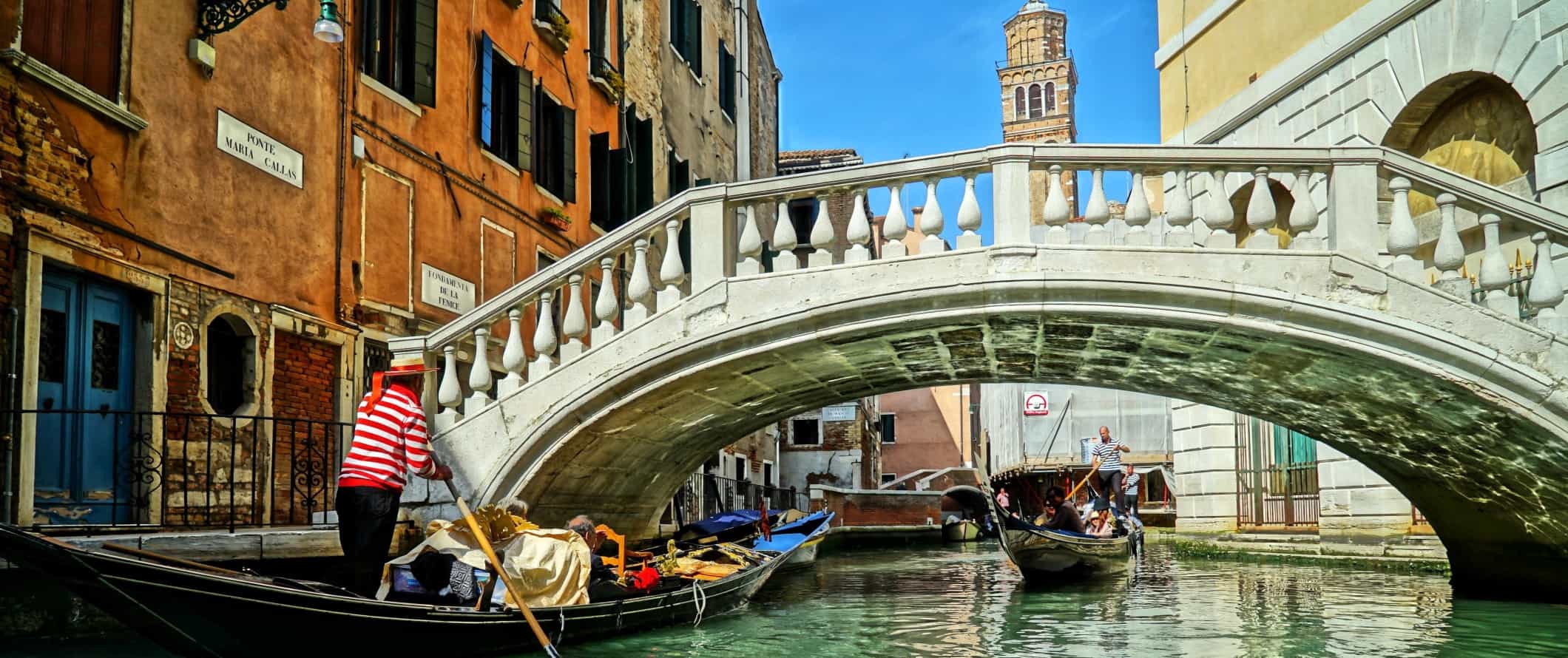
Venice is a pedestrian city. Unless you’re taking water taxis or floating buses, you’ll be walking everywhere.
Vaporetto – A vaporetto is a floating “bus” that can get you just about everywhere you need to go. They’re not cheap, with one-way tickets costing 7.50 EUR. Tickets are valid for 75 minutes. You can get a 24-hour pass for 20 EUR, a 48-hour pass for 30 EUR, a 72-hour pass for 40 EUR, or a 7-day pass for 60 EUR.
If you’re traveling to Murano, Torcello, or Lido, you’ll be on the same vaporetto system but on a larger boat known as motonave . The prices are the same.
When to Go to Venice
Venice is at its peak busyness in the summer. Prices skyrocket and the crowds are intense. Temperatures hover around 18-28°C (66-83°F) from June through August. If possible, I’d avoid visiting during this time as the city is bursting with cruisers and the crowds are massive.
Spring is a beautiful time to visit since temperatures are more manageable, usually between 17-22°C (63-72°F), and the city is not overly crowded.
Tourism also eases off in the fall and winter, and temperatures are cooler, ranging from 4-12°C (44-55°F). However, this is also known as the acqua alta (“high water”) period, where flooding in the streets can occur.
In February, Carnevale takes over the city. It’s a great time, but expect chaos and inflated prices.
Overall, you’re going to face crowds whenever you go, but if you can avoid peak summer you’ll find the city pleasant to visit.
How to Stay Safe in Venice
Venice is a very safe place to backpack and travel. As with most of Italy’s cities, Venice’s biggest safety risk is petty theft and pickpocketing. This is especially true in crowded tourist areas and on public transportation, so keep a close eye on your belongings and never flash your valuables when out and about.
Scams here are rare, but if you’re worried about getting ripped off, you can read about common travel scams to avoid here.
Solo female travelers should generally feel safe here, however, the standard precautions apply (never leave your drink unattended at the bar, never walk home alone intoxicated, etc.)
If you come during autumn or the winter, you may be at risk for acqua alta (“high water”). Flooding is a common occurrence due to rising ocean levels. Choose accommodations closer to the upper part of town, near Piazzale Roma or the rail station.
If you experience an emergency, dial 113 for assistance.
Always trust your gut instinct. Make copies of your personal documents, including your passport and ID. Forward your itinerary along to loved ones so they’ll know where you are.
The most important piece of advice I can offer is to purchase good travel insurance. Travel insurance will protect you against illness, injury, theft, and cancellations. It’s comprehensive protection in case anything goes wrong. I never go on a trip without it as I’ve had to use it many times in the past. You can use the widget below to find the policy right for you:
Venice Travel Guide: The Best Booking Resources
These are my favorite companies to use when I travel. They consistently have the best deals, offer world-class customer service and great value, and overall, are better than their competitors. They are the companies I use the most and are always the starting point in my search for travel deals.
- Skyscanner – Skyscanner is my favorite flight search engine. They search small websites and budget airlines that larger search sites tend to miss. They are hands down the number one place to start.
- Hostelworld – This is the best hostel accommodation site out there with the largest inventory, best search interface, and widest availability.
- Booking.com – The best all around booking site that constantly provides the cheapest and lowest rates. They have the widest selection of budget accommodation. In all my tests, they’ve always had the cheapest rates out of all the booking websites.
- HostelPass – This new card gives you up to 20% off hostels throughout Europe. It’s a great way to save money. They’re constantly adding new hostels too. I’ve always wanted something like this and glad it finallt exists.
- Get Your Guide – Get Your Guide is a huge online marketplace for tours and excursions. They have tons of tour options available in cities all around the world, including everything from cooking classes, walking tours, street art lessons, and more!
- The Man in Seat 61 – This website is the ultimate guide to train travel anywhere in the world. They have the most comprehensive information on routes, times, prices, and train conditions. If you are planning a long train journey or some epic train trip, consult this site.
- Rome2Rio – This website allows you to see how to get from point A to point B the best and cheapest way possible. It will give you all the bus, train, plane, or boat routes that can get you there as well as how much they cost.
- FlixBus – Flixbus has routes between 20 European countries with prices starting as low 5 EUR! Their buses include WiFi, electrical outlets, a free checked bag.
- SafetyWing – Safety Wing offers convenient and affordable plans tailored to digital nomads and long-term travelers. They have cheap monthly plans, great customer service, and an easy-to-use claims process that makes it perfect for those on the road.
- LifeStraw – My go-to company for reusable water bottles with built-in filters so you can ensure your drinking water is always clean and safe.
- Unbound Merino – They make lightweight, durable, easy-to-clean travel clothing.
- Top Travel Credit Cards – Points are the best way to cut down travel expenses. Here’s my favorite point earning credit cards so you can get free travel!
- Walks of Italy – This walking tour company provides inside access to attractions and places you can’t get elsewhere. Their guides rock and they have some of the best and most insightful tours in all of Italy.
- BlaBlaCar – BlaBlaCar is a ridesharing website that lets you share rides with vetted local drivers by pitching in for gas. You simply request a seat, they approve, and off you go! It’s a cheaper and more interesting way to travel than by bus or train!
Venice Travel Guide: Related Articles
Want more info? Check out all the articles I’ve written on backpacking/traveling Italy and continue planning your trip:

The 6 Best Hotels in Florence
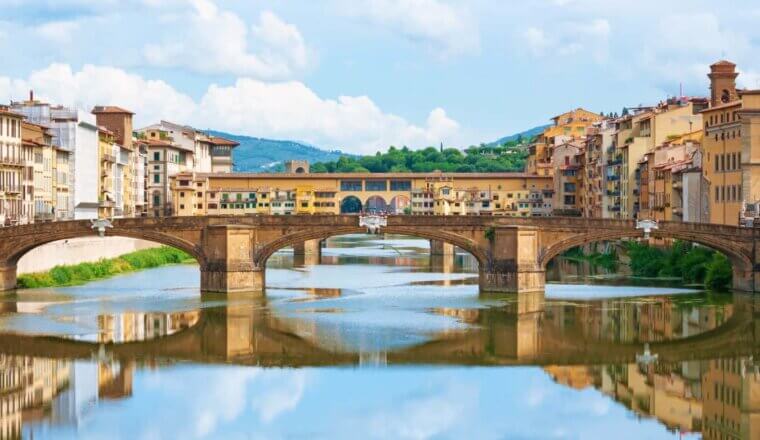
Where to Stay in Florence: The Best Neighborhoods For Your Visit
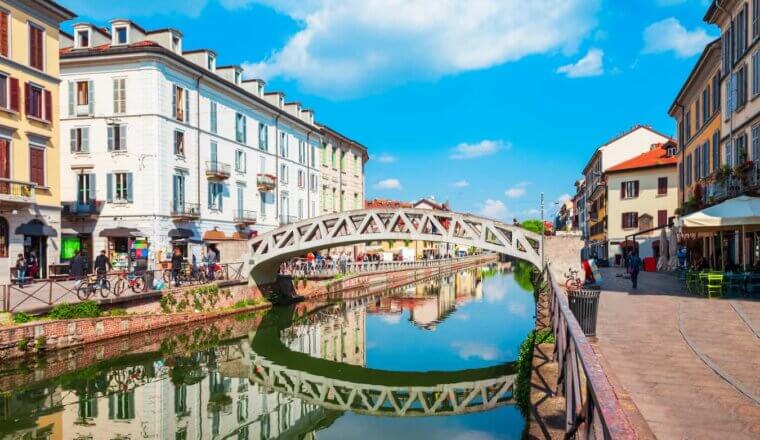
Where to Stay in Milan: The Best Neighborhoods for Your Visit
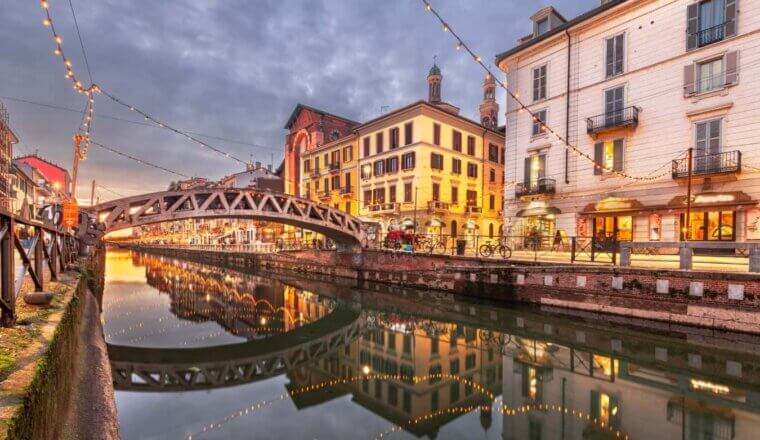
The 6 Best Hotels in Milan
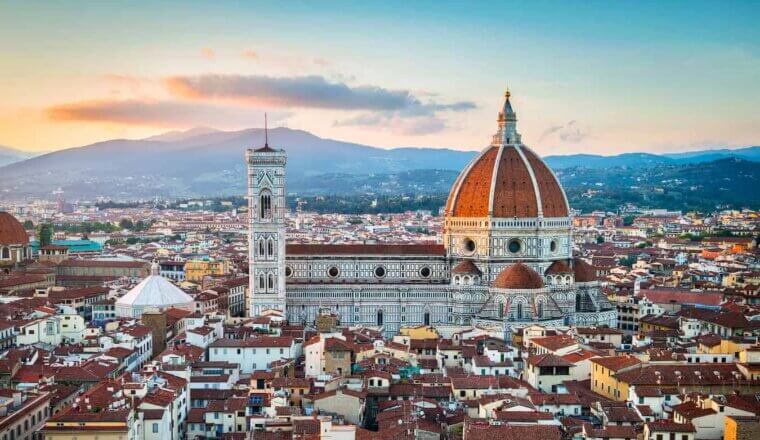
The Best Walking Tours in Florence
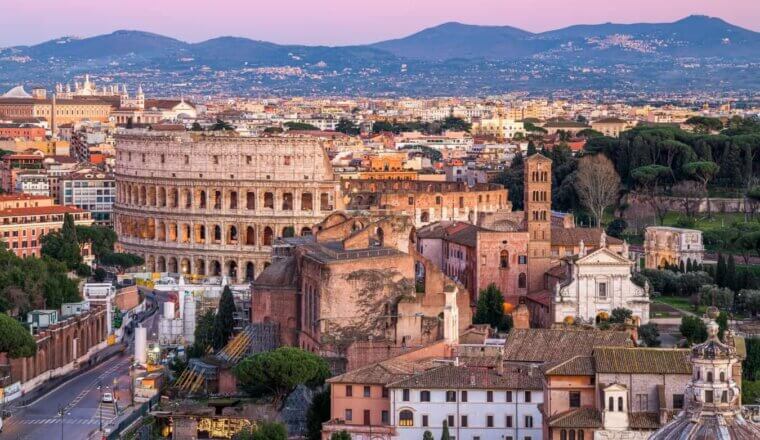
The 8 Best Hotels in Rome
Get my best stuff sent straight to you, pin it on pinterest.
- Where To Stay
- Transportation
- Booking Resources
- Related Blogs
www.Venice.nu

Venice Vaporetto (Water Bus) Map
The 2023-24 vaporetto network map for Venice shows all the city’s public ACTV water-bus routes and stops, as well as the Alilaguna lines from Marco Polo Airport, and lines to the Lido and other islands. You can open and save the pdf map to your phone or download and print it. The map is updated frequently, so beware of older versions!

For a precise location of each vaporetto stop , take a look at the street map of Venice . For timetables and passes , see below.
How do I get from Marco Polo airport to my accommodation in Venice?
An easy way to work out the best public transport route from Marco Polo Airport to your hotel or apartment is to use our route finder . Enter your destination in the box and you’ll see details of public transport options by land and water as well as links to privately run airport shuttle buses.
An alternative to land and water buses is a water taxi all the way to – or close to – your destination in the city. Water taxis are expensive unless you’re travelling in a group, but a shared water taxi works out much cheaper. Shared water taxis need to be arranged in advance.
Timetables and further information
Here’s a link to vaporetto timetables . Further information about public transport on water and land in and near Venice is on the websites of actv.it and veneziaunica.it.
Public transport passes
Vaporetto tickets are very expensive for non-residents of Venice (9.50 Euros for a one-way ride in 2023). So a transport pass may save money if you plan to use water-buses a lot.
Advice and reviews
If you have questions about public transport or any aspect of travel to or in Venice, we recommend Tripadvisor’s Venice Travel Forum , which supplies answers from experienced travelers and local residents – usually within hours ! It’s well worth consulting their reviews of hotels and restaurants too.
Featured image at top of page by Marc Ryckaert (MJJR) [ CC BY 3.0 ],
19 thoughts on “Venice Vaporetto (Water Bus) Map”
I’ve been spending days trying to figure out a step-by-step guide (for me) to get from the airport to St. Marks Square. Here is what I have. Please let me know if you disagree with any of this. Thank you.
(1) Airport to Piazzale Roma via land bus: Venice Marco Polo International Airport is on the Italian mainland at Tessera, just north of Venice. Piazzale Roma is the main automotive point of entry into Venice’s historic center. At the airport, purchase your ticket from the blue machines inside the airport near the baggage claim area, or just near there outside of the Arrivals Hall near the pickup point at the end of the walkway. Look for the bus marked “P.le Roma”. *You will need Euro bills to purchase your ticket. *Remember to validate your ticket in the yellow machine near the bus stop. Two different bus routes are available, and both are inexpensive: -ATVO bus to Piazzale Roma city terminal leaves from the platforms outside the arrival hall. ATVO, a regional bus company, has comfortable coaches with room for your luggage beneath the passenger compartment. Buses run nonstop between the airport and Piazzale Roma. The drive takes approx. 20 min. ***It is also possible to purchase a one way Bus+Vaporetto ticket for the bus to Piazzale Roma and a one way vaporetto trip within a total of 90 minutes at a cost of €12.00.*** -ACTV bus n5 to Piazzale Roma city terminal leaves from the platforms outside the arrival hall. ACTV, the Venice public-transit agency, operates the Linea 5 “Aerobus” to Piazzale Roma, with local stops along the two-lane road from Mestre. The drive takes approx. 25 minutes. *NOTE* Taking the ATVO bus back to the airport from the Piazzale Roma is somewhat trickier, only because so many buses arrive at any given time and finding the one marked for the airport is not always easy. We had to ask several drivers before we found the ATVO bus (I think it is painted green). (Area Bay D2.) Tickets may be purchased at the ATVO Terminal office across from the Piazzale Roma or from machine outside of the office.
(1-A) Piazzale Roma to San Marco Giardinetti stop via Vaporetti (water bus #1?): After arriving at the Piazzale Roma, look for the Hellovenezia office, which is a tile-roofed building near the tree-lined side of the square and the modern Calatrava Bridge. It sells tickets for public water buses (vaporetti) and land buses, along with Tourist Travel Cards (12 hours to 7 days) for longer visits. If the lines at the Hellovenezia office are long, bypass them by purchasing your transit tickets at the newsstand in the middle of the square. This is also a good place to buy tickets for ATVO airport buses.
After you’ve bought your tickets, walk down the steps on either side of the small garden near the ACTV office to reach the landings for water buses and water taxis. (Vaporetti or water buses are far less expensive than water taxis, although the latter may be convenient if your hotel is on a side canal and you can split the fare with other members of a group). **Once you’ve bought your ticket, don’t forget to validate it in the machines available at each vaporetto station just before you walk the plank toward the canal and the vaporetto.**
(2) Airport to Piazzale Roma via WATER bus (Note that the waterbus services that run to and from the airport are operated by a different company (Alilaguna) than the other public waterbus services in Venice, so separate tickets will be required): When you’ve claimed your baggage and obtained a free luggage cart, go to the money-exchange window and buy euros. Better yet, use the Bancomat (ATM), where you’re likely to get a better exchange rate. Next, follow the signs outside the terminal doors to the Alilaguna water bus (perhaps, also in the arrivals area). Purchase a Venice airport boat ticket to the Piazza San Marco Giardinetti. Alilaguna fares for the ‘normal’ ferries, which take about 1 hour 20 minutes to reach San Marco via Murano Colonna and the Lido on the Blu line, or slightly less time on the “Arancio” (Orange) line via the Grand Canal are – Murano – € 7 or – All Venice stops/Lido/Stazione Marittima – € 15. Turn left on leaving the terminal and walk 10 minutes along the covered walkway to the boat jetty (A direct waterbus from the airport may be more convenient than taking the bus to the bus station and then changing to the local waterbus). Take the water taxi or water bus to San Marco Giardinetti boat platforms (Alilaguna airport boats use this stop). Alilaguna water-bus costs €15 for a leisurely 75 minute boat trip. Take the A (orange) or O (gold) lines to get to the San Marco Giardinetti stop. • Alilaguna water Bus to Venice city centre (St. Mark’s Square). The boats leave from the pier (darsena). The ride takes approx. 1h.15m.
(2-A) AirportLink: This is a recently introduced service provided by Alilaguna. It is NOT a private water taxi. It is an exclusive shared boat service from Venice Marco Polo Airport to the major point of interests in Venice centre. The price is €27 per person. This is a shared launch and not an exclusive water taxi so a minimum of 2 passengers are required and the launch may wait for as much as 40 minutes to fill up. Nevertheless you can enjoy a water transfer across the lagoon to near to your hotel. But the launch may well be making stops at other traveler’s destinations as it is a shared service. It is faster than the normal Alilaguna ferry once you have finally departed at a little more than the Alilaguna public lines’ price. You reach central Venice in just 30 minutes! Airport Link service is not a private water taxi, so it usually stops nearby to the hotels, one by one, depending on the ultimate destinations of your fellow travellers. If you need to reach the private pier of your hotel without intermediate stops, do consider a transfer by private water taxi.
(3) Walking Around: Be aware that addresses in Venice are of the form DISTRICT NUMBER (The Venetian word for district is “Sestriere”), not STREET NUMBER. To find a specific place using a map, make sure you know which district it is in. The numbers are assigned at the start of the district and increase as they move farther away from the Grand Canal. Finding your way back to your hotel is easy. Simply look for the street sighs that say the name of your final destination (They have arrows pointing the way you should follow).
Michel, your research is a good summary of the options for getting from Marco Polo Airport to San Marco. Just a couple of corrections/clarifications: Your paragraph 1A: – Vaporetto line 1 currently stops at San Marco Valarresso, which is very close (50 metres) to San Marco Giardinetti. Line 2 goes to the latter. So you could get either 1 or 2. Routes change occasionally so check the map at the stop before you get on. Another caveat: at Piazzale Roma, make sure you get on the vaporetto going in the right direction i.e. coming from your left and heading right along the canal. Line 2 goes in both directions. Your paragraph 2 should read “Airport to San Marco via water bus” – The airport waterbuses run by Alilaguna go to San Marco, but NOT via P.Roma. I can’t see anything else that’s wrong. Prices can change of course. Enjoy your stay in Venice. There is no place like it on Earth.
Admin, Thank you so much. I have updated my information on my computer. I was really hoping somebody would correct anything that was incorrect. Now, I won’t do the wroing thing and end up in some other Country. Hahaa. Thank you. Michel
Thank you both Michel and Admin, I am visiting Venice next month and this is truely invaluable!!!
Hi, we are arriving at the airport, and staying near the Accademia & Salute ferry stops, can you suggest the best line to use?
Kevin. Personally, I would take a bus from the airport to Piazzale Roma (See Michel’s detailed description above) and then vaporetto line 1 down the Grand Canal, getting off at either of those stops. It’s convenient, quick, cheap, and you get one of the best boat trips on Earth.
- Pingback: Ready, Set, Go: Your Guide to Cruise Europe - Airfare and Transportation - Cruise Radio
How can I get from the port where the cruise ships dock to st. mark’s square where my hotel is going to be at? Are there daily departures to the murano and burano islands within walking distance from st mark’s square?
We will be arriving at Mestre Train Station and staying in Dorsoduro area. Please advise how to reach our apartment area from the station.
We are out flying from Treviso Airport. Is it possible to take a bus from P. Roma directly to this airport?
Sharon, Beryl and others. This website is not monitored daily. So for a quick answer to your questions, may I recommend that you ask them on the Venice forum at tripadvisor? http://www.tripadvisor.co.uk/ShowForum-g187870-i57-Venice_Veneto.html This will give you a very quick same-day answer in most cases as the forum is very active with many members on the spot in Venice and happy to answer questions. Enjoy your trip.
- Pingback: Sunset in Burano, Venice | Crackle White Travel Blog
We will be staying on the Lido. The map appears to show two waterbus lines between Marco Polo airport and Lido, the B and R. What is the difference and which one is preferable?
Just two different routes. The red goes via Murano island; the blue goes via the main island. Similar journey times. The blue line is twice hourly, red once. So I’d take whichever one is going next.
Michel certainly laid out the technique very well. Staying at hotel Lato Azzurro, Via Forti 13, on Snt Erasmo. What is the best way, lowest price, from the airport and what would be the approximate price? How is the vaporetta price determined when you make a connection between two routes without going ashore? You certainly provide clear answers.
Hi Donald. You can find details of how to reach Lato Azzurro at http://www.latoazzurro.it/eng/how-to-reach-us.html . By public transport, take the Alilaguna blue line from Marco Polo airport to Fondamente Nove in Venice and then the no. 13 vaporetto from there to Capannone on Sant Erasmo island. These lines are separate companies, so you you’ll need a ticket for each one. Total cost about 20 Euros per person. It’ll be a long trip (2 hrs minimum) with a wait of up to 40 mins at Fondamente Nove. No problem if you have plenty of time. Otherwise consider a direct water taxi. Or a shared water taxi – though check first that they are willing to go to Sant Erasmo, which is not one of the main islands, for the same price.
Hi, I am travelling to Italy with my wife and two dogs in Early April, we both have walking difficulties. We will be trying to stay around Fusina. Could you please advise me if dogs are allowed on the Vaporette’s, and do they travel around Venice or do they just have an A to B route.
Many thanks for any information you can supply.
Best regards Bill
Bill. Dogs can travel free on the vaporetti as long as they wear muzzles. There are various vaporetto lines to different parts of the city and the islands – like bus lines in any other city. See the map. Enjoy your trip.
Dear All, I am travelling to venice on 6 MAY 2015 and I will reach Marco Polo at 10:00 AM. And I have to take the flight from Marco Polo to Lisbon at 5:00 PM on the same day. Kindly suggest me regarding the city trip. Is it possible to take a short city view in between 10 AM and to 5PM. And if yes which will be the best route for me via Vaporette (which line I should take). Mainly I want to cover Grand canal and other stop in between the way of Grand canal. Kindly suggest.
The answer’s Yes . For details, please ask your question on the Travel Forum .
Comments are closed.
Maps, news, tips, topics & travel tools

Venice Public Transport
Venice is a very small city. This article includes all the necessary information on how to get around Venice on local transport.
The first thing you should know about Venice is that it is very small; therefore, if you are staying in the center, you won’t need to take any means of transport to move around the city . It is possible to get from one end of Venice to the other by foot in just half an hour.
Water Taxis
Gondola rides, travel cards and tickets.
For more information on existing discounts to take the public transport system in Venice, check out our article on the best money-saving tips.
You may also be interested in
Piazzale roma.
Piazzale Roma is a large square where the Ponte della Libertà ends and where the central bus station is in Venice.
Taxis, ambulances, and police cars in Venice are all waterborne, as are the water buses (called vaporetti in Italian). Here you can find information on its lines, rates, and schedules.

IMAGES
VIDEO
COMMENTS
Icons on the Venice interactive map. The map is very easy to use: Check out information about the destination: click on the color indicators. Move across the map: shift your mouse across the map. Zoom in: double click on the left-hand side of the mouse on the map or move the scroll wheel upwards.
Santa Croce is next to San Polo along the Grand Canal. If you're arriving in Venice by bus or taxi this is the closest sestiere, and it's not far from the train station. Santa Croce is one of the least touristy parts of Venice and another of the oldest areas. The oldest parts of the University are in Santa Croce.
Not quite. To see how Venice changed, the best thing to do is to look at the most famous map of Venice, the "Veduta di Venezia", the "View of Venice", by Jacopo de' Barberi. This map of Venice, created in 1500, is a gigantic woodcut made on 6 panels which measure a total 1,3 m x 2,8 m!
Take our free printable tourist map of Venice on your trip and find your way to the top sights and attractions. We've designed this Venice tourist map to be easy to print out. It includes 26 places to visit in Venice, clearly labelled A to Z. With this printable tourist map you won't miss any of the must-see Venice attractions.
9:00 Meander from St. Mark's Square to the Rialto Bridge, ideally off the main thoroughfares, and — even better — following our Venice guidebooks ' self-guided "St. Mark's to Rialto Loop Walk" as far as the Rialto Bridge. 10:00 Enjoy the action at the Rialto Bridge and Rialto Market. 11:00 Make your way to the Frari Church via the San Polo ...
Below, you can find our recommended Venice itinerary for three days. Per day, we share detailed info about all the places that you can visit, coupled with practical info and tips. Further below, you'll find a short overview of the 3-day Venice itinerary and a MAP indicating each place mentioned in our guide.
Walking: Perfect for strolling, Venice is full of walkable alleyways.Signs help you find landmarks. Vaporetto (Water Bus): Like a bus, but on water.Route #1 offers scenic canal views, #2 is quicker. Traghetto: Gondola-like boats for quick Grand Canal crossings.Only 2 euros. Gondola Rides: Iconic but pricey (80 EUR for 30 mins).Agree on price first.
Venice is a unique and enchanting city on a lagoon, where you can explore its rich history, culture and architecture. Mapcarta, the open map, offers you detailed and interactive maps of Venice and its surroundings, as well as travel tips and information. Discover the beauty and charm of Venice with Mapcarta.
Venice ; What to see. St. Mark's Square. St. Mark's Square; St. Mark's Basilica; St. Mark's Campanile; Doge's Palace; Rialto Bridge; Bridge of Sighs; Arsenal; Basilica of Santa Maria della Salute; Ca' Rezzonico Museum; Venice Carnival; Travel Guides. History of Venice; Free mp3 audio guides; Photos & Maps. Interactive map of Venice; Pictures of ...
Venice Map and travel guide, Italian interactive Venezia map for Venice visitors, information like food and drink, waterbuses and gondolas at veniceXplorer. The City. Introducing Venice, Italy; Venice Itineraries. San Marco Fullday Itinerary; San Marco and Castello Itinerary;
4. Canale Grande (Grand Canal) Canale Grande (Grand Canal) Sweeping through the heart of Venice in a giant reverse S curve, the Grand Canal is the principal boulevard through the city, connecting Piazza San Marco, Rialto Bridge, and the arrival points of the rail station and bridge from the mainland.. Only four bridges cross its 3.8-kilometer length, but stripped-down gondolas called traghetti ...
If your Venice sightseeing plans include one day or a few days, you'll find this Venice travel guide helpful. The guide includes Venice sightseeing walking map, Venice hotels, Venice restaurants, Venice day trips, and escorted Italy tours that include Venice. Venice is also a popular embarkation and disembarkation port for Adriatic and ...
If your schedule is tight, you can manage to experience the main attractions of Venice in one or two days. Focus on the main sights such as St Mark's Square, St Mark's Basilica, Doge's Palace, take a gondola ride and perhaps stroll the streets. However, this will not allow you to explore more than the iconic sites.
Download our free map of Venice city in pdf format, perfect for your smartphone or tablet.. or you can simply print it out and take it with you. This map shows where the main Venice attractions are and on the last page you can also find all the routes of Actv public boats (vaporetto). Click on the image to download the map: Enjoy… it's free!
Spring. In the spring, Venice starts to defrost, with temperatures rising from 12ºc/54ºf in the latter half of March to the low 22ºc/72ºf in May.In the early part of spring, you will definitely need to pack warm clothes and an umbrella, as March can bring quite a bit of rain.. May is considered one of the best times to visit Venice. The weather is lovely, the city has yet to be overrun ...
Venice, one of Italy's top cities, is comprised of six sestieri (singular sestiere) or neighborhoods. The Grand Canal, which is the city's main waterway, not only separates these neighborhoods but also provides residents and visitors with a primary mode of transportation. Take a look at this sestiere map and learn more about each neighborhood ...
Download Venice Travel Guide and Map and enjoy it on your iPhone, iPad, and iPod touch. Offline Maps and much more! Discover new places and insider tips. Collect, save and organize them as you like. And have the best trip ever! With us, traveling got easier and even more fun. Here's what you get - the shortest possible version: • Free ...
Tourist Maps Hits: 12289. Interactive map of Venice to help you find tourist information centres, hotels, restaurants, shops and attractions for your trip or vacation in Venice city centre. + −. Leaflet. VENICE NAMES.
For those traveling with a tent, camping outside the city costs 15-30 EUR per night for a basic pitch without electricity. There are also small lodges and cabins for 30-50 EUR. Budget hotel prices - A room in a two-star budget hotel in Venice costs 75-125 EUR per night in peak season and 50-65 in the off-season.
Venice Walking Tour The Walking Tour Route. Distance: . This self-guided walking tour loop is 2.8 miles/4.5 km long. The Libreria Acqua Alta is the half-way point of the walk, to the far right of the map.. Walk half the loop or do the full tour. Either way, it's a great way to spend the day exploring the less-trodden neighborhoods of Venice.
The 2023-24 vaporetto network map for Venice shows all the city's public ACTV water-bus routes and stops, as well as the Alilaguna lines from Marco Polo Airport, and lines to the Lido and other islands. ... If you have questions about public transport or any aspect of travel to or in Venice, we recommend Tripadvisor's Venice Travel Forum, ...
Venice Marco Polo Airport: Venice cruise port: US$ 77: Book Treviso Airport: Venice cruise port: US$ 119.70: Book Santa Lucía Station: Hotel in Venice: US$ 96.20: Book Santa Lucía Station: Lido (Santa Maria Elisabetta stop) US$ 96.20: Book Santa Lucía Station